PMM



ENTER THE CPD ZONE!
YOU COULD EARN ONE CPD CREDIT THIS MONTH

interviews with THE IMI, VLS & MOTOR OMBUDSMAN

100-YEAR-OLD GARAGE
PMM YOUTUBE CHANNEL LAUNCHED

BEN JOINS MECHANEX-PMM LIVE SEMINAR LINE-UP
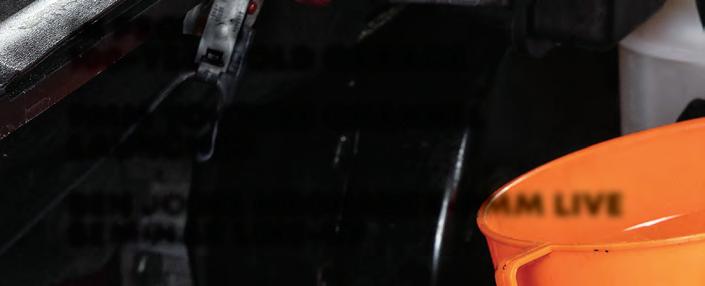
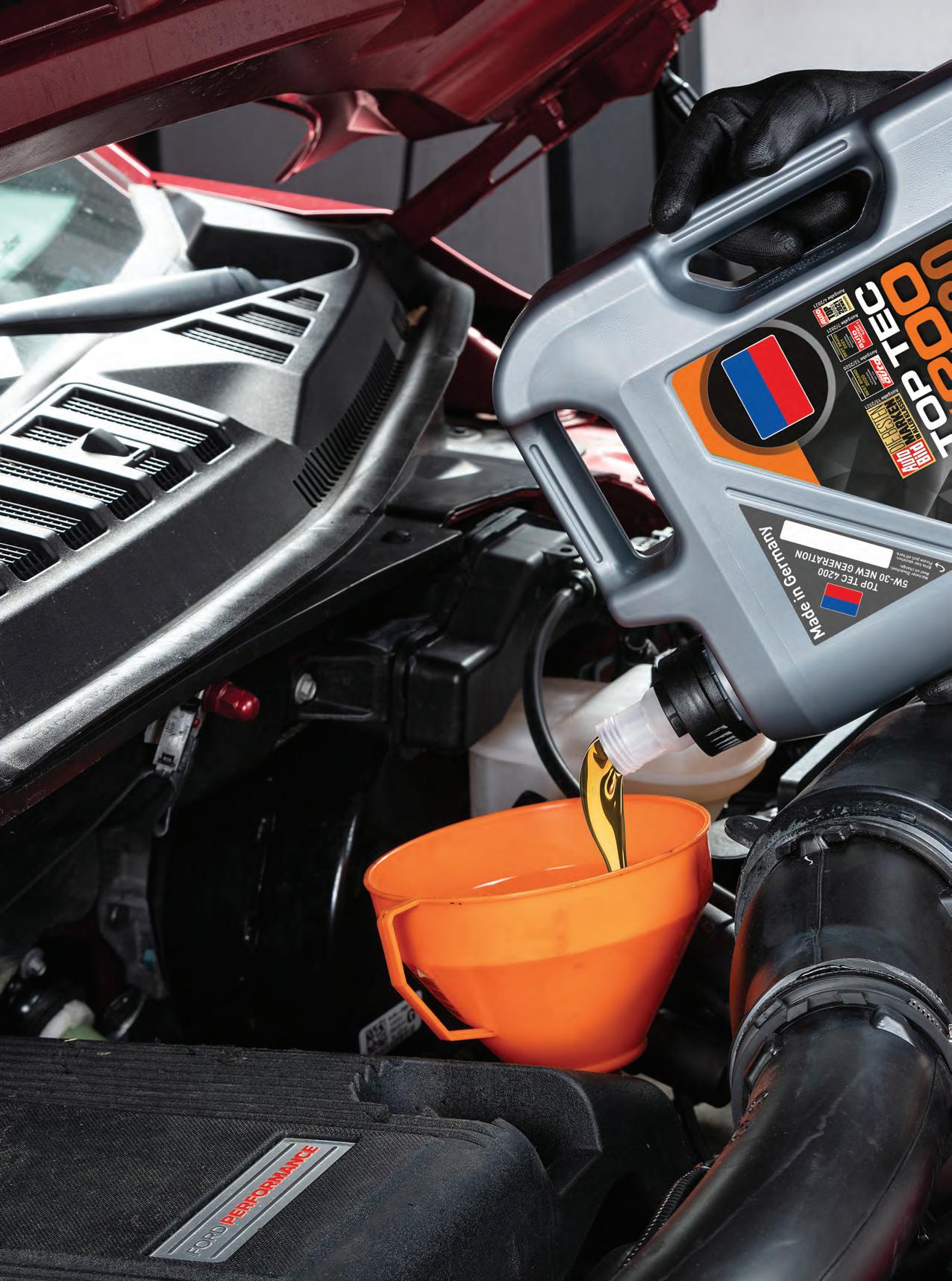
Let’s get technical
INSTALLATION TIPS ON CLUTCHES & TIMING BELTTENSIONERS
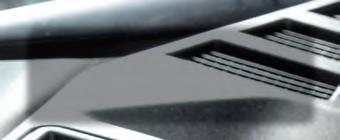


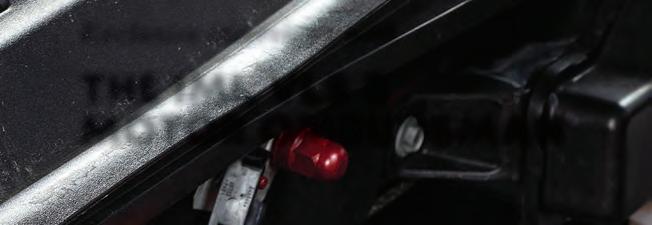
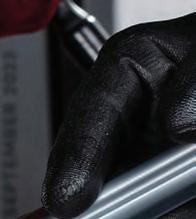
BEST PRACTICE ON OIL CHANGES, SHOCK ABSORBERS & TURBOS


COMMON FAULTS: STOP-START DRIVING INCREASING SLUDGE IN OIL

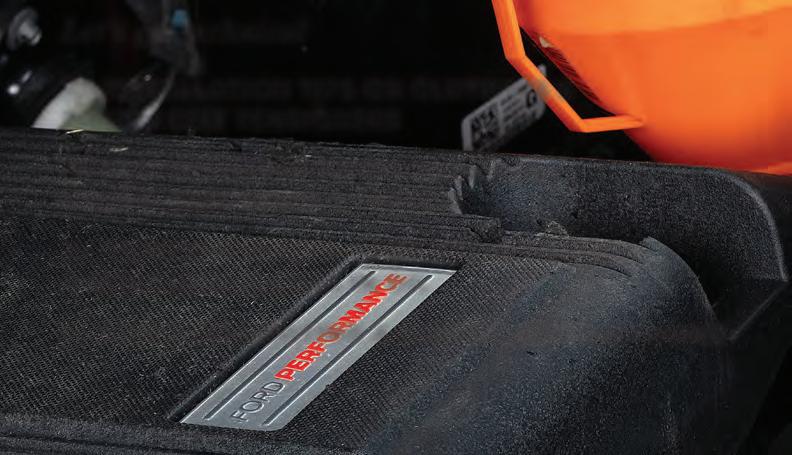
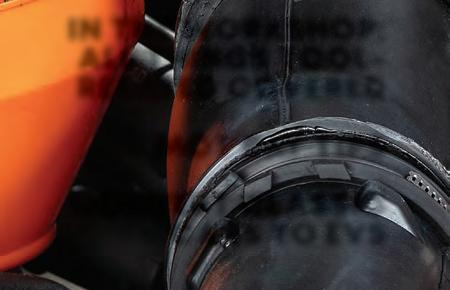

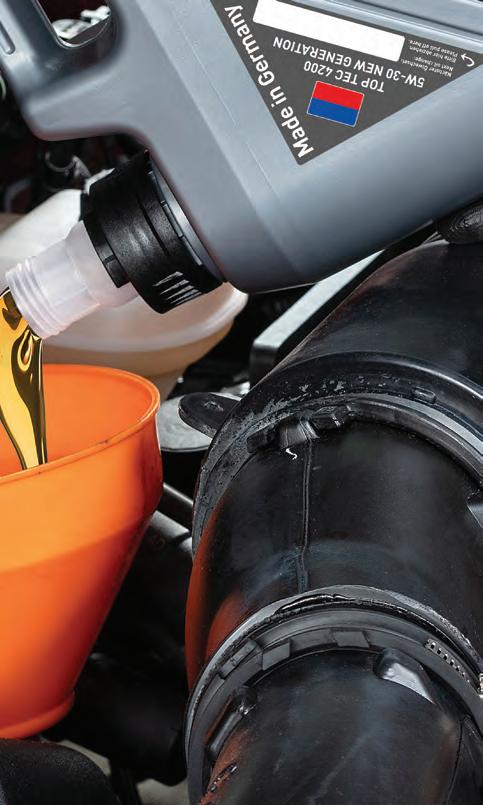
IN THE WORKSHOP: ALL THINGS TOOLRELATED COVERED
MOT BAY TIPS CONVERT CLASSIC CARS TO EVS

FREE TOTHE TRADE
SEPTEMBER 2023 PROFESSIONAL M
M ECHANIC
OTOR
TROUBLESHOOTING A BMW E61 LOSING POWER
Exclusive
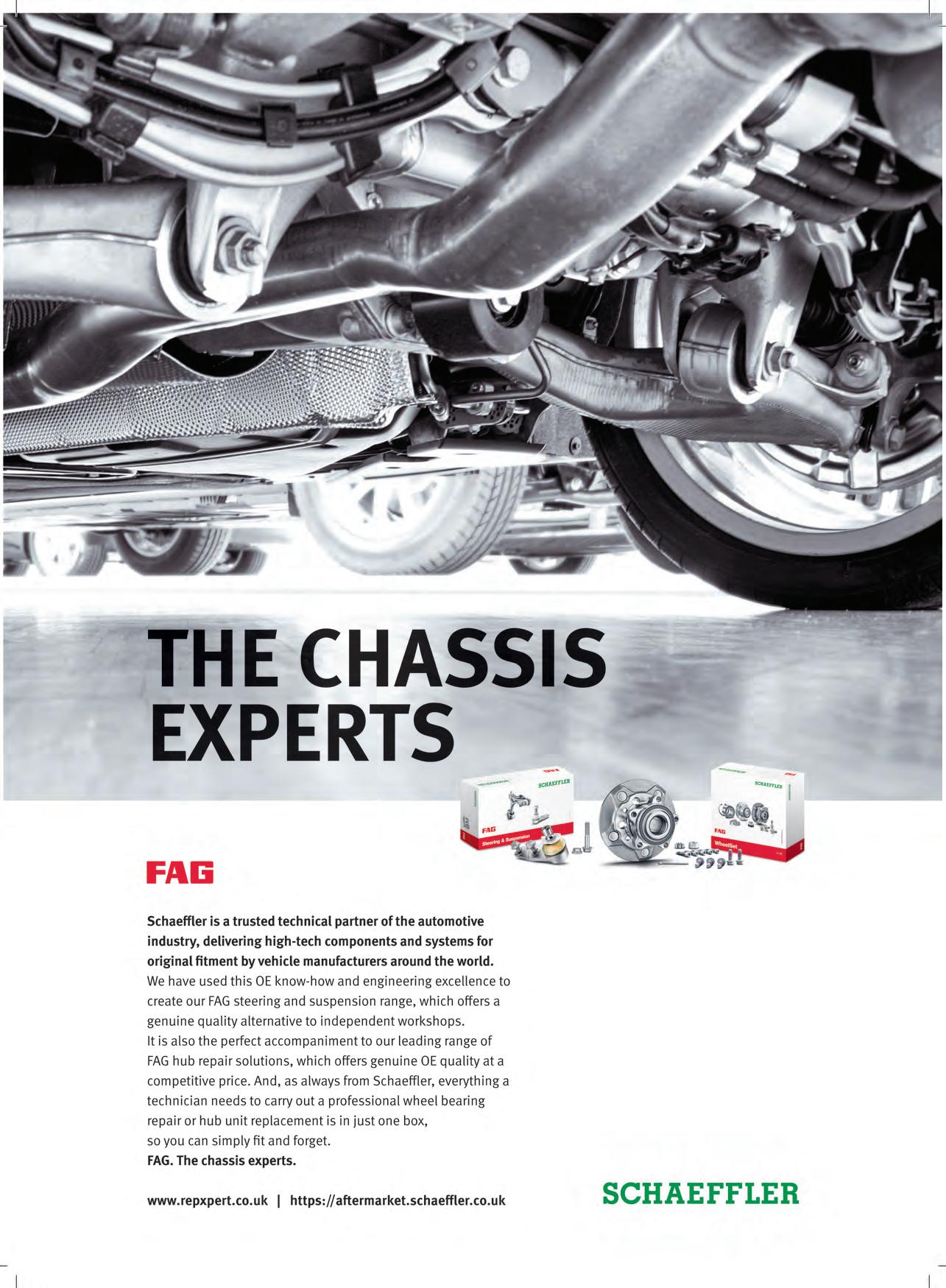

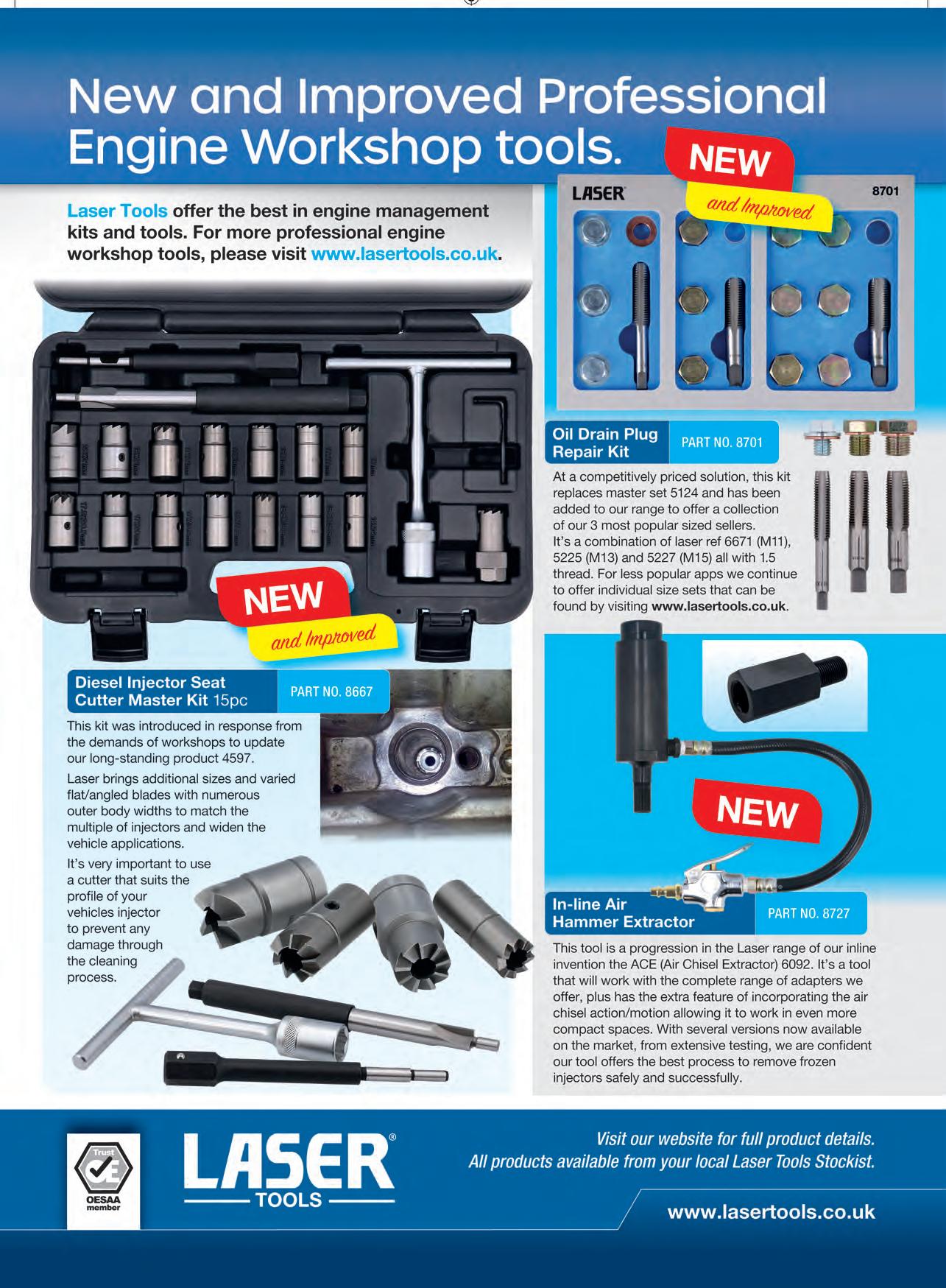
Editor’s Picks

26 COMING IN CLUTCH
In the CPD Zone this month, Shaeffler’s REPXPERT Alistair Mason is replacing the clutch and dual mass flywheel in a 2012 Ford Focus 1.6 Ecoboost.
37
KNOWLEDGE IS POWER
With technology and coding now seeping into every aspect of the workshop, Delphi’s training solutions are aiming to take the pressure off and help train and retain your staff.
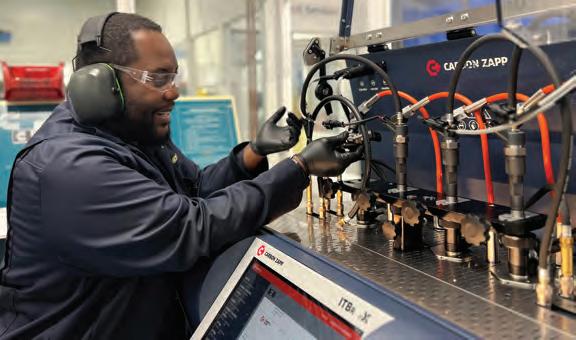
38 CLASSICS MADE MODERN
If you’ve ever considered converting a classic car into an EV then make sure to catch the first part of our articles on Fellten, a company that provides kits and assistance to workshops tackling conversion.
60 LIGHTING UP THE MOT
With the MOT season looming, lighting and accessories supplier Ring is advising technicians to consider upselling opportunities to help customers tackle shorter days and darker evenings.
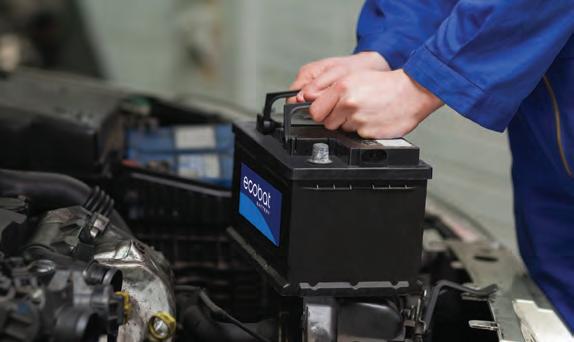
69-73 BATTERIES & IGNITION

Contents VOLUME 24 ISSUE 8 SEPTEMBER 2023 Features Total Average Net Distribution 54,319 1st July 2021 – 30th June 2022 PMM SEPTEMBER 2023 5 47-56 ENGINES & TRANSMISSION 59-66 MOT Regulars 8-11 NEWS & VIEWS 15-31 CPD ZONE 32-37 BUSINESS & TRAINING 38-45 SPECIAL REPORTS 76 PIT STOP
IN THE WORKSHOP
78
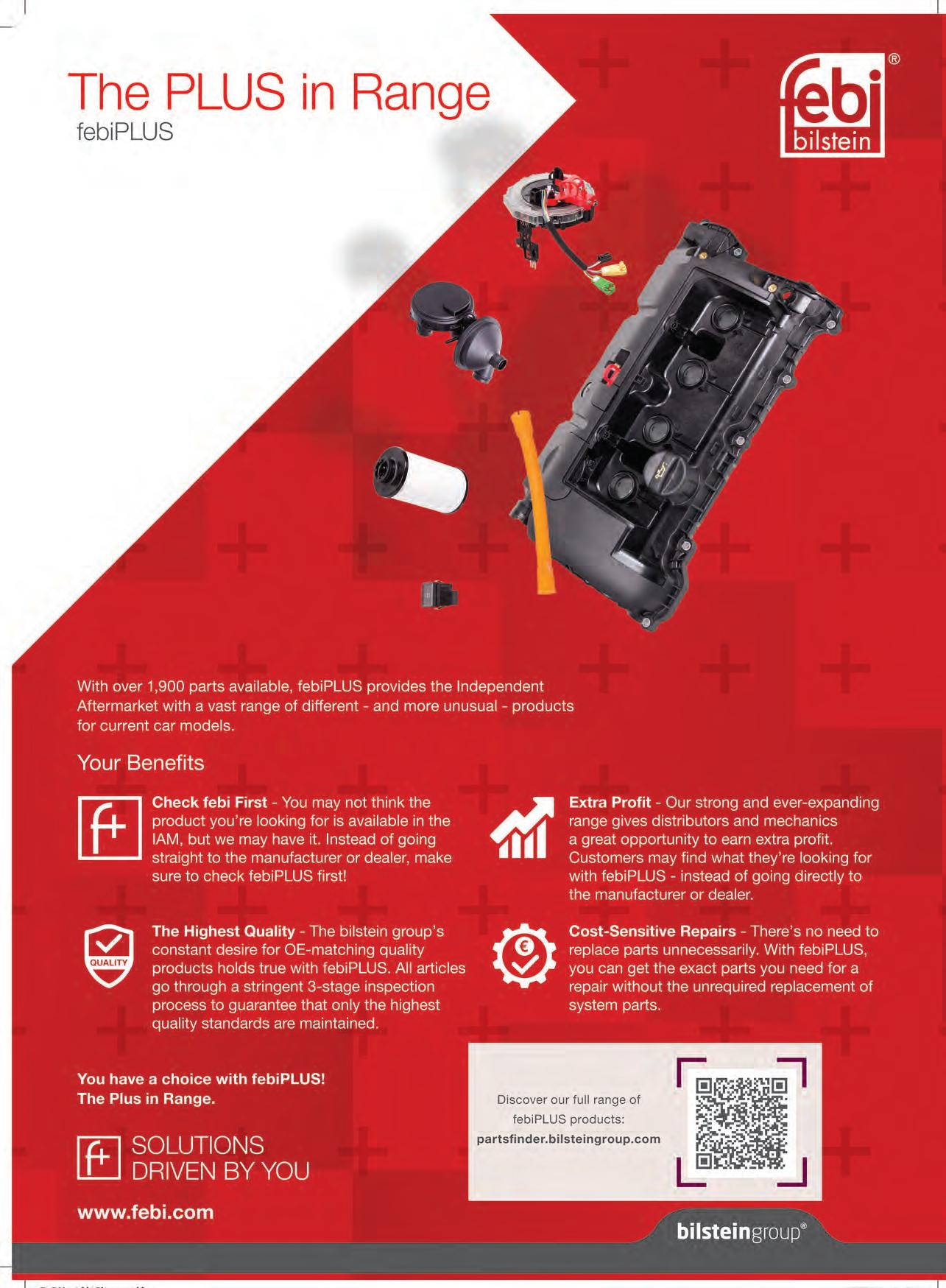 Editor KIERAN NEE
Editor KIERAN NEE
 News and Products Editor
News and Products Editor
FREYA COLEMAN
Digital
Manager
KELLY NEWSTEAD
Group
Manager
ROBERT GILHAM
Account Manager


ALEX DILLEIGH
Magazine Designer
GEMMA WATSON
Group Production Manager
CAROL PADGETT
Production Assistant
CLAIRE SWENDELL
Distribution Manager
KARL CLARK
Subscriptions
PROFESSIONAL MOTOR MECHANIC is a business magazine for firms and individuals involved in all aspects of the motor trade. It is published eleven times a year and is available nationally FREE to the trade through leading motor factors. It is also available through the post at a cost of £30.
EUROPE and OVERSEAS
1 year (11 issues) £50
Air mail 1 year (11 issues) £65
Printed by PCP Telford
Published by HAMERVILLE MEDIA GROUP




Regal House, Regal Way, Watford, Herts, WD24 4YF.
Tel: Watford (01923) 237799
Fax: (01923) 246901
E-mail: pmm@hamerville.co.uk
Sales enquiries: pmmsales@hamerville.co.uk
Website: www.pmmonline.co.uk
Facebook: /ProfessionalMotorMechanic
Twitter: @pmmmagazine Copyright © 2023
Video killed the magazine star?
The Buggles’ famous earworm would have it that Video killed the Radio Star all the way back in 1979. The logic goes that new, more technologically advanced modes of communication will inevitably see off older forms. Video will kill radio, websites will kill magazines, e-books will kill books, VHS ceded to DVD which ceded to streaming and so on… Soon, we will be downloading binary code directly to our cerebral cortex, bypassing the ineffective and unreliable receivers of the old days, namely our ears and eyes. One can dream, but looking around you would suggest that a post-analogue word remains a dream. OK, so CDs and DVDs are well and truly relics of the past, it’s true. But other pretenders haven’t been as successful at claiming the throne as streaming services. The launch of the Kindle, in fact, had the opposite effect, making readers fall back in love with paper books; LPs are now to be found in Sainsburys across the land (for the low, low price of £20); and indeed radio continues to power on, filling the background gaps in people’s lives, creating a community of listeners with little more than a microphone in a studio. The truth is, we have a great capacity to add new technologies into our lives alongside the old ones. What’s more, whilst we are ruthless in dropping a technology which holds no value in and of itself (CDs will never, ever, make a comeback), we are also resistant to dropping those formats that still hold value despite being told they’re “outdated”.
If you haven’t guessed by now, I am talking about this very publication you are holding in your hand. You may have noticed the papery nature of PMM, or at least PMMClassic. The magazine format continues to be our number one focus, because not only is it the most popular format in our stable, it’s also the most popular publication in the sector. Our ABC-audited circulation of 54,319 copies means that 54,318 other workshop owners and employees are currently reading this magazine (well, maybe not all at the same time). Given that estimates of the numbers of people employed in the aftermarket are around 200,000, I would say that reaching a quarter of the industry directly each month (and that’s to say nothing of shared copies) would suggest that good old, old school, papery magazines are alive and well in the aftermarket.
Now, that’s not to say there isn’t room for innovation and, indeed, that’s what we’ve been doing. Our website has been an extremely popular and useful resource for technicians for years now, as has our e-newsletter which brings articles directly to your inbox. You will have noticed that we launched a podcast, the PMMPodcast, last year, which you can listen to on all the big podcast platforms. The numbers we’ve received have far surpassed our expectations – it really seems the industry was crying out for a dedicated monthly podcast!
But we didn’t stop there. Our (rebooted) YouTube channel has just gone live, bringing you reviews and installation guides from our team of tool reviewers. As that begins to grow, does that mean the magazine will become less relevant? Absolutely not. It means that PMM now is a brand which brings you information, entertainment and opinion in every relevant format. More PMM for all to enjoy!
VIEWPOINT
Kieran Nee Editor
The publishers and editor do not necessarily agree with the views expressed by contributors,nor do they accept responsibility for any errors of translation in the subject matter in this publication. Listen on Amazon Podcasts Listen on Spotify Podcasts Listen on Apple Podcasts Associate member Find every episode at www.pmmonline.co.uk/podcasts Also available:
M E EACH M ONTH
THE
MM
JOIN
ON
P
PODCAST
PMM NEWS
NEWSIN BRIEF
■ REPXPERT ROAD TRIP
CONTINUES Schaeffler’s digital marketing team have visited workshops across Gloucestershire, Oxfordshire Birmingham and Milton Keynes, discussing its latest developments with members and non-members.
■ EV COMPLAINTS ON THE RISE
The Motor Ombudsman has recorded a rise in EV complaints, the latest increase could be down to the cost-of-living crisis driving more individuals to recoup financial losses.
■ INCREASING INCLUSIVITY
Recent research from Castrol looking at people’s perceptions and experiences of independent workshops, has found there is significant opportunity to make workshops more inclusive.
■ MOTORISTS SKIPPING MOT
18 per cent of UK drivers admitted to having driven without a valid MOT, an increase from 11 per cent in the same study conducted a year ago, according to data from Compare the Market.
■ CAR SALES GROW 177,266 cars were registered during June, marking the 11th consecutive month of growth according to the SMMT. Battery electric vehicle registrations were up 39.4 per cent.
with Freya Coleman
Independent access to vehicle repair information secured by the IGA
The Independent Garage Association has safeguarded the future of the UK independent garage sector by working with the Government, vehicle manufacturers and aftermarket associations – to ensure that garages will have access to security-related repair and maintenance information (SERMI) to the same level as European garages.
IGA will oversee the UK scheme on a not-for-profit basis, ensuring that access is affordable for all garage businesses. The SERMI scheme is embedded in EU law and will launch on a rolling basis, country by country beginning on the 1st of October. The RMI’s ISO company, RMI standards and certification (RMISC) is also planning to launch the scheme in the UK on that date.
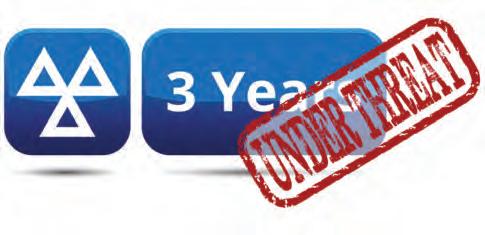
The solution is based around mirroring the system being delivered across europe and its claimed all operational delivery will adhere to the same rules.
The association reports that garages are already getting in touch in large numbers to register their interest in the scheme, responding enthusiastically to the announcement.
MOT delayed decision “unacceptable”
The IAAF is calling on the government to make its decision on the MOT test frequency, calling the delay “unacceptable”.
The Department for Transport launched the public consultation on the future of MOTs in February. The consultation looked at the frequency of the test and sought to justify the government’s preference for the first test to be taken at year four.
The IAAF, along with UK AFCAR and multiple trade associations, has opposed such plans to extend the first test frequency. Many in the aftermarket point to the increasing number of new electric vehicles on UK roads
and the fact that these are just as likely to fail the first MOT test. This, it is argued, underlines the importance of safeguarding the current test regime. DVSA data shows that the failure rate on tyres at first MOT of three years is higher on BEVs than on diesel vehicles. Fifty-seven percent of all electric vehicles that fail their first MOT test, fail on tyres, compared with 35 percent of diesel vehicles and 37 per cent of petrol vehicles tested.
Therefore, the IAAF is writing to the Government, calling on them to at least give an indication of their proposals following the MOT consultation.
8 SEPTEMBER 2023 PMM
“The IGA has broken through the barriers to secure access to the SERMI scheme in a postBrexit Britain.”
Stuart James, IGA chief executive
FOR UP-TO-DATE NEWS, SIGN UP FOR OUR WEEKLY E-NEWSLETTER. SIMPLY SCAN THE QR CODE


Tackling automotive vacancies
With the automotive sector facing a 20year high in vacancies, the Institute of the Motor Industry is embarking on a campaign to debunk the outdated perceptions that are at the heart of the recruitment challenges.
Central to the campaign will be real voices telling real stories about their positive career experiences. The IMI is now on a recruitment drive to find those real voices. There is an urgent need to encourage more people to think about a career in automotive, with the company’s data suggesting 111,400 roles need to be filled in the next decade.
Industry insights
In this episode of the Professional Motor Mechanic Podcast, gain key insights into the current problems facing the industry.
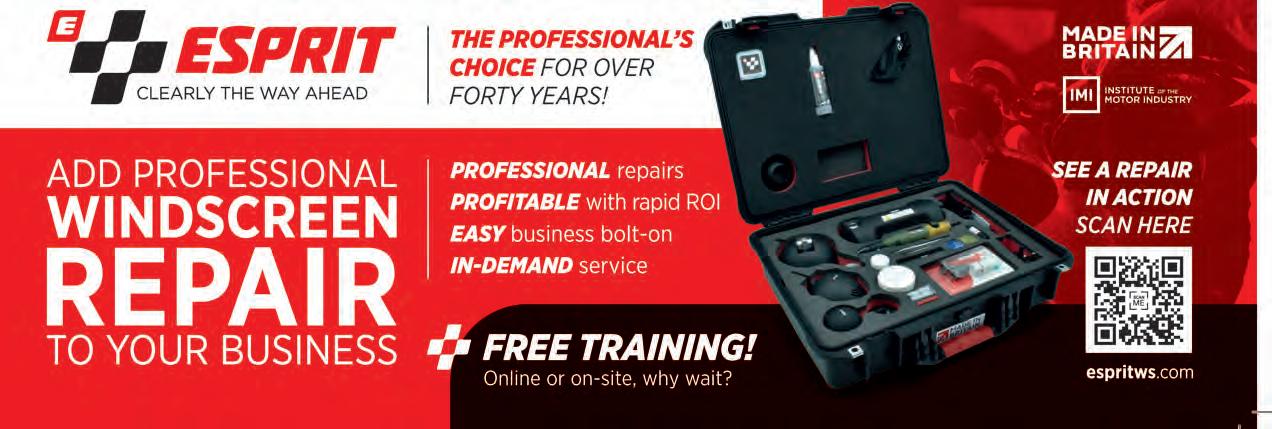
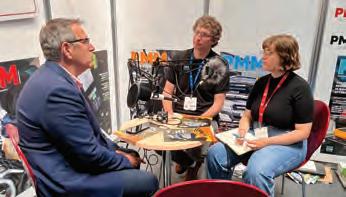
Come along with the presenters Freya Coleman and Kieran Nee, to chat with Steve Nash of the IMI, Mike Bewsey from the VLS
There are currently 218 occupations across the sector, with technological advances –from ADAS and electric to connected motoring and online sales – creating opportunities that go far beyond traditional perceptions of working in automotive.
NEWSIN NUMBERS
£ 70
The amount the average labour rate has now reached according to Garage Industry Trends.
39 %
The percentage of motorists who would try to deal with a roadside puncture, according to a survey by Apollo Tyres. 41 per cent would seek the support of a vehicle breakdown serivice.
and Bill Fennell of the Motor Ombudsman to find out what challenges the sector is facing and how the organisations that stand up for you are dealing with key issues. One impact being that of the cost-of-living crisis. Bill Fennel said “I think what we are seeing is more cases, so we're getting more contact from private individuals regarding concerns they’ve got when they've had their car repaired or when they bought a new or a used car and I think a lot of that is driven by people wanting even more value from what they see.”
To listen, scan the QR code
50 %
The number of vehicles that are coming into garages with discharged batteries, research from CTEK has suggested.
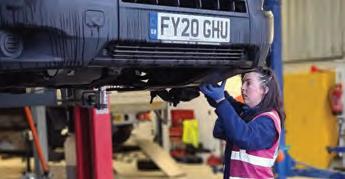
DATES FORTHE DIARY
■ Mechanex, the UK’s longest-running trade show dedicated solely to the independent aftermarket will once again be held at Sandown Park on Tuesday 7th and Wednesday 8th November. This year’s show is sponsored by filters specialists Mann+Hummel. Go to page 34 to read our interview with the latest addition to the PMM Live seminar programme, Ben’s Rachel Clift.
■ Garage management software Garage Hive has announced the Blend is back on the 7th of October 2023 at the Eastside Rooms in Birmingham, with tickets now on sale. It is a two-in-one event featuring a conference during the day where you can hear from industry speakers on how to run your business more efficiently.
■ The BIG Awards are back this year on Friday the 22nd of September at Leicester City Football Club. Categories include the business improvement award, the diversity equality and inclusion award and the training and development award among many others.
Meeting oil standards
The Verification of Lubricants Specifications has recently brought several cases concerning low temperatureproperties to a conclusion, resulting in affirmative action from the companies involved.
One of the instances concerned a complaint regarding Westway Lubricants 75W-90 synthetic gear oil and the product’s compliance with SAE J306 regarding low temperature properties and its claim to meet MB 235.8. VLS independently procured a sample of the product within the UK and
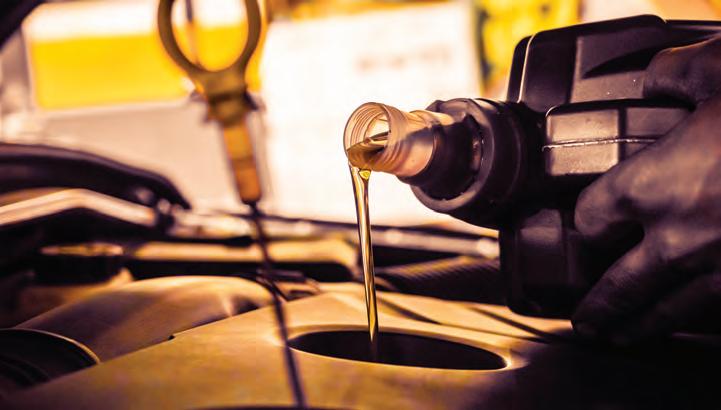
tested it for low temperature properties against ASTM D2983. The test results demonstrated that the product did not comply with the SAE 75W specification detailed in the SAE J306 standard, as it turned solid before reaching -40˚C.
In response to the investigation, Westway Lubricants quarantined all stock and arranged an uplift of products from the warehouse with the supplier. They also changed supplier and removed reference to the MB 235.8 specification from the productlabel.
PMM hits the small screen

The Professional Motor Mechanic YouTube channel is now up and running, bringing the magazine to life!
Current videos include putting Milwakee’s power tools to the test and a look at how to install and use the Rozone parts washer.
The man at Hamerville behind the move, the very same who launched PMM magazine all those years ago, Oliver Shannon commented: “We’re very excited to bring the content from PMM to life in video form. We will be working with key brands and leading
garages to bring our audience the most engaging technical content possible.”
To visit the channel, scan the QR code
Many of you have responded to our call for the next video sensation, but we are still on the hunt for technicians to get in front of the camera. If you are interested in having your five minutes of fame (and then some) just drop us a quick email at PMM@hamerville.co.uk
10 SEPTEMBER 2023 PMM
PMM NEWS with Freya Coleman
EV driving tax a non-starter
More than half of motorists are against a new proposal to make EV drivers pay six pence per mile to counter a tax shortfall compared to petrol and diesel cars.
July’s Startline Used Car Tracker shows 55 per cent believe such a move would not be fair while 40 per cent say that EV tax should be kept low by the government in
order to encourage take-up. The six penceper-mile rate proposal was part of a document created last month by the Resolution Foundation think tank on the future of road pricing, which addressed an expected £10 billion shortfall in fuel and road tax receipts by 2030 caused by car electrification.
NEWSIN QUOTES
“ Any failure to add these roles to the shortage occupation list would be directly damaging to the government’s own zero emissions targets. We have already seen a flattening of demand for EV training which we attribute directly to the record high vacancies in the sector not allowing employers to be able to spare technicians to go on training courses. A shortage of people to service and repair electrified vehicles is potentially as much of a barrier as insufficient charging points.”
Steve Nash, CEO of the IMI, on the failure so far from the Government to add vehicle technicians to the shortage occupation list.
Raising mental health awareness
Ben, the charity dedicated to supporting the people of the automotive industry, has invited the automotive community to raise vital funds and support those who are struggling or in crisis.
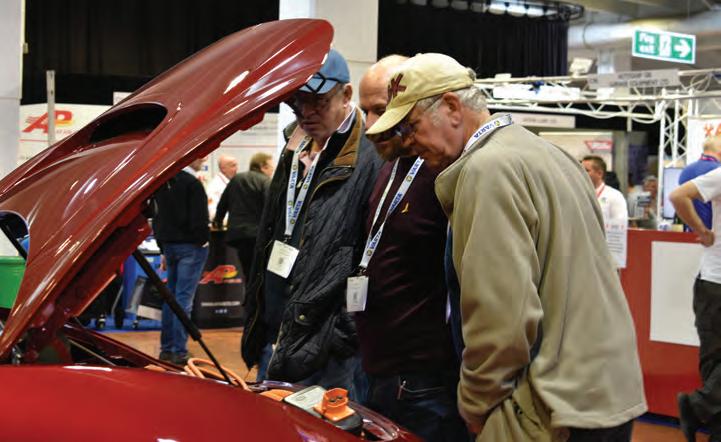
Ben’s Big Breakfast is in its third year and will run from 9th to the 15th October, inviting automotive industry companies to host a breakfast to fundraise for Ben. Breakfast brings together employees, customers and families to share the most

important meal of the day, aiming to connect with each other and check in, supporting each other’s mental health.
“ In July it's already sitting at 70 pound and 30 pence. Now, we've been measuring labour rate since August 2022. So, it's about a 9 per cent increase in less than a year in the average labour rate. It is worth noting that this is for Garage Hive customers that are opted in. So, it may not be indicative of the overall industry labour rate, but it’s certainly very indicative of the trends of the labour rate, which seems to be really nicely tracking inflation, as it should be. So, I do consider it to be, to be great news that we've finally reached the £70 milestone.”
Alex Lindley, Garage Hive’s director, commenting on the average labour rate of Garage Hive customers opting into Garage Industry Trends officially reaching £70.
PMM SEPTEMBER 2023 11 MESSAGE ME YOUR NEWS AT FCOLEMAN@HAMERVILLE.CO.UK
In pictures: Mechanex, the hands-on show for hands-on techs is more committed than ever to bringing PMM to life with new opportunities to debate the future of independent workshops. Returning to Sandown Park in Surrey on the 7th and 8th November.
A look inside:
Video
Your favourite trade magazine is now on YouTube, bringing you reviews and video guides on the best tools and workshop solutions. Find us at @professionalmotormechanic. Recently, our tool reviewer Darren Quinn from Mechanic Mindset got his hands on some tools from Milwaukee. Let’s take a look.
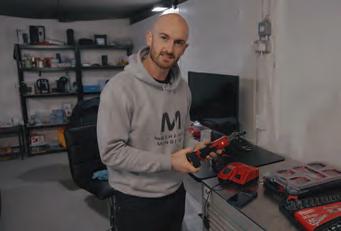
Milwaukee, the American power tool brand, has made a name for itself in the building industry in recent years. Its distinctive red livery and lightning motif bring a bit of stateside excitement to the workshop – sure to stand out among the usual greens and blues.

Charging up: The rapid charger puts a decent amount of charge in the battery over the 25 minutes it takes Darren to go for a cuppa. It’s a long time for a cup of tea, but a short time to get to 50 per cent charge on the M12 6Ah battery.
Power tools vs air tools: Darren found that using the battery powered tools offered him extra flexibility and more comfort as the handle remained warm. Plus they’re more quiet!
The video, which can be seen on PMM’s YouTube channel (@professionalmotormechanic) showcases a range of tools, including a ratchet and an impact wrench, with battery charger, alongside a set of spanners and deep impact sockets. Darren uses the ratched to remove a Mini’s rocker cover, preferring its lower torque setting and its ability to reach into tight spaces. Later, Darren puts the impact wrench to good use removing wheel nuts in seconds flat.
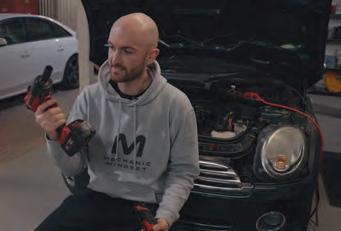
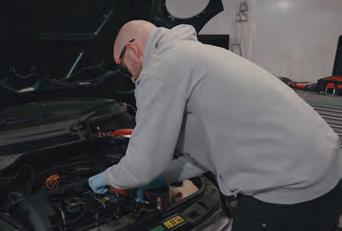
Talk the Torque: Although the impact wrench offers a huge 800 Nm of torque, Darren was most impressed by both tools’ ability to modulate the torque settings. All technicians will know the importance of a light touch when dealing with sensitive parts…
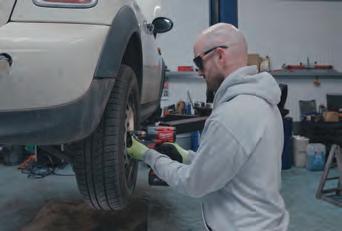
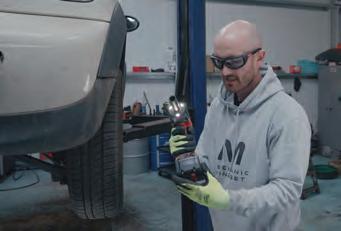

The verdict?
“I am particularly impressed with how quickly the impact wrench with the M18 battery removes the wheel bolts and the retorque feature is really nice so we don’t overtighten the wheels”
TO WATCH THIS VIDEO AND THE OTHERS ON THE PMM YOUTUBE CHANNEL, SIMPLY SCAN THE QR CODE

12 SEPTEMBER 2023 PMM
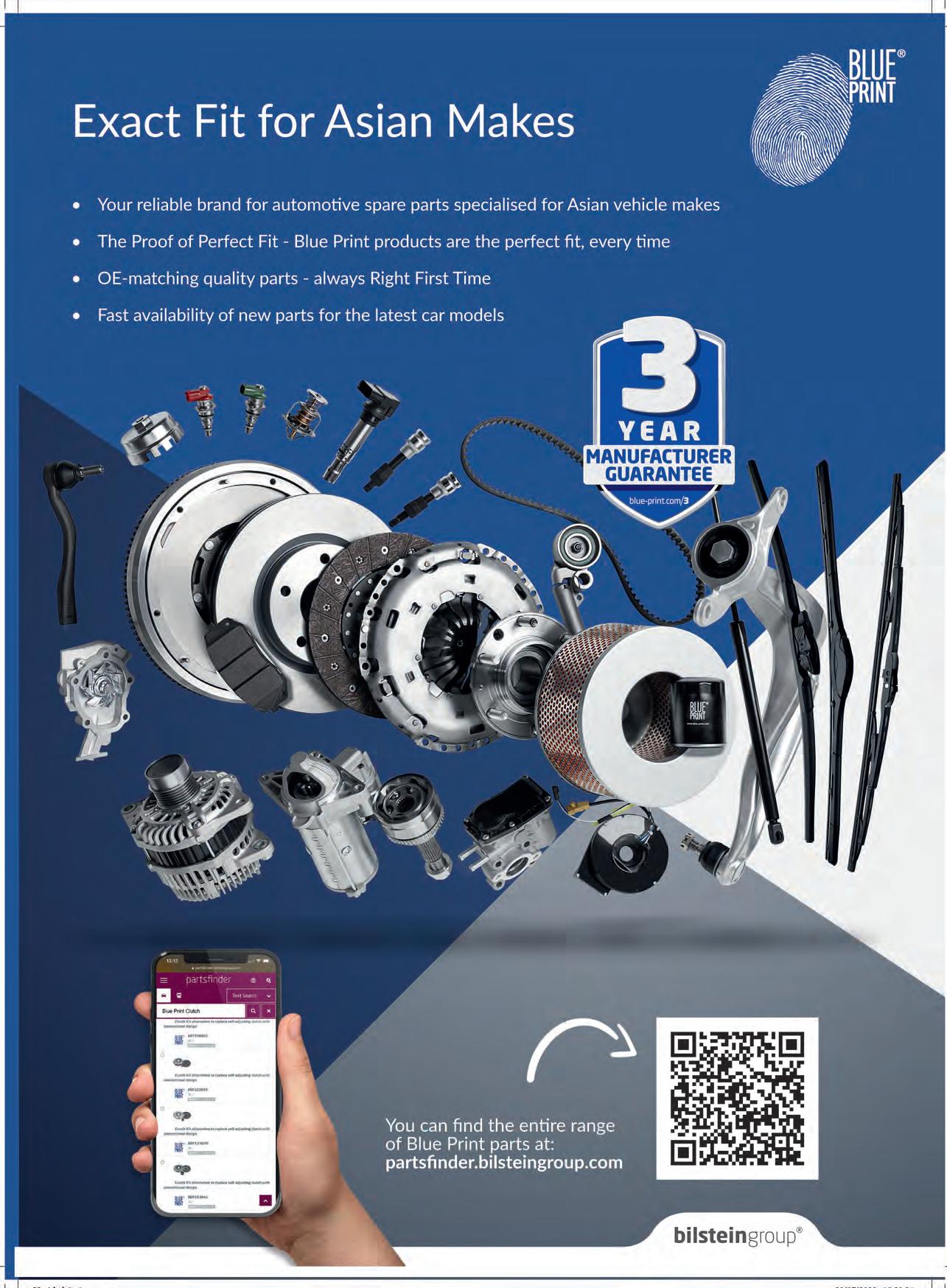
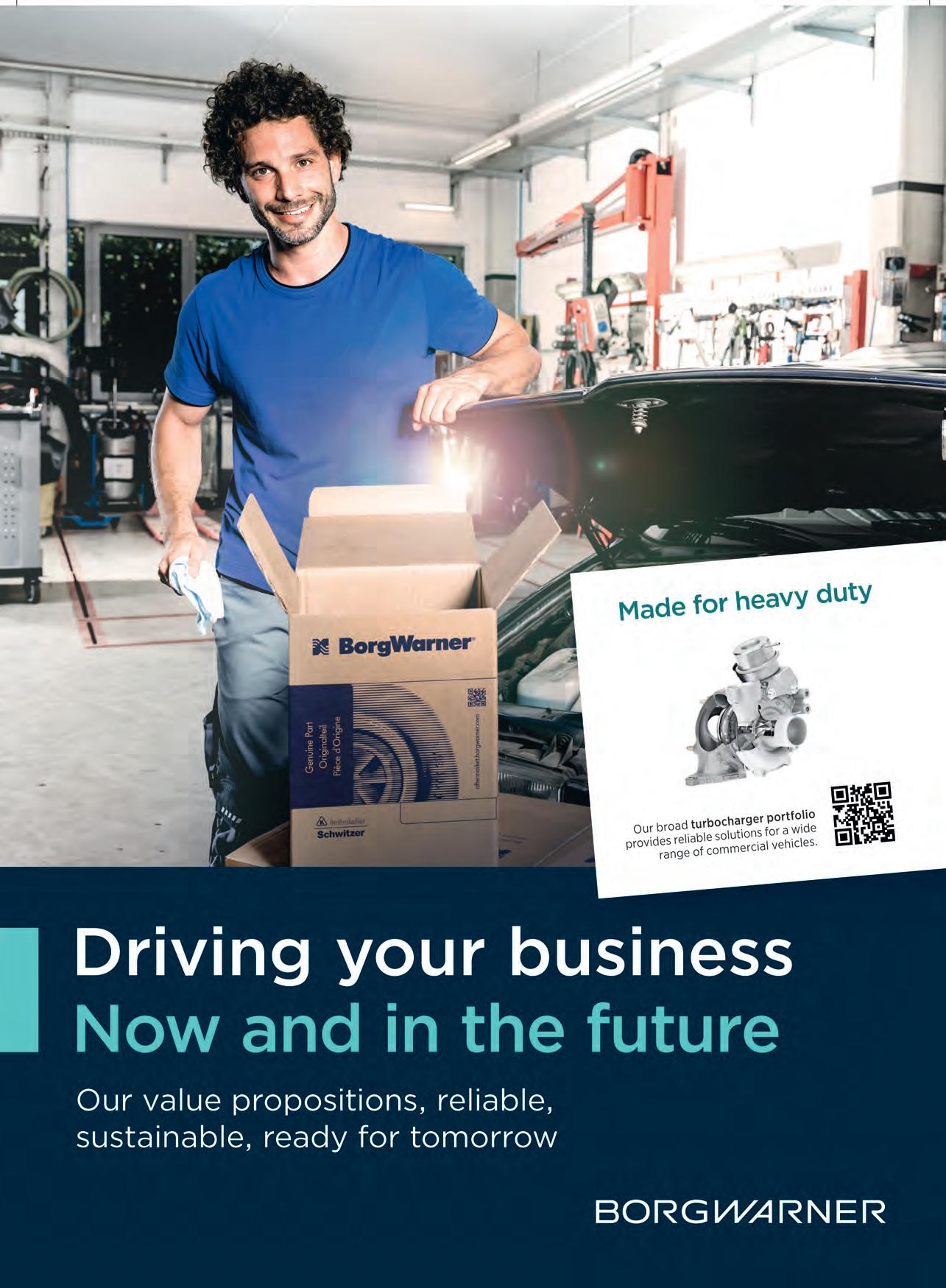
YOU ARE NOW ENTERING
PMM has teamed up with the CPD Group to offer you the chance to gain CPD points while you read every issue!
Continuing professional development (CPD) can be broadly defined as any type of learning you undertake which increases your knowledge, understanding and experience of a subject area and your role within it. To help professionals to better document and prove this process, our new CPD Zone features articles that have been checked, verified and accredited by a thirdparty specialist organisation.
The content within the CPD Zone will provide you with 1 CPD Credit, or 1 hour’s worth of continuous professional development.
Once you have read through the articles contained within, you will be able to scan the QR code at the end of the last article. This will provide you with a downloadable certificate, personalised to you. This can then be used as part of your ongoing CPD record, as needed to satisfy various organisations and schemes. Regular readers of PMM, therefore, could earn 11 CPD points just by reading the magazine each month.
DO NOT SCAN THE QR CODE UNLESS YOU HAVE READ ALL OF THE CONTENT WITHIN THIS SECTION!
CPD relies on self-certification, which in turn relies on professionalism and honesty from those who participate. We have great faith in the diligence and professionalism of our readers – we are called Professional Motor Mechanic, after all. It is fairly safe to assume that if you are picking up PMM each month, then you are already interested in reading and understanding technical content. Indeed, we are a lifeline for many in the industry who rely on us to spread the word on the latest changes and developments originating with the OEMs.
THIS PROCESS IS COMPLETELY FREE
Don’t worry – you won’t have to pay a penny to gain your CPD points each month. It’s on us!
All certificates are valid for one year from the issue date. If you have any issues downloading the certificate or using the system please email us at: pmm@hamerville.co.uk
NEW USERS –ACCESS YOUR BESPOKE CPD CERTIFICATE IN FIVE STEPS

Read ALL of the articles within this month’s CPD Zone
Scan the QR code or enter the RDR.Link in your web browser –both are found at the end of the last article in this section
Enter your email address
Fill out your details on the contact form
Download your certificate for use as part of your annual CPD record
PREVIOUS USERS –ACCESS YOUR CPD CERTIFICATE IN FOUR STEPS

Read ALL of the articles within this month’s CPD Zone

Scan the QR code or enter the RDR.Link in your web browser –both are found at the end of the last article in this section
Enter your name and email address
Download your certificate for use as part of your annual CPD record



PMM SEPTEMBER 2023 15
CPDZONE READ ME TO COLLECT YOUR CPD POINT
TROUBLESHOOTER
Why is the BMW E61 M-Sport losing power?
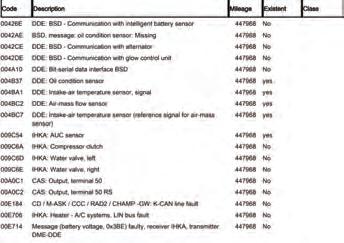
Ben Johnson investigates an (extremely) high mileage vehicle which left its driver stranded after losing power and discovers that faults, like good things, come in threes…
It has been quite a while since I’ve come across a car riddled with so many quirks that it turned me into more of a police detective than a mere fault finder. But let me tell you, last week, a nice looking E61 in M-sport trim rolled in on a flatbed truck, flaunting its seemingly flawless exterior and boasting an impressive set of wheels. Little did I know, this fine-looking car was about to take me on a wild ride.
The unhappy owner claimed that his prized possession had abruptly lost its power, leaving him stranded on the side of the road. Intrigued, I decided to dig deeper into the mystery lurking beneath the hood of this 447,968 Km driven E61 530d. Was it a sinister electrical glitch? Or perhaps something else?
The engine was the trusty M57 featuring a single turbocharger which is usually a strong and capable platform even at high mileages except in this case, which upon driving the vehicle on our car park, I found would not accelerate at all. I should also mention, for the reader’s benefit, that in Finland such high Km readings on passenger vehicles are perfectly commonplace. As with all of my fault finds I decided to interrogate the fault memory which can be seen in Fig.1.
The air mass sensor (fault code 004BC2) caught my attention the most due to the significant limitation in engine power. Instead of examining live data, I found it more convenient to visit the parts department, retrieve a sensor from the available stock, and give it a try. This approach proved to be quicker; however, in this particular case, the replacement air mass sensor had no real effect. The car continued to exhibit a lack of power, and to make matters worse, random warning messages regarding the oil level sensor started to appear. At that point, I made the decision to remove the air mass sensor and analyse the original values using the original
air mass sensor. Unsurprisingly, they were similar to the readings that I had witnessed as provided by the new sensor. Recognising that resolving the substantial power loss required further investigation, I planned to revisit this component once I had identified the root cause because one thing was sure – it sure as heck wasn’t the air mass sensor at fault.
Digging deeper into this troublesome vehicle whilst starting the engine, a noticeable increase in exhaust back pressure was evident, suggesting a potential issue. During the evidence-gathering stage, it became apparent that this vehicle had
possibly undergone a chip tuning modification, as the diesel particulate filter had been cut open and subsequently welded back together. Undeterred by this finding, I resolved to measure the back pressure, even if the internal components of the DPF may have been removed. Removing the Lambda sensor revealed a monolith in good condition – the oxidising catalytic converter. With time, as ever, at a premium, a back pressure reading at 4,000 RPM was taken which resulted in a value of around 230 millibars – way too high. Never one to take live data at face value (think implausible sensor values) a general specification compound meter was hooked up to the back pressure sensor hose tube bore and the same test was repeated. The results were very close to the live data value that I had observed from the Autologic tester so I was very sure that there was a high soot loading within the particulate filter.
The pressure is on
The initial stage of evidence gathering posed a potential risk of misdiagnosis due to the fluctuating back pressure, which pulsated in waves, occasionally dropping to significantly lower values. These fluctuations could have been easily overlooked, as they caused unusual readings both in the live data and on the manual compound meter. For instance, the initial idle reading of 49 Millibars would randomly decrease to 11 Millibars. At 4,000 RPM cutoff speed the pressure would decrease to 170 Millibars – very strange indeed. It was important to note that I observed this change on the gauge, which, once again, ruled out the possibility of a faulty exhaust backpressure sensor (Fig.2).
The decision to unblock the DPF with JLM fluid was made and carried out. This subsequently dropped the cut off speed pressure from 230 down to 70 Millibars.

16 SEPTEMBER 2023 PMM READ ME TO COLLECT YOUR CPD POINT CPDZONE
Initial fault codes
Extremely high exhaust backpressure at 4000 rpm
With the blocked DPF issue seemingly resolved, it was time to address the second problem: the lack of power. During a road test, it was evident that the car now drove smoothly, but only once the engine reached over 2,000 RPM did it exhibit reasonable pulling power. In the E series BMW vehicles, the BSD bus system was employed, although it has since been discontinued due to its limited fault tolerance and susceptibility to expensive repairs. For instance, if the BSD bus crashes due to a faulty or missing ground or a fault that causes a dominant signal, the DDE (Digital Diesel Electronics) is unable to control the glow plugs, read battery IBS (Intelligent Battery Sensor) data, or regulate the alternator. Additionally, the oil sensor, which is connected to the same bus, triggers a warning lamp. Thus, it is evident that this bus plays a vital role and when it goes wrong it causes no end of problems. I had encountered lots of BSD faults in the past which usually involve removing and thus isolating one bus user at a time then checking the signal on the bus to see if it is restored or not. In this way, as long as one bus user is connected at the minimum, faults can be found quickly. I had a strong belief that this fault would turn out to be something entirely different, perhaps you could call it a fault finder's intuition.
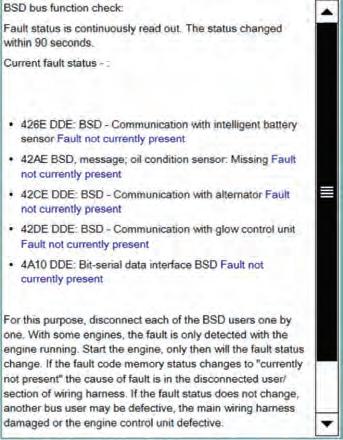
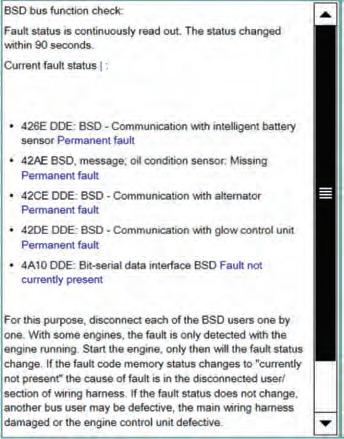
The glow plugs are responsible for heating up the combustion chamber during DPF regeneration if the cylinder temperature is not sufficiently high. Non-functioning glow plugs could certainly contribute to multiple failed DPF events. However, it was perplexing that no DPF fault codes were present, despite the high
back pressure that should typically trigger them. Nonetheless, with chip tuned cars, such functionalities can be disabled, so encountering poorly written remaps at Schmiedmann is not uncommon. Our approach is to work around these issues as best as we can. Undeterred I cracked on working out what was flagging up the bus issues (Fig.3).
Going for the triple
At times, a seemingly simple issue with a component can have a profound impact on other parts, while unexpected events can surprisingly provide assistance. After investing considerable time into starting the engine, it became evident that the oil warning light would appear during engine cranking and while driving the car under load. Based
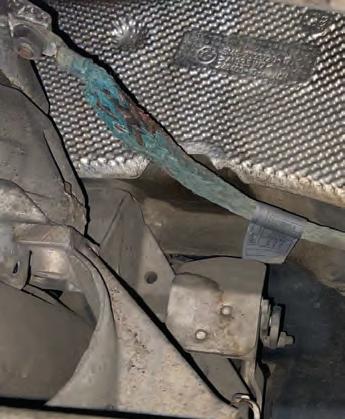
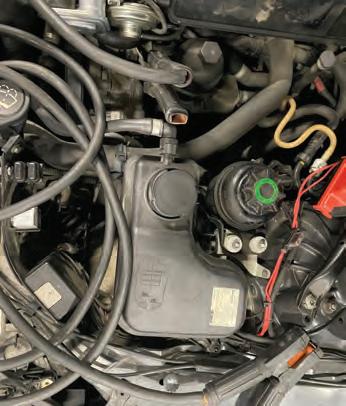
on this observation and further road tests, I made the decision to establish an additional ground connection for the engine, suspecting that the BSD bus faults were caused by a weak engine ground. By adding a thick jump cable from the jump post to the engine, the previously persistent BSD faults disappeared. However, in order to eliminate any uncertainties, I removed the temporary supplemental ground while the engine was running, only to witness an immediate failure of the BSD. This test was repeated multiple times, consistently yielding the same outcome. In this case, conducting a voltage drop test to verify the ground was unnecessary; a visual examination sufficed. I identified a heavily corroded ground, which was promptly rectified. Subsequent road tests revealed that the BSD faults did not resurface—thus, a successful resolution. However, my satisfaction was short-lived, as the issue of lacking power at low RPM reemerged. At this point, I found myself asking, "how many faults can one car possibly have?"
The BSD bus usually has a ground yet the wiring diagrams never show where this magical and highly mysterious ground point is located. Somewhere in the main harness the BSD bus will ground on the cylinder head. In the petrol engines this point is a brass washer moulded into the main engine harness conduit and it is bolted to ground in this way. It was clear that the lack of a decent ground due to massive resistance and draw from the starter motor was causing the BSD to fail under load, especially when cranking
PMM SEPTEMBER 2023 17
The BSD bus faults disappeared when a better engine ground was added
Permanent fault on the BSD bus with no supplemental ground attached
BSD faults rectified by adding a supplemental ground cable –success!
Voltage drop testing not necessary here!
the starter motor continuously. In fact, the main ground cable was so worn that it eventually failed to provide enough ground path that the starter motor failed to operate.
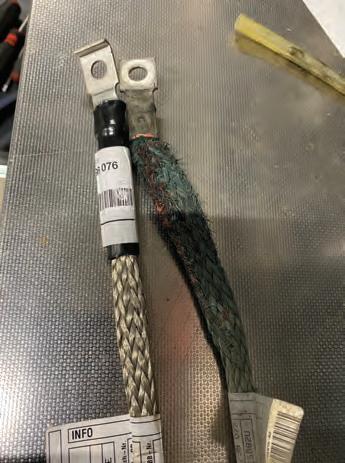
With things looking somewhat better, the only remaining issue to address was the lack of power at low RPM. Unfortunately, this led eventually to a complete loss of power, with the car struggling to rev at all. I had been working on this problem for half a day by now and was becoming increasingly frustrated since the problem was getting worse.
Upon examining the live data for air mass, it became evident that under load, the desired air mass value should be 1,000 Mg of air, yet the actual air mass reading was barely 370 Mg – a significantly low air mass.
To identify the root cause, I focussed on the M57 engine's air mass measurement and the operation of the EGR valve. The air mass is digitally measured using a square wave signal that widens as the air mass increases. When the turbocharger draws in more air, the air mass reading should rise accordingly. On the other hand, the EGR valve is controlled by a solenoid valve, which supplies pulsed vacuum at a high frequency to open the EGR feed into the throttle body.
Considering the possibility that excessive, unmeasured EGR feed-in was contributing to the power loss, I decided to remove the intercooler boost hose with the engine idling. However, to my disappointment, the EGR feed-


appeared to be closed. Nevertheless, when examining the duty cycle data on Autologic, it indicated that there should have been some slight EGR feed-in. Surprisingly, upon removing the vacuum pipe from the EGR valve, I discovered a lack of vacuum. Subsequent road tests with the disconnected line yielded the best driving experience so far, clearly indicating an improvement compared to previous tests. This led me to suspect that the EGR solenoid, located under the intake manifold, might be intermittently shorting or getting stuck in the open position, allowing full vacuum to pull the EGR feed-in wide open. It was frustrating that no fault codes were recorded.
A return to normality
Before deciding to order a new solenoid, I conducted a road test using a handheld vacuum pump and a length of vacuum pipe (Fig.8). While driving without vacuum, the power delivery was excellent. However, when applying a significant amount of negative pressure, I was able to replicate the same conditions, experiencing a lack of power and poor engine response. Analysing the live data revealed an interesting observation: unlike more modern BMW diesels that calculate excess air mass based on unmetered EGR feed-in through the temperature sensor after the EGR cooler, this particular car exhibited the opposite behaviour, with the air mass decreasing as more EGR was fed in. In a more modern vehicle, an excess amount of exhaust air might result in a higher air mass reading. Fault finding can be frustrating, particularly when faults are not present during testing.
However, that's the nature of the task. If it were easy, everyone would be a fault finder. The final job for this vehicle was the fitting of a new EGR solenoid followed by a long roadtest. This resulted in normal air mass values and a smooth and enjoyable ride – finally! Indeed, this challenging triple whammy of faults really made me pause and contemplate the situation as a whole, prompting me to reflect on what was happening and why. As fault finders, we often have to rely on traditional evidence gathering methods, carefully evaluating data and conducting practical simulations to effectively diagnose and resolve issues. In cases like this one, relying solely on fault codes and computerised test plans is not enough. It is through the process of thorough evidence gathering that we uncover the root causes and through knowledge of how things work we implement successful solutions. This knowledge is useful and even essential especially when faced with such badly “modified” vehicles. So, until the next edition, let us continue our commitment to diligent evidence gathering, eagerly anticipating what challenges the upcoming month will bring.
18 SEPTEMBER 2023 PMM
in
WANT TO KNOW MORE? FOR MORE INFORMATION WWW.RDR.LINK/ABA001 READ ME TO COLLECT YOUR CPD POINT CPDZONE New versus old
Using a hand operated vacuum pump to recreate the sporadic egr feed-in problem
The mystery solved! Sporadic full vacuum bypassing the EGR solenoid caused full EGR feed-in and subsequent power loss

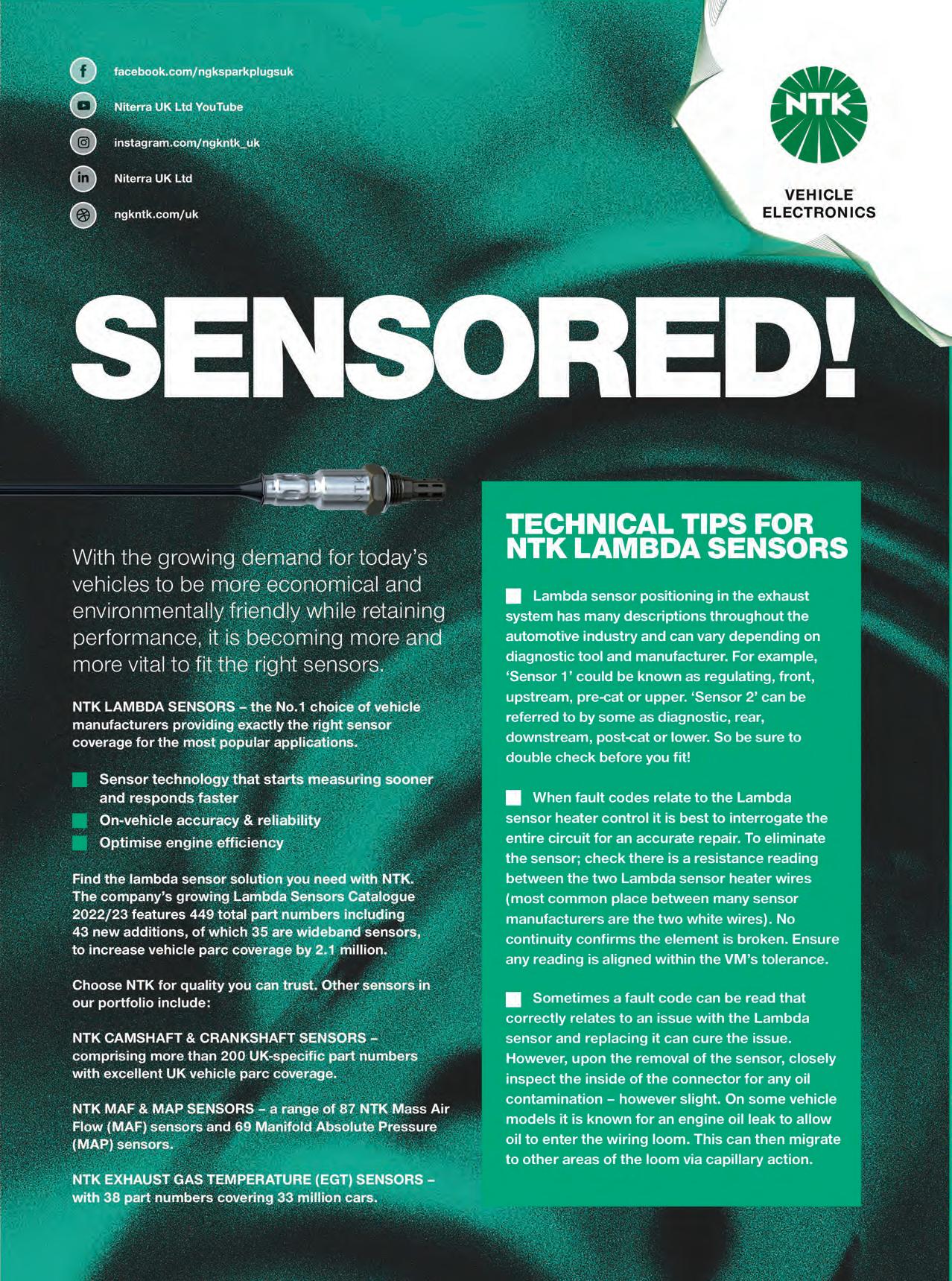
KNOW YOUR PARTS
OE vsaftermarket shock absorbers
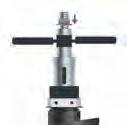

Suspension specialist KYB provides some helpful pointers on the differences between OE and aftermarket shock absorbers.
When removing an old shock absorber from a vehicle and comparing it alongside its replacement, you may have found yourself asking yourself “why is this KYB Shock Absorber shorter than the OE one?”
It’s certainly a question the KYB technical team have been asked numerous times as the piston rod on the replacement unit can sometimes appear to be much shorter, leading many mechanics to believe that there is something wrong with the unit. However, the piston rod is in fact the same size – the only difference is the amount visible. The reason for this lies within the body of the shock absorber, caused by the presence of a component known as a “rebound spring”.
Damage prevention
A rebound spring is a component that sits around the base of a piston rod, acting as an extra layer of internal cushioning that stops the bottom of the piston rod from hitting the top of the shock absorber cylinder when fully extended. This prevents any damage to the internal piston rod guide and the oil seal, as well as improving smoothness and stability when cornering.
When a brand-new vehicle is launched to the market, it is common that the shock absorbers originally fitted to the vehicle will have rebound springs. When the model eventually reaches maturity, the vehicle manufacturer will go through cost cutting measures, often leading to the rebound springs being removed entirely. However, at this point, KYB aftermarket shock absorbers have
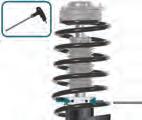

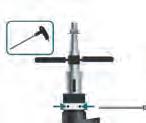
been released, matching the initial designthis means that the KYB replacement unit will have a rebound spring included.
Sometimes the difference between an extended piston rod with and without a rebound spring can be as much as 50mm. This difference often leads to confusion.
Why is it so hard to fit?
Due to the extra cushioning offered by a rebound spring, this often means that the piston rod is incredibly hard to pull out to its full length when trying to attach a strut mount as the rebound spring is simply in the way, preventing the piston rod from extending further.
Whilst it may be tempting to try and pull the piston rod out to its full-length using pliers or mole grips, KYB strongly warns against doing this as it can cause damage to the oil seal on the piston rod and cause leakage, leading to premature failure of the shock absorber.
Instead, KYB suggests that a good coil spring compressor should be able to compress the spring that extra amount required to allow the top nut to be screwed securely onto the piston rod.
There are also tools available on the market to assist with any fitting difficulties, such as a strut controller, that will safely attach to the piston rod and extend it by the required distance to easily attach to the mounting kit.
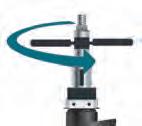
HOW TO USE A STRUT CONTROLLER
Place the protective clamp over the piston rod. Do not tighten.
WWW.RDR.LINK/ABA002
Place the strut controller on top. Place the top nut provided with the shock absorber on top and tighten.
Turn the handles on the strut controller – this will pull the piston rod out further, compressing the internal rebound spring.
Use the key wrench to tighten the protective clamp. This will prevent the piston rod from retreating back into the body of the shock absorber once the strut controller is removed.
Unscrew the handle and remove the piston nut.
Assemble the unit and remove the protective clamp once the strut mount has been safely secured.
Please note, the above illustration is for demonstrative purposes only – please consult the manufacturer’s manual before use as designs of strut controller may vary.
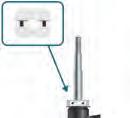
PMM SEPTEMBER 2023 21 READ ME TO COLLECT YOUR CPD POINT CPDZONE
FOR MORE INFORMATION
WANT TO KNOW MORE?
PMM THE PODCAST








WHAT DO CHANGING A BATTERY, CHANGING A BABY (JUST THE NAPPY) AND CHANGING YOUR MORNING RADIO STATION ALL HAVE IN COMMON?
THEY OFFER THE PERFECT OPPORTUNITY TO LISTEN TO THE PROFESSIONAL MOTOR MECHANIC PODCAST WITH KIERAN NEE.

HEAR ADVICE ON PRICING JOBS, MANAGING PARTS SUPPLY, ELECTRIFICATION, RECRUITMENT AND MUCH MORE.


Listen on Google Podcasts Listen on Apple Podcasts Listen on Amazon Podcasts Listen on Spotify Podcasts LISTEN NOW ON YOUR PODCAST PLATFORM OF CHOICE
HOW TO Replace the clutch on a BMW 1-Series
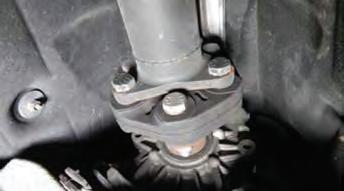
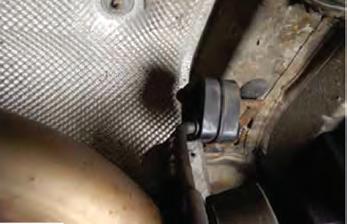
Vehicle Information
Manufacturer: BMW
Model: 1-Series F20 116d
Year: 2011
The BMW 1-Series was introduced to the market in 2004, adding a new dimension to the established BMW 3, 5 and 7Series models. This new range of vehicles offered an alternative to front-wheel drive competition such as the Volkswagen Golf, with the first and second generations using the traditional BMW powertrain set-up of rear-wheel drive. The third generation 1Series is now based on a larger version of the primarily front-wheel drive MINI platform –marking a change in BMW’s philosophy.
The example featured in this article is a second-generation 1-Series F20 116d equipped with the N47 2.0 diesel engine, which had covered 116,000 miles (187,000
Engine 2.0 Diesel N47 Mileage: 116,000
In this instance, the tailgate would not be able to open, making the battery difficult to access for reconnection. All other operationsto remove the transmission to gain access to the clutch assembly are from underneath the vehicle.
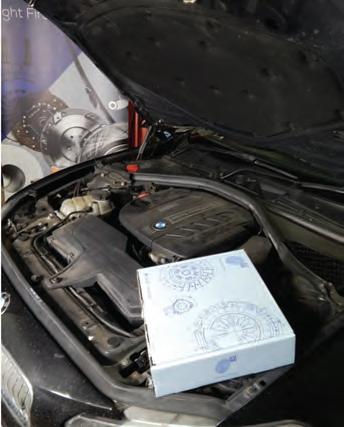
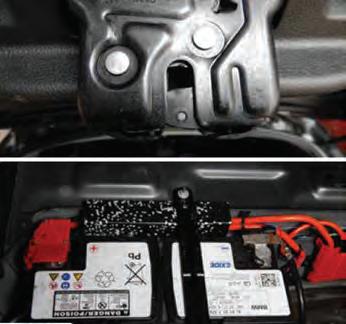
With the vehicle fully raised, the engine and transmission undertrays can be removed, followed by the right-rear exhaust silencer mounting, which allows for the exhaust system to be lowered. Once lowered, there is enough clearance to remove the exhaust heat shields to expose all the fixings to remove the propshaft (Fig.2).
km) and was showing all the signs of requiring a new clutch.
Before the clutch replacement process can begin, the vehicle must be raised onto the ramp in order to lift up the vehicle’s tailgate and locate the battery. Remove the negative terminal and set it to one side before lowering the tailgate and setting the latch into the ‘shut’ position to stop the tailgate from closing completely. This is because, with the battery disconnected, the tailgate latch would remain in the ‘shut’ position if closed, due to the latch requiring battery power to operate (Fig.1).
Unbolt the front and rear propshaft couplings (also known as flexible discs), along with the centre support, and remove the complete propshaft from the vehicle. This is a perfect opportunity to inspect the propshaft universal joint for any ‘stiffness’ or excess play, along with the centre bearing and condition of the propshaft rubber couplings, and to replace any worn parts - if necessary –before reassembly (Fig.3).
PMM SEPTEMBER 2023 23
READ ME TO COLLECT YOUR CPD POINT CPDZONE
Blue Print’s Charles Figgins guides readers through a clutch replacement on a BMW 1-Series.
“The third generation 1-Series is now based on a larger version of the primarily front-wheel drive MINI platform – marking a change in BMW’s philosophy.”
Next, detach the gear linkage. There are two pins fixing the linkage to the transmission and one to the gear selector; simply remove them and the linkage becomes separated from the transmission (Fig.4).
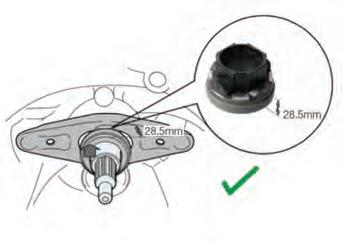
Other items requiring removal include the clutch-slave cylinder, located on the left-side of the transmission. This can be unbolted from the transmission with the hydraulic hose attached but – In the case of the vehicle featured in this article - the hose was clamped, then disconnected, before the slave cylinder was unbolted, because a new slave cylinder was going to be part of this repair anyway.
The starter motor wiring harness can now be removed – then, unbolt the starter from the engine, being aware of the hidden bolt that goes through the deep rubber grommet attaching it to the engine.
Other wiring harness components that require unclipping and removing are the reverse lamp switch on the left side, the neutral switch on the top of the transmission, and an earth cable on the right side.
Remove bell housing bolts
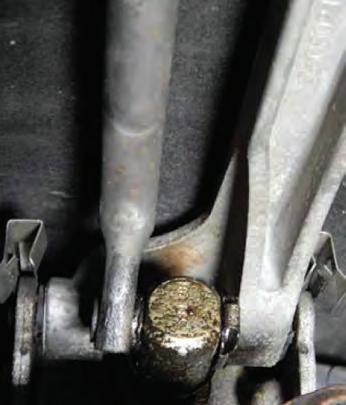
Next, put a transmission jack in place to take the weight from the transmission, then unbolt the rear transmission mounting from the vehicle’s body. Remove all the bell housing bolts and the bracket that was attached to the DPF –however, the transmission must be lowered to gain access to the bolts at the top of the transmission using a long extension and socket. Once all
bolts are removed, the transmission can be guided away from the engine and lowered to the workshop floor for inspection.
With the transmission removed, the flywheel can be ‘locked’ in place to stop the engine from turning. Unbolt the original clutch and dual-mass flywheel and remove them for inspection. Check the flywheel – in the case of the vehicle featured here, some ‘blueing’ on the friction surface was discovered, this being due to the excess heat created by the worn clutch. A rock test should also be carried out on the flywheel –in this vehicle’s case, it failed the rock test, so the flywheel did require replacement.
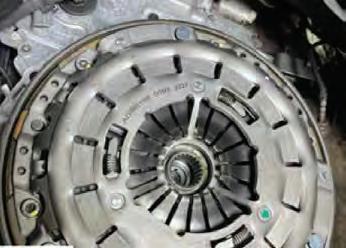
We now turn our attention to the release mechanism: remove the release bearing from the clutch-release lever, which can become dry and noisy with usage and age.
Clean surfaces
Before fitting any new components, thoroughly clean all mating surfaces at the rear of the engine and the transmission bell housing so they are free of all grease, dirt and old friction fibres from the previous clutch. Then, the new dual-mass flywheel and retaining bolts can be fitted to the engine along with the new clutch kit ADB113017.
Tighten all bolts to the manufacturer’s recommended tightening figures, evenly and in sequence, before securing and correctly aligning the components (Fig.5).
Before refitting the transmission to the engine, assemble the new release bearing
with the new release lever and then fit it to pre-greased pivot points to ease operation. Note: this clutch kit is provided with an information bulletin, because the release bearing can be fitted at two different points: in this case it is in the 28.5 mm position to provide the correct clearance between the pressure plate and the bearing (Fig.6).
With all clutch components replaced, use a transmission jack to support the transmission and lift it into position. Secure all the cables, pipes and the gear-selector linkage so as not to foul the transmission. The transmission can now be refitted to the engine.
Afterwards, refit all components to the transmission and bolt the rear mounting to the body before removing the jack. All other parts previously removed during the process should also be refitted, as well as tightening all bolts and fixings accordingly. The vehicle can now be lowered –once lowered, reconnect the battery and reset the tailgate latch. Top-up the brake/clutch fluid reservoir with fresh fluid, bleed the slave cylinder of any excess air and reset the clock.
Finally, carry out a road test to check the operation of the new clutch and to reset the tyre pressure warning system and steering wheel angle sensor.
24 SEPTEMBER 2023 PMM READ ME TO COLLECT YOUR CPD POINT CPDZONE WANT TO KNOW MORE? FOR MORE INFORMATION WWW.RDR.LINK/ABA003
Check the flywheel – in the case of the vehicle featured here, some ‘blueing’ on the friction surface was discovered, this being due to the excess heat created by the worn clutch.
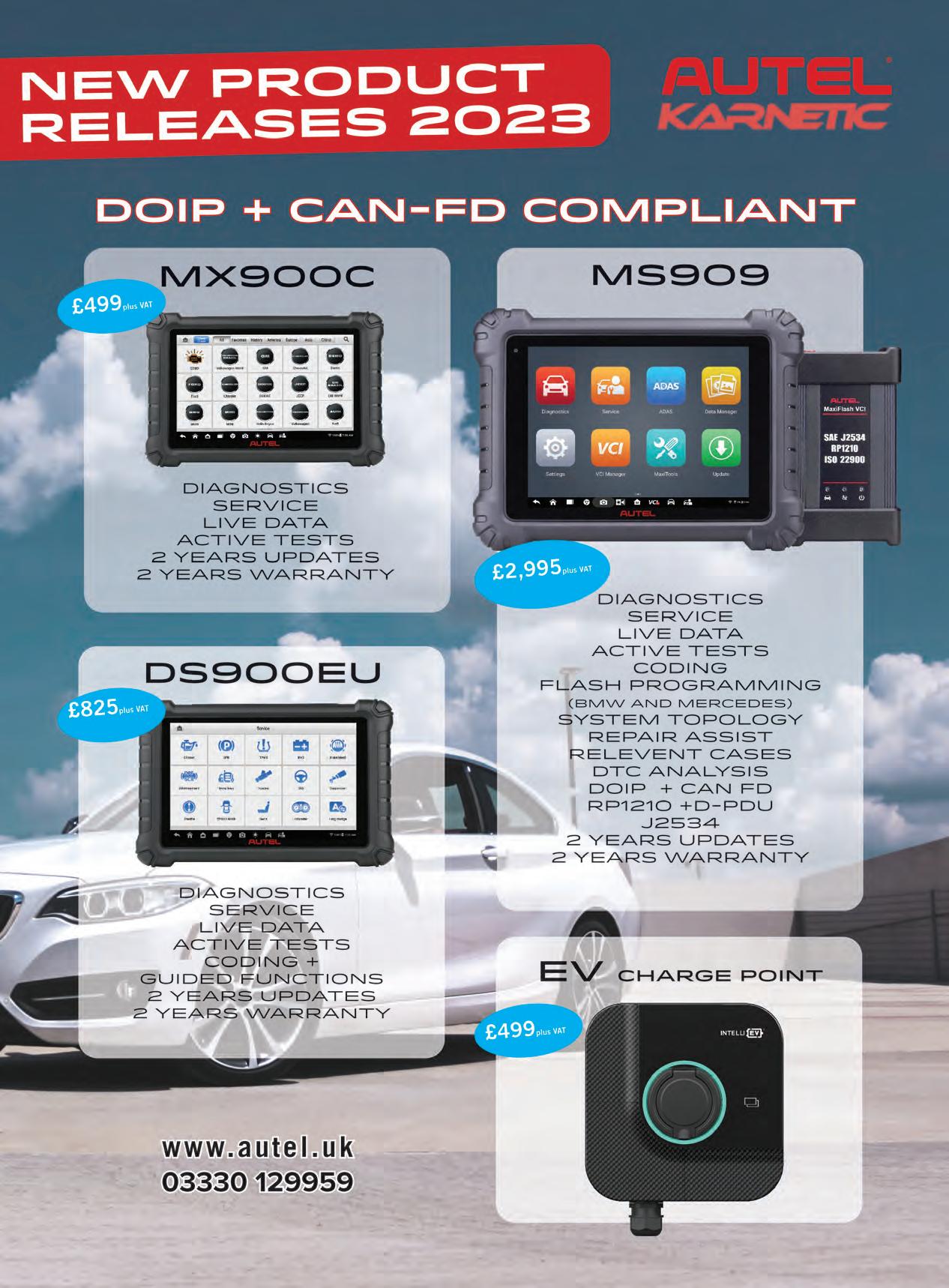
HOW TO
Replace the clutch and DMF on a 2012 Ford Focus 1.6 EcoBoost
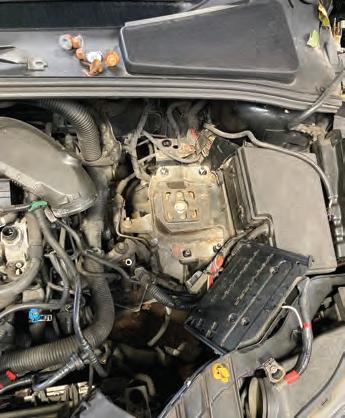
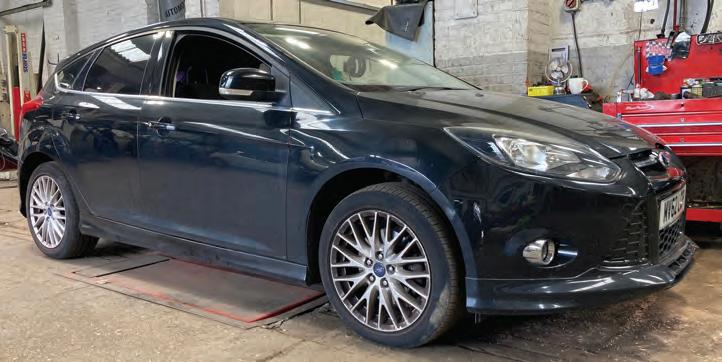
In this month’s Schaeffler LuK Clutch Clinic, REPXPERT Alistair Mason is replacing the clutch and dual mass flywheel (DMF) in a 2012 Ford Focus 1.6 EcoBoost that has covered more than 86,000 miles. The customer reported that the vehicle was difficult to get into gear and the initial diagnosis indicated a clutch disengagement problem, so the customer was advised that gearbox removal was required to pinpoint the exact cause and their authorisation was given.
Vehicle Information

Manufacturer: Ford
Model: Focus
Year: 2012
Engine 1.6 EcoBoost
Mileage: 86,000
Schedule time: 4.3 hours
Gearbox removal
If it’s required, after locating the locking wheel bolt key, place the vehicle on the lift, open the bonnet and remove the engine cover and complete air filter assembly, then disconnect and remove the battery, battery tray and carrier (Fig.1), which provides good access to the top of the gearbox. Ease the gear change cables off the selectors, unbolt the cable bracket and stow against the bulkhead. Remove the upper bellhousing bolts, disconnect the hydraulic clutch pipe at the concentric slave cylinder (CSC), but make sure the rubber seal stays on the pipe and blank the pipe to stop the fluid running out (Fig.2).
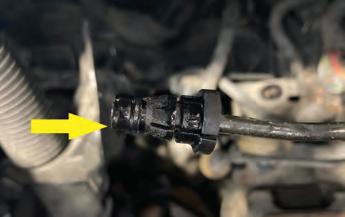
Raise the lift to waist height and remove the N/S/F wheel and wheel arch liner, raise the lift to gain access to the underside, and remove the engine undertray. Drain the gearbox oil and whilst the oil is draining remove the catalytic converter supporting
bracket (Fig.3) and the lower gearbox pendulum mounting. Remove the N/S bottom ball joint pinch bolt, ease the ball joint out of the hub carrier, push the hub assembly outwards and remove the N/S driveshaft from
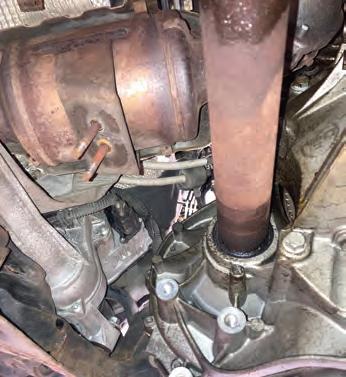
READ ME TO COLLECT YOUR CPD POINT CPDZONE 26 SEPTEMBER 2023 PMM
the gearbox, but the O/S driveshaft will stay in place when removing the gearbox. Remove the lower bellhousing bolts and starter motor bolts, leaving two, easily accessible bolts to support the gearbox until the point of removal. Support the engine using either an engine support or a second transmission jack, access the engine bay and remove the top gearbox mounting bolts, then lower the engine slightly and remove the gearbox mounting bolts that are accessed from the N/S wheel arch (Fig.4), then remove the mounting.
Support the gearbox with a transmission jack, remove the final bellhousing bolts, ease the gearbox away from the engine, and when clear, remove the gearbox from the vehicle and stow in a safe area.
Diagnosis and clutch replacement
With the gearbox removed, the fault was clear: a finger of the diaphragm spring had broken off restricting the movement of the clutch (Fig.5). With a clutch replacement required and a new DMF advised, authorisation was
given for the complete repair.
With the clutch and DMF removed from the car, inspect the back of the engine for any leaks that could potentially contaminate the new components, and scan the QR code on the LuK replacement box with the REPXPERT app to obtain the service information and technical bulletins, as well as the fitting instructions and torque settings.
Mount the new DMF onto the crankshaft, install the new bolts and torque to the manufacturer’s specification (Fig.6) and degrease the DMF face with clutch and brake dust cleaner.
Turning to the gearbox, remove the CSC, clean the bellhousing area so that the old clutch dust does not contaminate the new clutch and DMF, and carefully fit the new CSC, ensuring it is located and tightened correctly (Fig.7).
Apply a light smear of high melting point grease onto the gearbox input shaft splines, mount the clutch plate onto the input shaft to evenly distribute the grease and also confirm the correct fitment of the clutch plate, then remove the clutch plate from the input shaft, and wipe off any excess grease.
Mount the new clutch
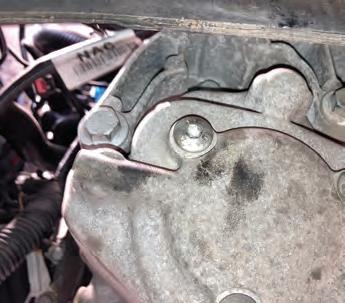
the DMF using the clutch
tool
make sure the clutch plate is the correct way around, indicated by “Gearbox side” facing the gearbox. Degrease the clutch pressure plate surface using clutch and brake dust cleaner, tighten the bolts in an even and sequential manner, and torque to the manufacturer’s specification.

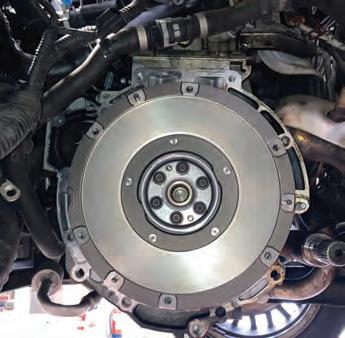
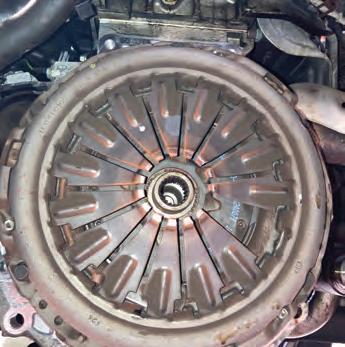
Before refitting the gearbox, place a drainer under the clutch pipe and flush out the old clutch fluid, before replacing it with new fluid of the correct specification, because old, contaminated fluid, can cause the new seal in the CSC to swell and fail. In this instance, the clutch system was bled using a vacuum bleeder. Check the gearbox alignment dowels are located correctly and that the bellhousing area is clear of cables etc., so not to foul or get caught when installing the gearbox.
Gearbox installation
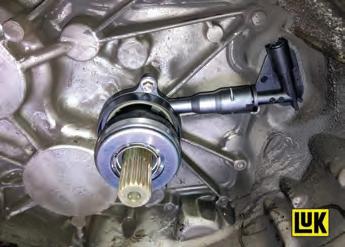
With the aid of a transmission jack, bring the gearbox close to the engine, take time to align the gearbox correctly. Bring into line the O/S driveshaft, ease the gearbox input shaft into the clutch and then ensure the gearbox locates onto the alignment dowels. Insert two bellhousing bolts and tighten, then fit the upper gearbox mounting and tighten in position. Refit all other bolts and components in reverse order of their removal and refill the gearbox with oil.
After the battery lead has been reconnected, reset all electrical consumers and carry out a full road test to ensure that the repair has been successfully completed. WANT TO
WWW.RDR.LINK/ABA004

PMM SEPTEMBER 2023 27
onto
alignment
(Fig.8), but
MORE INFORMATION
KNOW MORE? FOR
E V




STATE OF CHARGE
State of charge is a measure of the amount of energy left in a battery compared with the energy it had when it was full. It gives the driver an indication of how much longer a battery will continue to work before it needs recharging. It is considered as a measure of the short-term capability of a battery.
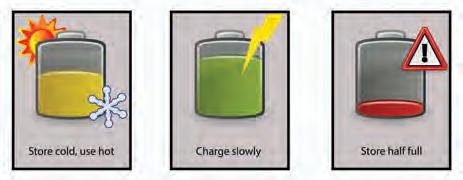
However, it is more difficult to define SOC than it would first appear. It is defined as the available capacity expressed as a percentage of a given reference, which could be its:


● rated capacity (as if new)
● latest charge-discharge capacity.
A vehicle that has a range of, say, 100km on a fully charged brand new battery, could reasonably expect a range of 50km if it was 50 per cent charged. However, after ten years or so, the capacity of the battery when fully charged may only be 80 per cent of what it used to be. An indication of 50 per cent charge would now only give a 40km range.

Because electric vehicles use the SOC to determine range, it should ideally be an absolute value based on the capacity of the battery when new. Several methods of
BATTERY HEALTH ASSESSED
Assessing the condition of an EV battery easy. However, there are two main indications we can use: state of charge (SOC), and state of health (SOH).
reduces degradation over time. The voltage changes are therefore even smaller. Nonetheless, taking all factors into account, a voltage measurement under a known load, gives a reasonable estimate of SOC.
It is also possible to calculate state of charge by measuring current and time (in or out). Current multiplied by time gives a suitable value for SOC.
STATE OF HEALTH
performance deteriorates due to physical and chemical changes. Unfortunately, there is no agreed definition of SOH.Cell impedance or cell conductivity is often used as a reasonable estimate of SOH. More complex systems monitor other parameters and involve a range of calculations. Because SOH is a figure relative to the condition of a new battery, the measurement system must collect and save data over time and monitor the change.
estimating the state of charge of a battery have been used.
The easiest way to monitor SOC is a voltage measurement, but this does depend on several factors. An open circuit voltage will be higher than when current is flowing due to cell internal resistance.
Temperature also has a big effect. Lithium-ion batteries also have a cell voltage that doesn’t change that much between fully charged and fully discharged. Most are also actually operated between 80 per cent and 20 per cent as this

The state of health (SOH) of a battery is a measurement that indicates the general condition of a battery and its ability to perform compared with a new battery. It considers charge acceptance, internal resistance, voltage and self-discharge. It is considered as a measure of the long-term capability of a battery.
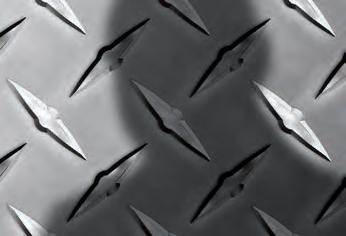
SOH is an indication not an absolute measurement. During the lifetime of a battery, its



Counting the charge/discharge cycles of the battery is a measure of battery usage and can be used to indicate SOH, if compared to the expected values over time. This is because the capacity of lithium-ion cell deteriorates quite linearly with age or cycle life. The remaining cycle life can therefore be used as a measure of SOH.
There is talk of regulations forcing manufacturers to display their vehicle’s battery SOH.
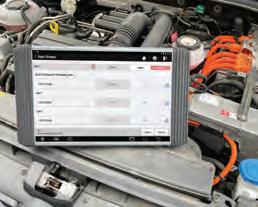

Sponsored by FOR MORE INFORMATION GO TO WWW.RDR.LINK/ ABA005
READ ME TO COLLECT YOUR CPD POINT
FIG.2 Cell voltages indicating SCO can be displayed on a scanner
FIG.1 Battery management unit on a Nissan Leaf
FIG.3
Good advice
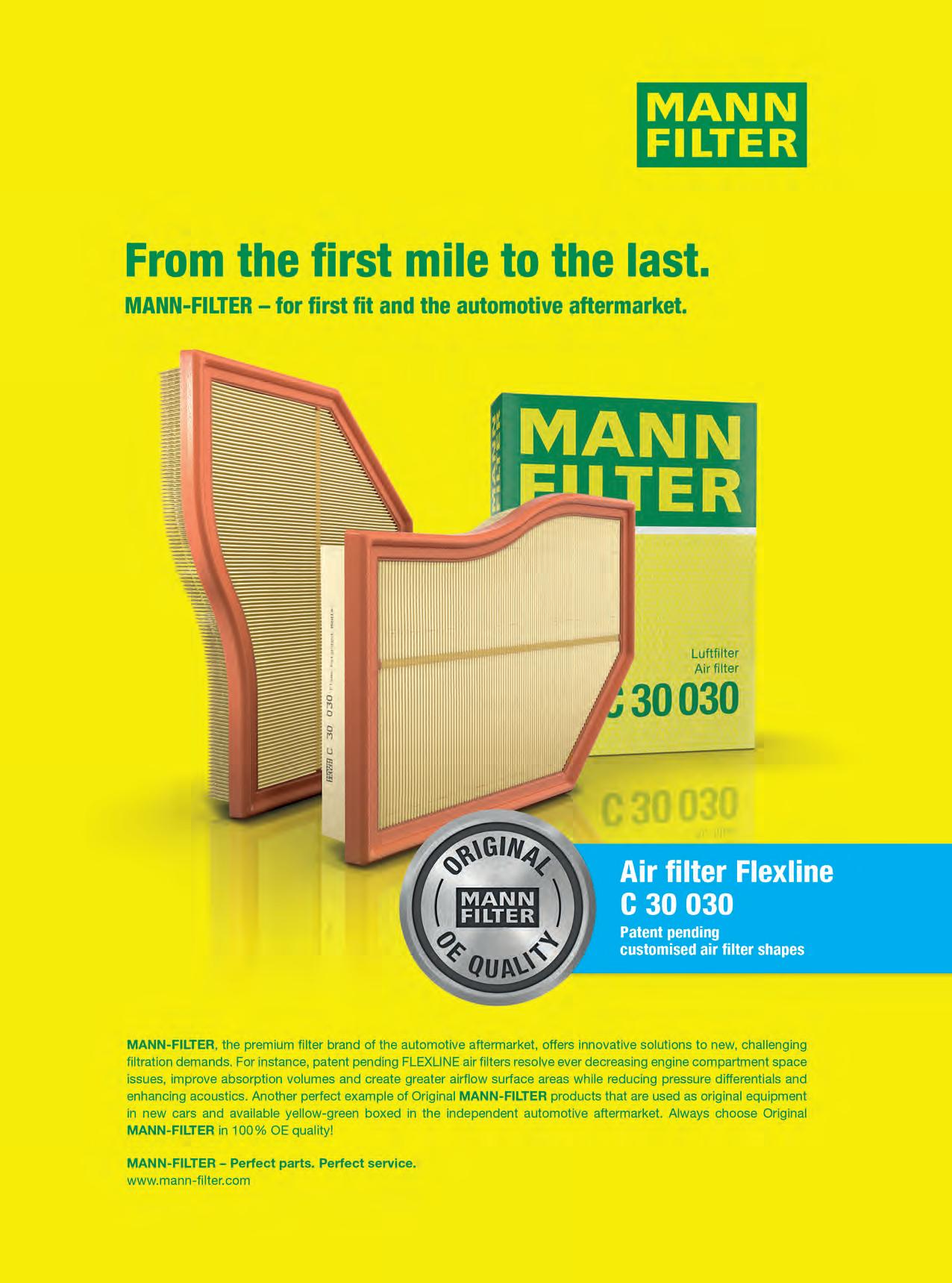
Using Bosch’s ESI[tronic] 2.0
software: a monthly guide
A few years ago, PMM ran a guide from Bosch on its KTS diagnostics software, ESI[tronic] 2.0. We thought it would be a good idea to revisit the guide with Bosch and find out what’s changed. We are beginning this month with selecting the right vehicle.
The ESI[tronic] software was designed by Bosch to enhance the potential of your workshop, integrating easily with the KTS 5xx series of VCI (Vehicle Communication Interface) hardware, so you can connect to your workshop PC or laptop and enjoy fast, accurate diagnosis and analysis, across the full range of vehicle types.
Finding the right vehicle
Finding the right vehicle is key to accessing all the tabs you need to get your job done: Vehicle Info, Diagnosis, Maintenance, Manuals, Circuit Diagrams (depending on subscription level), Known Fixes and Equipment (parts). These tabs will guide you through all the relevant functions and data for that specific vehicle, allowing you to carry out your workshop tasks in the most efficient way. Let’s look at two ways to select the right vehicle.
1. Automatic VIN identification
The most intuitive way to identify the correct model. Simply ensure the VCI is already connected to the vehicle and – in most cases – it will automatically retrieve the VIN details by serial diagnosis from the mode 9 of Global OBD II. This will put all the possible vehicle selections associated with this VIN at your fingertips. When identifying a vehicle using the ‘VIN Identification’ tab, the user will generally be presented with a list of 1-3 Robert Bosch (RB) key possibilities, which the user can then select from (Fig.1).
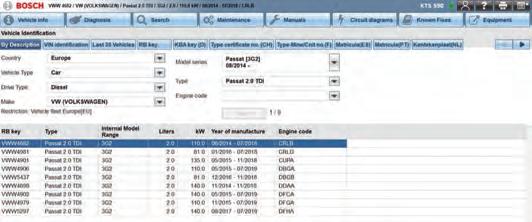
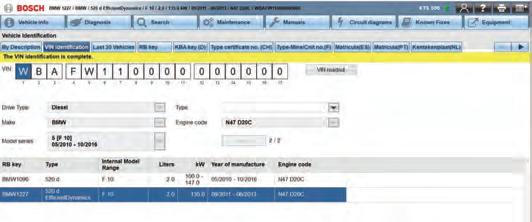
It is also important to point out that some models do not store the VIN in mode 9 of Global OBD II. If this is the case, users can manually type in the VIN and search the database for an RB key this way.
2. Manual search
Unfortunately, with some manufacturers, the VIN associated with some cars does not include model specific details. This means the list of possible vehicles can be quite long. In which case, you would need to narrow your search parameters by adding some additional details in the search ‘By Description’ option for more accurate results. Refining your search through everything from Make, Model and Country to Drive Type and Engine Code.
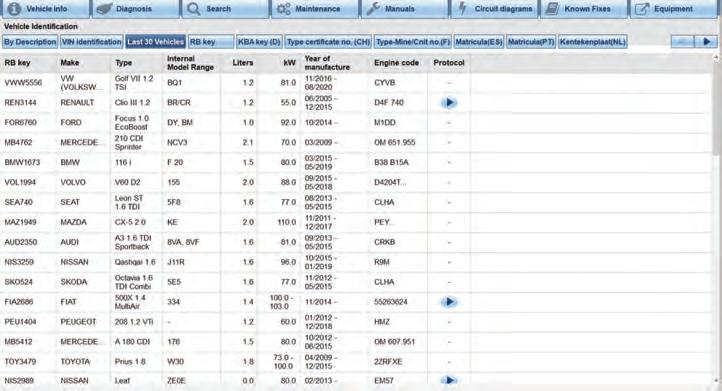
For example, searching for a Volkswagen
Passat 2.0 TDI (2014) returns nine possible RB key selections. Refining this selection just slightly further by engine code (CRLB) then brings the RB key options down to one. Your desired vehicle will then be highlighted in blue, and you can get on with the job at hand with minimal disruption (Fig.2).
The vehicles you most recently worked on can be recalled at the touch of a button via the ‘Last 30 Vehicles’ tab (Fig.3).
Selected the wrong vehicle?
There may be occasions where you mistakenly select the wrong vehicle, in this case the diagnostic ECU system that you need is not fully identified, and some diagnostic functions may not work properly –but there’s no need to worry.
If you find yourself in this position, a
30 SEPTEMBER 2023 PMM READ ME TO COLLECT YOUR CPD POINT CPDZONE
‘Basic Program’ warning message will pop up on the screen. If you continue with this, you may see unknown Diagnostic Trouble Codes (DTCs) or Actual Values that are not accurate or supported. The servicerelated information and technical data could also be wrong, which will not help any user or technician carry out their job and diagnosis efficiently.
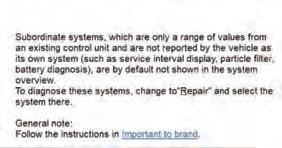
You can check the vehicle coverage by scanning the QR code below


Diagnosis
Once you have identified the correct vehicle, all that remains is to follow the process set out across the tabs at the top of your screen. You can use the main tabs across the top row of the screen to navigate through the software to perform the expansive range of diagnostic testing. This allows you as the technician to tick off the diagnostic tests and service-related tasks and functions as you go (Fig.4).

Coverage
The ESI [tronic] software comprises vehicle data for over 90,000 vehicles, from around 150 brands, each with many models. Scan the QR code below to see for yourself.
Next month we will take an overview of the system and explain how to use its reporting function to keep customers informed.
WANT TO KNOW MORE?
WWW.RDR.LINK/ABA006
REDEEM YOUR CPD
Congratulations, you have reached the end of the CPD Zone!To access your CPD credit from The CPD Group, scan the QR Code below or WWW.RDR.LINK/ABA040
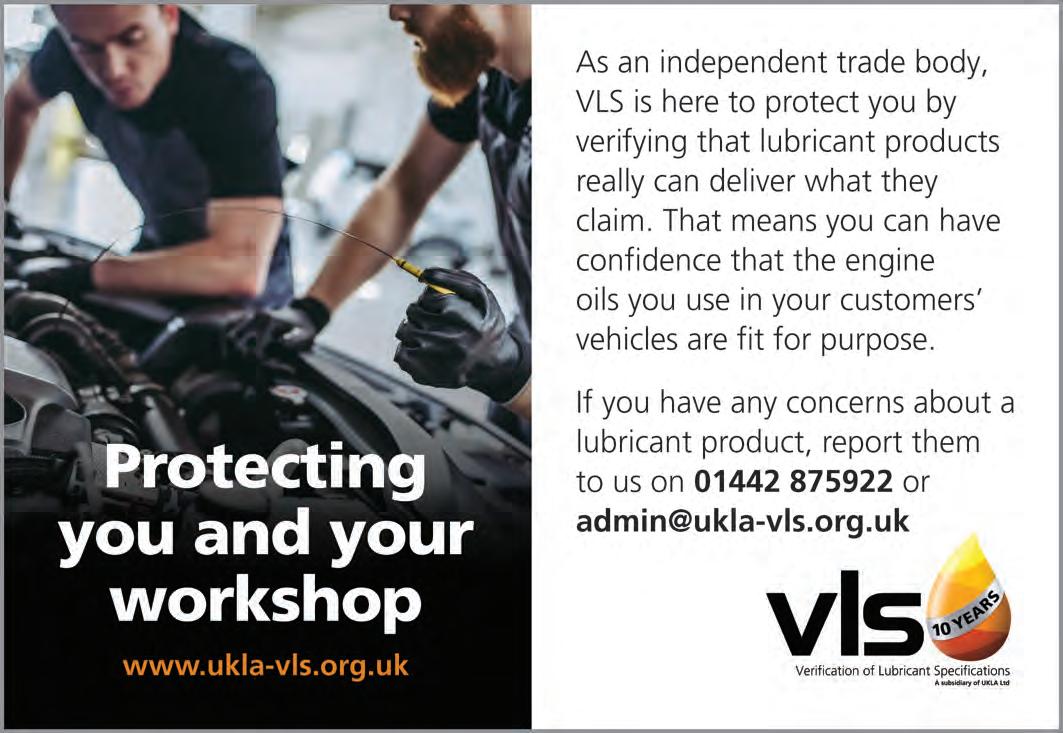 CREDIT
CREDIT
A look inside:
PMM THE PODCAST
The PMM team took the podcast studio to Automechanika Birmingham this summer for its Industry Insights episode. Listen to the episode to hear what three of the biggest players in the aftermarket had to say about the future of our sector. Here, podcast host and PMM editor Kieran Nee brings you his favourite parts of the episode.
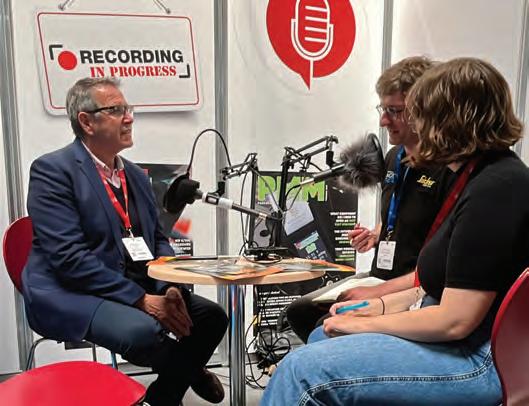
’ll find us a quiet room to do the podcast in”: the helpful words I’ve heard a million times by now (or more accurately, probably around 14 times, considering that’s how many episodes we’ve done) and each I’ve replied, “no don’t worry about it, a bit of background noise actually sounds good”. So when we decided to make our Automechanika debut this year, the opportunity for some excellently sound-scaped interviews was too good to pass up.
I duly put the feelers out and received a lot of responses – mostly along the lines “I can’t believe it, PMM is coming to Mechanex??”. It was a surprise to many, after all, that we were exhibiting at a show other than our own Mechanex show. Many people, however, jumped at the chance to feature on the aftermarket’s number one podcast: The PMM Podcast. We showcased three of them on our recent Industry Insights episode and we thought we’d share some of their thoughts with you here. Enjoy!
Sometimes we are accused of being a sort of name and shame organisation, but that’s not the number one priority –that’s not what we are here for. Education, for us, is the number one priority. Most of what we do is about advising the blenders or the additive providers or the whole supply chain on how to make the correct claim so that we don’t mislead the distributors or the customer themselves, and do damage to the vehicle.
“We always feel a little bit disappointed if we get to the point where we have to get the manual out and start following
the process to pass on names to trading standards. We see that almost as a failure on our behalf because we haven’t been able to persuade the parties concerned of the purpose of the VLS.”




Are cases on the rise or declining?
“We saw a big drop during the pandemic, which is no surprise because everybody had plenty of other things on their minds. But since then we have seen a resurgence and we’ve seen an uplift.Ithinkthat’sdownto greater complexities in the lubricants industry coming through.”
I think the pandemic must have had an impact, encouraging the growth of mobile mechanics. It's always hard to get exact numbers of mobile mechanics, but I think from a consumer's perspective, it definitely drove the wish to have work done at home. But I think the actual numbers of mobile mechanics and mobile repairers was growing anyway and we could see that even back in 2016. But I think each it's grown higher and higher.”
How is the cost of living affecting the aftermarket?
“Partly, customers are looking for a freebie. Let's be plain, the number of contacts and cases we've had up to May this year is up around 30-40 per cent on the same period last year. What we're also seeing is where before consumers were maybe willing to just have the repair redone or have it done to their satisfaction, we're seeing more now that they want to reject the vehicle or reject the repair and get the repair and full compensation. So, they are being more demanding on what they get and we're seeing more cases.”
32 SEPTEMBER 2023 PMM
Mike Bewsey, chairman, VLS (Verification of Lubrication Specifications)
Bill Fennel, managing director, the Motor Ombudsman
‘‘I
Steve Nash, chief executive, the IMI
Well, I think you'd have to have been under a rock not to realise that in general terms the whole economy is suffering with a shortage of people. There are a lot of reasons for that. I mean, we can't hide from the fact that Brexit had an effect on an awful lot of people who were here working. Post-pandemic, just over 20 per cent of the potential working population decided not to come back to work.
The unfortunate thing is that of all the sectors that you can look at, we are one of only three

sectors where that problem is still getting bigger, despite the cost of living crisis driving people back to work. Right now there are 26,000 vacancies in automotive and I’m talking about that part of automotive that’s outside the factory gates.
Where do we need skilled technicians?
“The engagement with electric vehicle qualifications has been fantastic. We had a skills gap projected for 2026 and that’s moved up to 2029 now. But
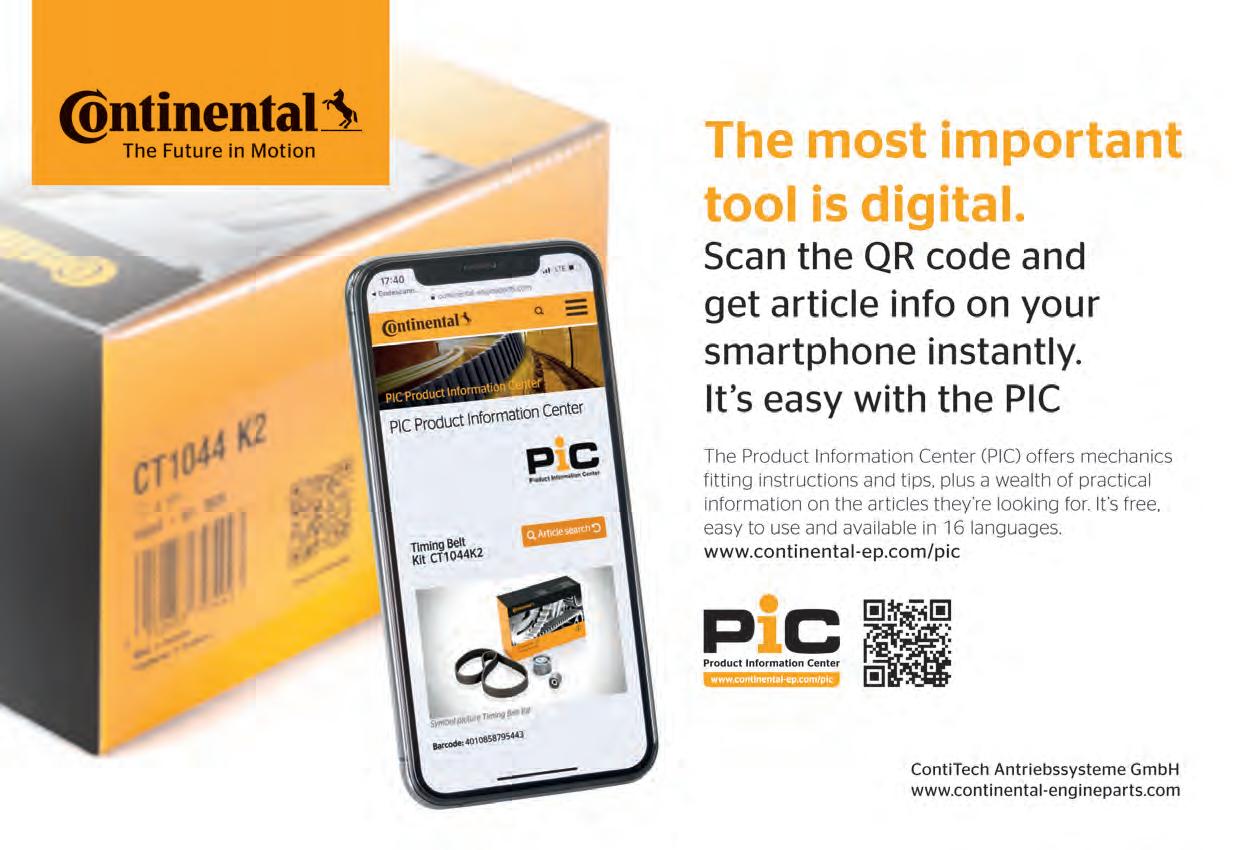
we’re still going to need 103,000 roughly people, to be qualified to cope with the job in 2030. However, what we’ve revealed more recently is that there’s a bigger skills gap around ADAS: bear in mind that from the middle of last year, every single
car coming off the production line and sold in this country has ADAS at a minimum level, and that minimum level is around about 11 systems. We are showing a huge skills gap there at the moment.”
TO ALL OF THE EPISODES SO FAR ON THE PLATFORM OF YOUR CHOICE, SIMPLY SCAN THE QR CODE
LISTEN
Industry charity Ben makes MECHANEX seminar debut!



The PMM Live team is delighted to announce its latest partner – industry charity Ben. Here, PMM editor Kieran Nee catches up with Ben’s Rachel Clift to chat about the upcoming show.


2023 sees PMM once again rounding up the most important suppliers in the aftermarket to provide workshop owners and technicians with an engaging, informative day out of the workshop. The UK’s longestrunning trade show dedicated solely to the independent aftermarket will once again be held at Sandown Park on Tuesday 7th and Wednesday 8th November.
Mechanex is well known within the independent aftermarket for offering visitors a hands-on experience, bringing them the latest updates and expertise from across the industry and providing an exciting day away from the workshop. Registration to visit the show is free and so is parking, so why not come and take a look at what the biggest names in the aftermarket have to show you. In such a competitive industry, Mechanex is an opportunity you can’t afford to miss.
If you like PMM, you’ll love Mechanex –it’s simply the magazine in a live format.
What will you be talking to the Mechanex audience about?
I will be providing insights into the health and wellbeing of those who work in the automotive industry, as well as raising awareness of the services and support that Ben (the automotive industry charity) offers.
Have you spoken at trade shows before? What do you like about them?
I have spoken at trade shows before and they are the ideal platform to network and find out about the latest insights and trends of the industry.
What has Ben been up to this year?
We have been very busy supporting those who work, or have worked, in the automotive industry with their health and wellbeing. It’s a tough time for people right now with the costof-living crisis so we’re supporting people in many ways. We have a record number of people coming to us for support, not just
about money worries, but also because of the knock-on effect that the cost-of-living crisis has had on their health and wellbeing, particularly mental health.

Why are events like Mechanex important to mechanics and to Ben?
It’s really important for us to attend events like Mechanex to raise awareness about the services and support that Ben provides. We want everyone in the automotive industry to know that Ben is there for them, providing support with their health and wellbeing through our free and confidential online selfhelp, helpline, support and specialist services. So, if you’re worried about your physical or mental health or concerned about your general wellbeing, we’re here to help.
Are you looking forward to the show?
I’m very much looking forward to the show, it will provide a great platform to share more about the support and services that Ben provides to those who may not already know about us.
34 SEPTEMBER 2023 PMM REGISTER HERE:
TO FIND OUT MORE
THIS YEAR’S MECHANEX AND
GO TO WWW.MECHANEX.INFO ● SANDOWN PARK ● 7-8TH NOVEMBER ● FREE ENTRY
Q&A with Ben’s Rachel Clift, health and wellbeing director
ABOUT
PMM LIVE
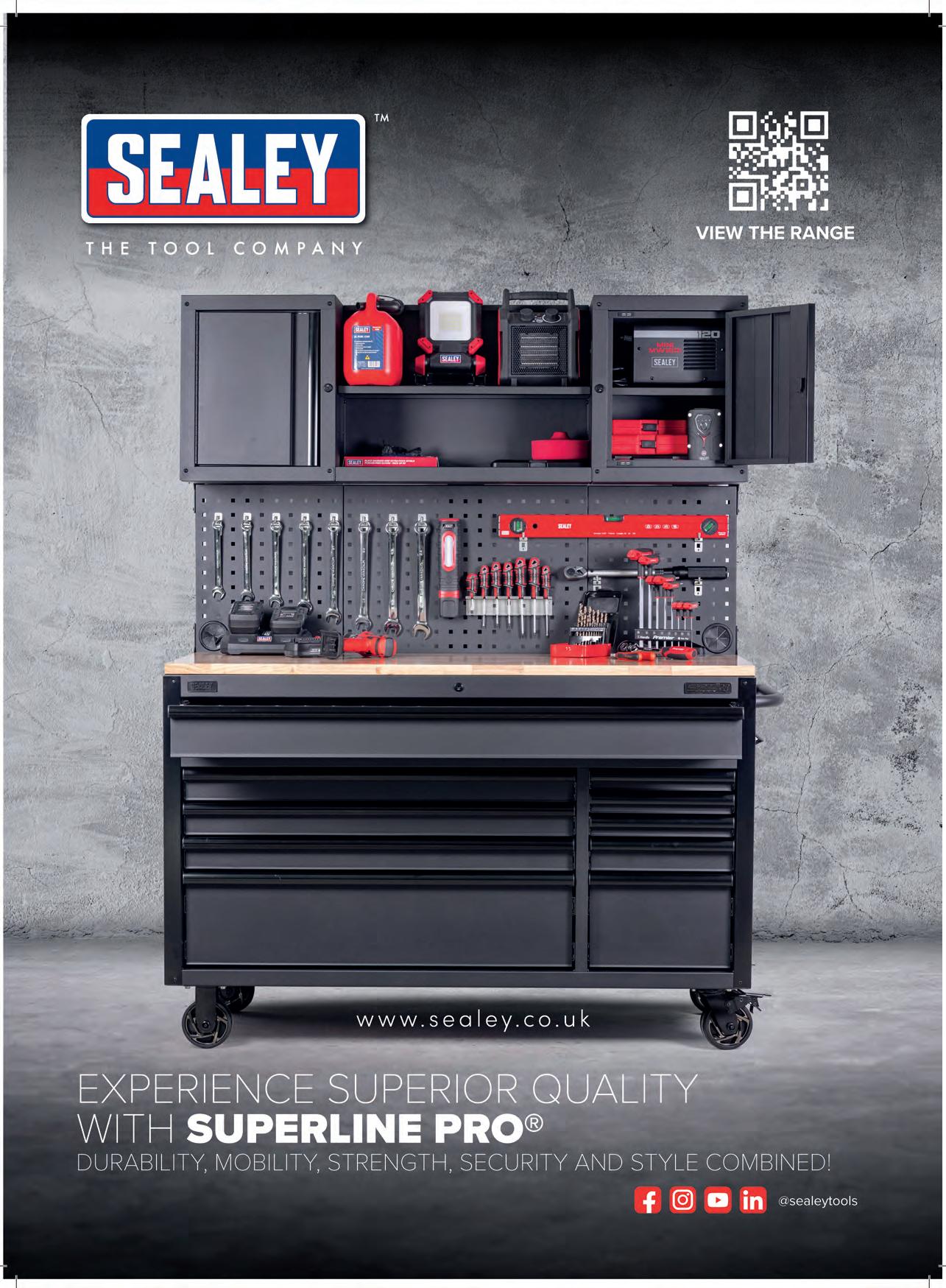
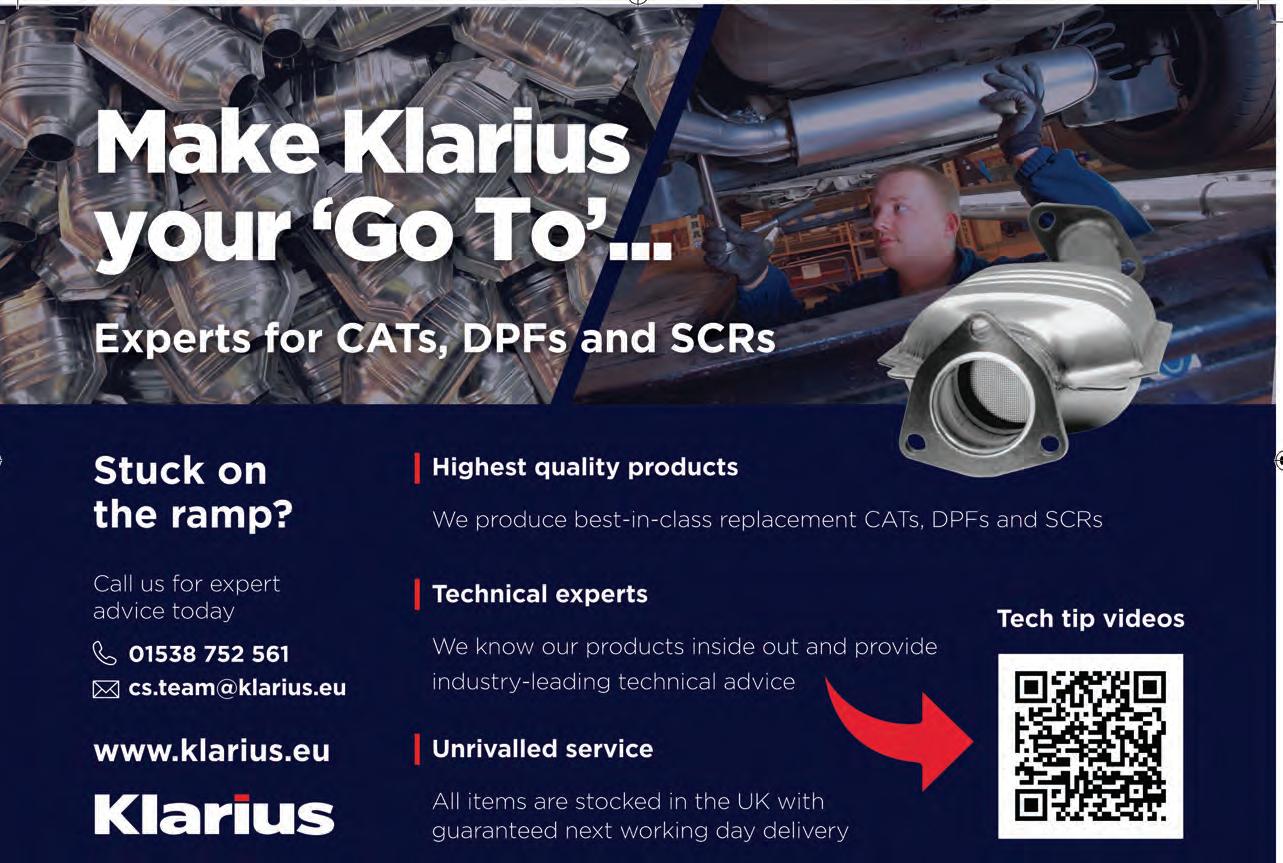
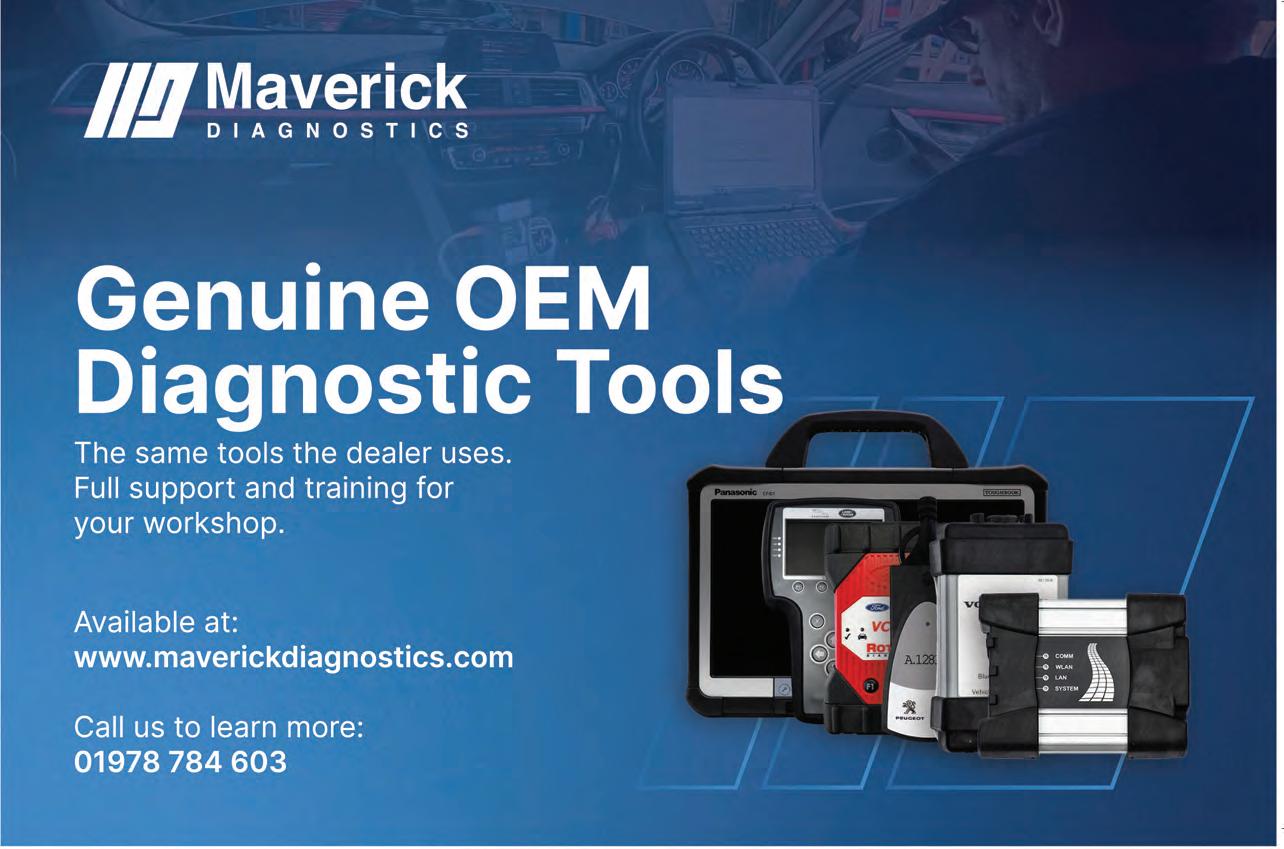
TRAIN to RETAIN staff
With even simple tasks now requiring skills such as coding, Delphi’s training solutions aim to take the pressure off stretched workshops.
Autonomous driving technologies, electrification of the vehicle parc and different diagnostic processes are amongst the key step-changes independents face and are all driving demand for quality technical training.
“Cars are changing,” said Luke Garratt, technical services manager at Delphi. “The drivetrains, the onboard technology and the methods of interacting with the vehicle are all transforming.”
More and more garages are looking to adopt structured training and development programmes to maximise these opportunities.
“Motivation might be getting ahead by winning more work or it can just be about keeping up,” said Luke. “Even doing some of the simplest service jobs now require access to the vehicle’s ECU and coding capability so new skills, new equipment and a commitment to continual learning are absolutely essential.”
Delphi’s comprehensive offering includes diagnostic programmes, face-to-face training in Leamington Spa, online learning through the Delphi Academy and tips, hints, articles and ‘How To’ videos also available at the new Masters of Motion hub. According to the manufacturer, training should be subject to cost-benefit or return on investment scrutiny like any other business decision.
“Garages have to make tough calls on how to allocate their resources,” said Luke.
“We’re finding staff retention is a key driver for training these days.
“Recruiting skilled technicians is difficult and expensive so a modest ongoing investment in training over several years can pay for itself in making it easier to attract new technicians.”
Staff retention is boosted too because technicians who feel they are developing their abilities won’t be as easily tempted to move for a few pounds more in their pay packet, according to Delphi.
“It’s a big ambition but we want to offer the complete training solution,” said Luke. “That means covering lots of scenarios and technologies within a flexible blended framework that provides a clear progression route for the technicians and business owners involved.”
Blended learning
Delphi currently offers face-to-face training from its facility in Leamington Spa.
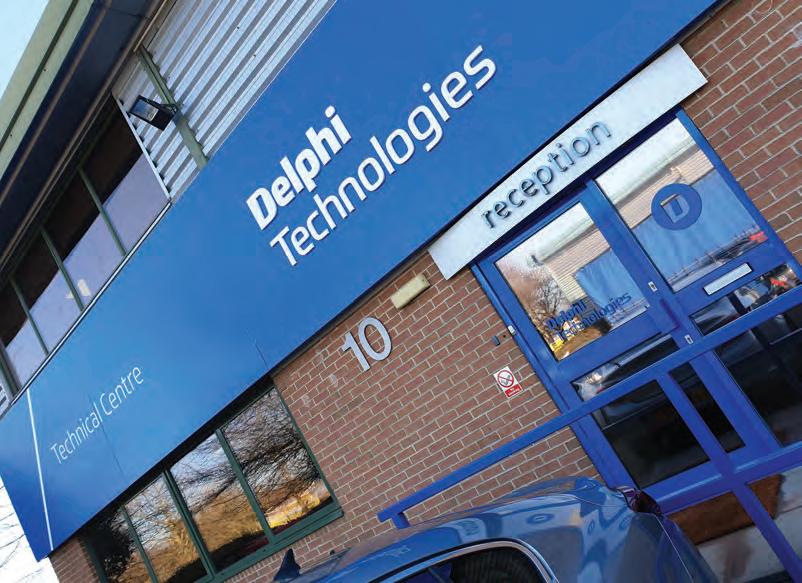
“We’ve focused on future technology within the centre,” said Luke. “We’ve got vehicles, service equipment and test rigs for technicians to work on – there’s still no substitute for ‘hands on’ learning.”
Delphi’s combined e-learning solution offers a total of over 300 individual modules varying in length from a couple of minutes to nearly an hour each, with most content available in multiple European languages.
The online learning is constantly evolving with new content being added.
Since its inception in 2021, the Delphi Technologies Academy has seen around 1,200 users gaining flexible access to more than 300 courses and modules, all of which have been compiled by Delphi’s in-house trainers.

“The Delphi Academy gives a convenient way to enhance skills and knowledge without the challenges of attending physical training,” said Luke. “There’s a training Needs Assessment which includes a series of questionnaires and online ‘practicals’ before suggesting modules to complete tailored to that user. Hybrid and electric vehicle training is the perfect example of the benefits of a true blended learning experience. For the more advanced EV course we provide six hours of online pre-learning on electrical systems to try and get the foundation knowledge of electrical principle to then build upon in the training centre.”
Delphi’s combined e-learning offering comprises 16 courses on vehicle electrics, hybrid and EV alone. In all, there’s a total of over 100 modules varying in length from a couple of minutes to nearly an hour each.
PMM SEPTEMBER 2023 37 BUSINESS & TRAINING WANT TO KNOW MORE? FOR MORE INFORMATION WWW.RDR.LINK/ABA007
Considering CONVERTING a classic car into an EV?
Read this first (part one)
As featured recently on the PMM Podcast, Fellten provides kits and assistance to workshops taking on classic car-to-EV conversion as an extra offering. Here, the team behindthe kits answers some of the questions you need to be asking before getting started.
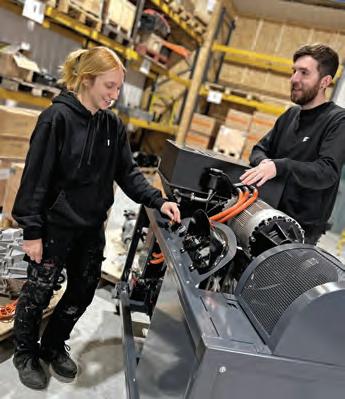
High voltage or low voltage?
Before you do anything you need to decide what voltage motor you are going to use. Everything else ‘spins’ off that decision. Lower voltage systems (80v to 160v) have been used for years, are generally lower cost and lower power AC motors (Hyper 9 is a good example). Higher voltage systems (300v-800v) are what the OEMs are using and are also typically higher power AC motors/inverters. If you want to use any components from OEM donor vehicles like Tesla, VW, Jaguar Land Rover etc, you will be committing to a high voltage setup. You need to determine the power you require and see what is available/affordable. The inverter obviously needs to be compatible with the system voltage/motor you chose at the beginning. The ZONIC range of motors for example, come with matched inverters, are high voltage and can come with various gearbox options for transverse or longitudinal mounting.
What battery do I need?
A suitable high voltage battery pack will likely be the single largest expense of the conversion. It needs to be sized properly both in total energy capacity as well as instantaneous current capability to support the power you want to make, and not be too big to impact the vehicle’s safe handling. (Aim to stay within or at least very close to the vehicle’s original kerb weight). The BMS (Battery Management System) is the “brain” of a battery pack. It closely monitors the battery condition, voltages and temperatures down to individual cell levels and, working with the charger and Vehicle Control Unit (VCU), it tailors the energy flow in the vehicle to protect the battery cells under a wide range of
operating/charging conditions. It also balances the energy available within the individual cells allowing the most efficient use of a battery’s capacity and identifying problem cells before irreversible damage is done.
A BMS provides individual cell protection by monitoring each cell’s voltage as well as the current flowing into or out of the pack. This is used along with the cell’s characteristics to determine the maximum safe current limits in its present condition which it communicates to the VCU to set limits on available power as well as the allowable regeneration energy from the regenerative braking function, why would you not have re-gen – it’s free electricity? Having a quality BMS allows the maximum power to be safely extracted from/put into a battery module at any given time.
The cell balancing feature of a BMS extends the life of the battery by continuously matching the individual cell’s state of charge with each other whilst on charge. Battery
packs consist of many individual cells that have to work together so to fully utilise the available energy capacity from the battery all the cells in a pack need to be kept at the same state of charge; as the worst cell in a pack determines the current limits for the entire pack, an imbalance in an individual cell’s state of charge results in an overall loss of effective battery capacity. The BMS seeks to mitigate against this.
How big a battery do I need?
While it is impossible to say with any degree of accuracy given the almost limitless options for EV conversions, here are some very rough estimates for how many miles you can expect to travel for each useable kw/h of capacity your battery has.
■ Economy driving = 3.2 mi/kWh
■ Normal driving = 3 mi/kWh
■ Spirited driving = 2.5 mi/kWh
■ Racing = 1-2 mi/kWh
There are so many variables that affect this that you should take these numbers as a very loose guide.
How do I enclose the battery?
Your chosen batteries need to be securely and safely enclosed in a pack housing. They will perform at their best if they are kept within a warm, dry environment. Aim for this but allow them to ventilate via a Battery pack breather/PRV. This keeps moisture out but allows for expansion and contraction of the air within the enclosure due to heat changes, and should you have a battery fire it has a blow off valve fitted to prevent the pack from bursting. You will probably need to cool the battery modules inside the pack to prevent
SPECIAL REPORT
38 SEPTEMBER 2023 PMM
problems and keep your batteries from derating in use, or worse degrading permanently. Allow for this in your plans for your build. Placing them on cooling plates is ideal as it mounts them too, or utilising the existing modules’ cooling pathways can work well.
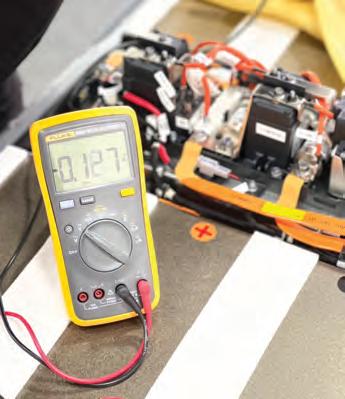
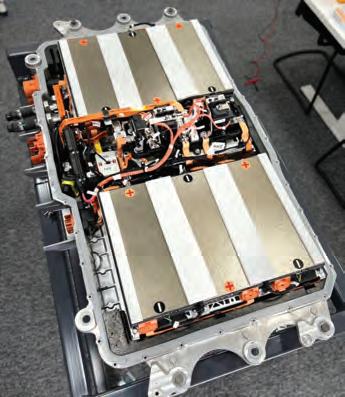
Does the drive layout matter?
Are you converting a RWD (MGB, Triumph, MX5 etc) and want to retain a traditional longitudinal driveline with a live axle? It’s very easy to spin a propshaft using a single speed reduction gearbox. Converting a FWD or RWD vehicle by putting a complete motor and differential in a new fabricated subframe?
The physical layout of the driveline needs some thought and you may find it is not as simple as you think. You may have issues getting an MOT or even re-registered if you’ve made chassis changes even with FWD conversions. Don’t make any chassis changes as this can lead to all sorts of registration
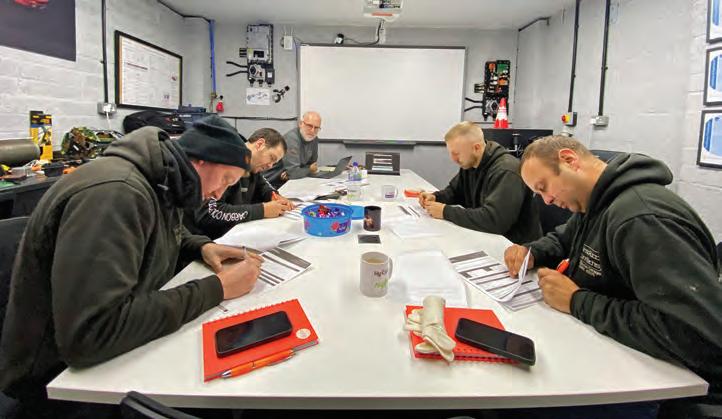
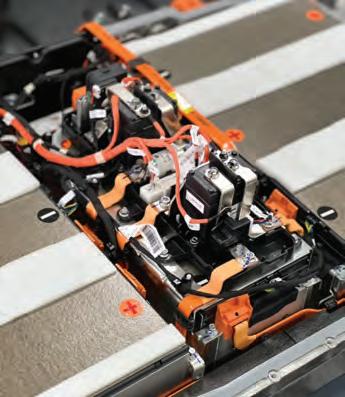
problems and ‘Q’ plates being issued. Make sure the rotation of the EV motor will work correctly and that the physical configuration fits the space. A good example here is the Tesla Model S front motor, this has the motor centreline mounted behind the differential and driveshafts and won’t physically fit in most FWD engine bays since ICE installations typically have the engine mounted ahead of the differential and driveshafts (you can make a Tesla motor spin backwards but some will require modifications to do so properly). Your drive motor will also need an inverter. The inverter takes the high voltage, the high current DC power that is provided by the battery and converts it to the alternating current electricity that is required to spin an AC motor. The inverter also controls the frequency of the power supplied to the motor to control the rotation speed and torque output of the motor. The design and operation
of the inverter is closely tied to the motor being driven. In some cases the inverter and motor are combined into a single unit, like the ZONIC 120KW unit, others are often supplied as a matched pair.
Transmission or direct drive?
Some EV conversions may perform better with gearing while high power motors may not need them. Some installations will have to use a gearbox for motor mounting and drive line reasons (think rear-engined classic Beetle) so do not automatically dismiss using a transmission. However hanging a heavy flywheel and clutch on a motor shaft that was never designed for that kind of load, along with the axial thrust issues when you push down on the clutch, can lead to problems later down the line.
Do I need a parking brake?
This is a big safety/MOT issue and it is often ignored. EVs rarely have a ‘parking pawl’ like an automatic gearbox has in the transmission and you can’t leave them “in gear” like a manual as there’s nothing stopping the motor from rotating like the compression in an ICE vehicle does, so a quality e-brake (preferably with mechanical activation functionality) should be considered, however you must always retain a hand brake/parking brake at the very least though.
Read next month’s issue for part two.
WANT TO KNOW MORE? FOR MORE INFORMATION
PMM SEPTEMBER 2023 39
WWW.RDR.LINK/ABA008
When life changes we're life changing.
Life can throw the odd curved ball no matter what stage of life you're at: money worries, illness, mental health issues, social isolation. It can create a downward spiral for you and your family. It's why Ben's here. At these moments our support and care services can be life-changing. Ever since there's been an automotive industry Ben has been helping its people and their loved ones keep life on track. Together we’ll tackle the challenges that get in life’s way and make sure they don’t, for life.
Always here for you
www.ben.org.uk
Helpline 08081 311 333
Find plenty of advice, online chat and self-help tools on our website, or talk to us on the helpline, free and in complete confidence, Monday-Thursday 8am-8pm, Friday 8am–5pm
Here for the automotive industry

A CENTURY in car repair
Earlier this year, Schaeffler announced that it had crowned its first Bonus Point Millionaire, rewarding Markhams Garage with a million bonus points on its REPXPERT app. The reward came following a promotion run by the parts manufacturer in PMM magazine to celebrate its 10-year anniversary. By chance, the random draw taken from the workshops who had purchased Schaeffler products between February and April brought up a garage with a lot of history – 100 years in fact. PMM finds out more about the workshop’s long history from the garage themselves.



Tucked away in the office at Markhams Garage in Kingsland, Hereford, is a decorative till whose story predates even the garage itself and whose origin says a lot about the strong family connection and makedo spirit behind the successful workshop. Cashing in bills on that till at the turn of the century (the twentieth century, that is) would have been Lawrence Markham, local hairdresser, or maybe his wife Marion, who brought up their son Maurice in Smethwick until 1922 – having served their dues in the Volunteer Force by that time.
Getting started
It is with Maurice that the Markhams story begins, but not before a spot of adventure. Out of the school gates, Maurice signed up for the Merchant Navy but soon returned and began repairing bicycles and motorbikes at the new family base just outside Kingsland with his younger brother.

That younger brother ended up opening a filling station and café by the A49, whilst Maurice himself built a worshop and forecourt opposite the now defunct Kingsland station. He also ran a taxi service from this site. For a

time he slept in a hammock in the workshop, which, incidentally, had no running water. Eventually, the Evans family in the opposite cottage, who managed the level crossing and the signals, took him in as a lodger, even helping out occasionally with pumping the petrol. In those days pumping the petrol meant quite literally that – pumping the petrol by hand from a tank in the ground.
In 1928, Maurice expanded his business, purchasing Rosemaund Cottage, which is where the garage stands today in the centre of the small village. Here, he used cattle sheds as workshops and housed his compressor in the brick pig sty.
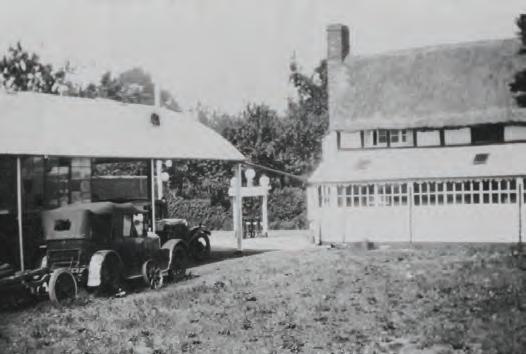
Maurice now had two garage sites and by 1940 was living in a cottage adjacent to the Rosemaund site. As it turned out, he would

marry the landlord’s daughter, Muriel. Rosemaund was a thatched, two storey, timber-framed building with two front doors, suggesting that at one time it had been two dwellings. Attached was a plot of land stretching “right back to the Glebe.” Maurice dug out the floor of the easternmost third of the ground floor and opened it up to the roadside to create a car showroom. Petrol pumps were installed and he provided a radio accumulator charging service.
Maurice didn’t work alone in the garage; indeed, after a period spent away in combat, his one-time apprentice George Griffiths returned to Kingsland to take up tools as a mechanic and bodyworker, putting to good use the skills he’d learned in service. He remained at the garage until his retirement in 1982. Also on the books from an early point was Reg Hamer, who drove buses (another part of the business, alongside taxis, fuel, vehicle sales, TV, radio and car repair…) and kept the books.
Spreading out
The two adjoining properties, Greycote and Rosemaund, provided ample space for the garage, garden and a productive fruit and vegetable garden, the keeping of a pig and







PMM SEPTEMBER 2023 41
SPECIAL REPORT The street in 1955
Circa 1930
and Percy
chickens and at the far end of both were two orchards where a number of old vehicles lay.
Day and night the phone rang in the house, and there was no extension or portable handset in those days; what’s more, family life and business were kept intertwined and balanced by the petrol pump bells ringing. Many a meal was interrupted in this way, and it could be any one of the family – now including four children, who would get up to serve the waiting customer.
An industry takes shape
In 1960 the Government introduced the MOT test, originally obligatory only for vehicles of 10 years and over. It was very basic: a check on brakes, lights and steering every year. In 1967 the test was extended to vehicles 3 years old and over. It is not known if Maurice joined the scheme straight away but having proven himself thus far to be of the enterprising sort, it’s likely he did.
The test could easily be carried out from a pit and Markhams tested this way until the early 1990s when a purpose-built testing bay was constructed. This facility has been upgraded and extended several times over the years with the testing mechanics required to undergo a refresher course every twelve months.
1966 saw son Bryan entering the garage and daughter Janice marrying local boy Godfrey Jones. The two set up home in a bungalow at the top of the garden, meaning the antique cars had to go. Fortunately, one vintage vehicle was spared: a Crosley which had lived in its own shed. At some time in the 1980s it was
beautifully restored and for several years Bryan chauffeured brides to and from their weddings. Godfrey joined the business bringing his RAF-acquired electrical skills and became a much-respected member of the company, even winning a ‘Garage Hero’ award in 2008.
In 1973, larger, more modern petrol pumps were installed, old steel tanks being filled in and new ones sunk. At much the same time a modern workshop was built at the end of the yard. Four years later, Bryan bought the premises from Maurice and the
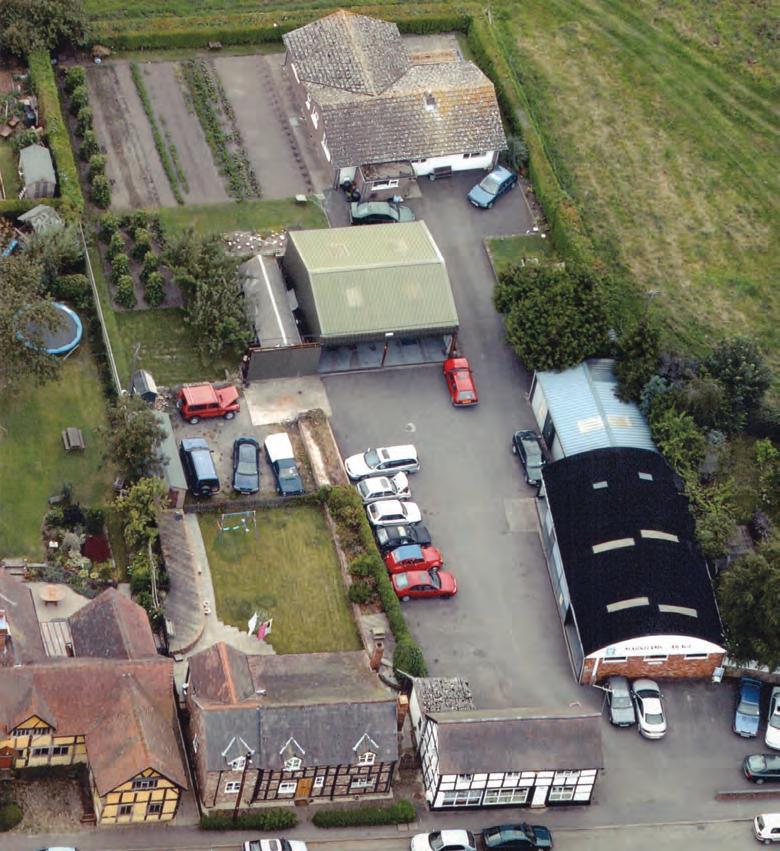
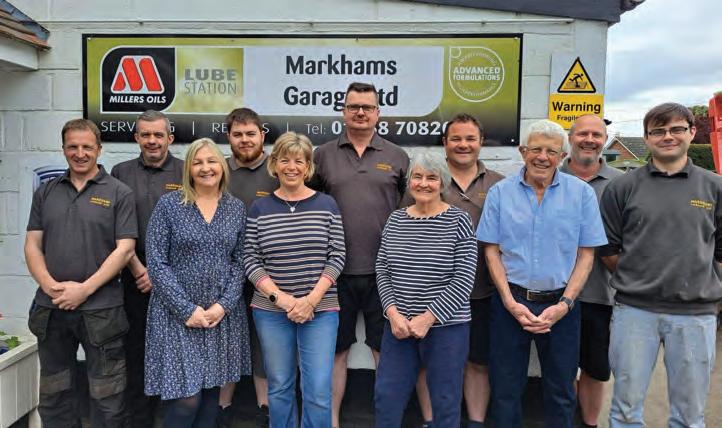
business effectively became his own.
The next few years saw the business joining a larger garage business and losing its petrol pumps, placing greater emphasis on the school bus and taxi contracts. Since the early 2000s, however, the family has focussed its efforts on the garage activities: servicing, tyre-fitting and MOTs with several fleet contracts as well as many private customers within a thirty mile radius of Kingsland. The bus bay was converted into a workshop and the existing workshop into a bespoke MOT bay.
The garage has seen many apprentices and family members join and grow (literally) with the business, adding elements to suit the skillsets of its employees. In 2005, Bryan gave up sole trader status and Markhams Garage Limited was born, with Bryan and wife Jackie as directors alongside Lisa Juson, Simon Powney and Tavey Cameron-Swan, all of whom who had come up the ranks of the business over the years. The business finally bought the land the garage sat on, land that had been given over to the garage in a piecemeal way since the beginning as the business, and family, grew and grew.
42 SEPTEMBER 2023 PMM
SPECIAL REPORT
MORE INFORMATION
The site in 2000
WANT TO KNOW MORE? FOR
WWW.RDR.LINK/ABA009
The team today after winning Schaeffler's REPXPERT Millionaire promotion
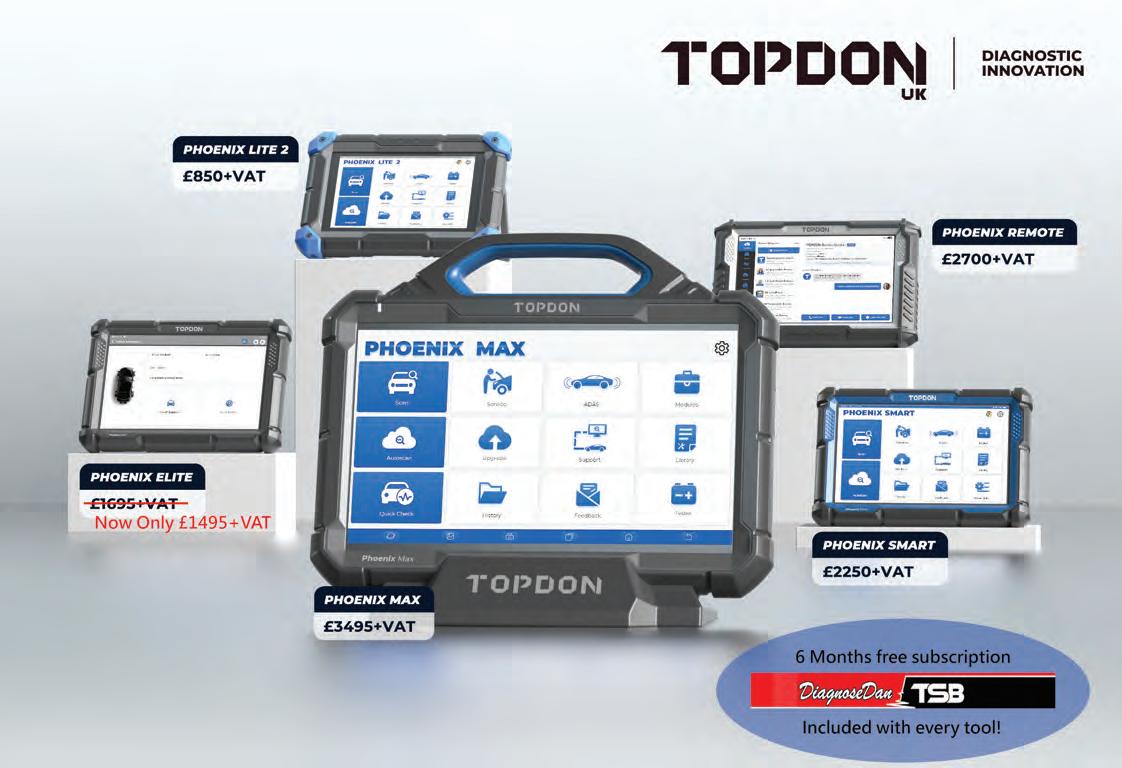
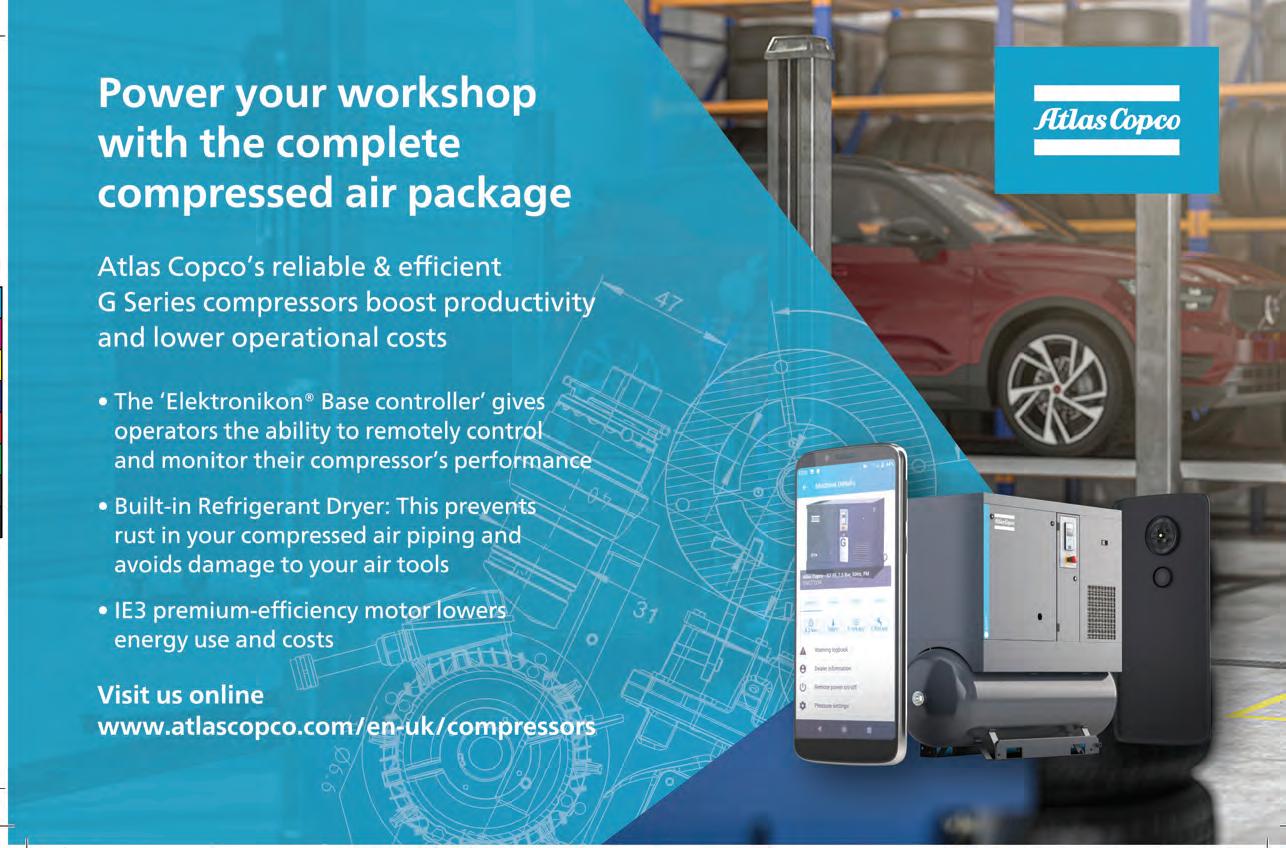
Ford EcoBoost engines on
Online
Thanks to PMMOnline, technical guides have never been easier for technicians to access. With no need to sign in, pay or subscribe, PMMOnline offers an invaluable and simple-to-use resource for the aftermarket. This month, let’s shine a light on Ford’s EcoBoost engine.
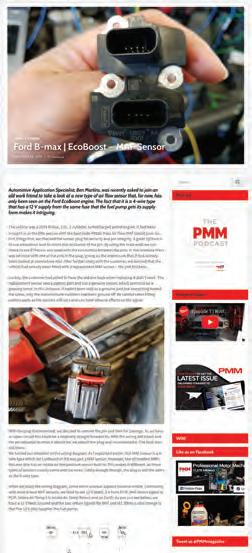
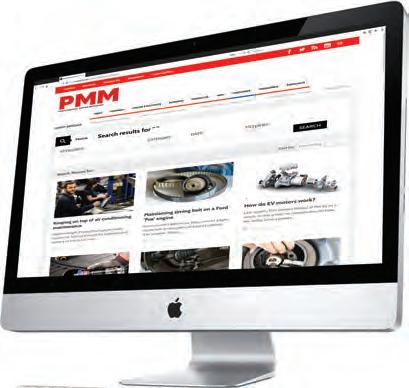
Best practice
Dayco, pioneers behind the belt in oil solution, offers some tips for handling the BIO on the EcoBoost ‘Fox’ engines.

Taking the Ford 1.0-litre EcoBoost ‘Fox’ engine, which is used in multiple Ford applications including the BMax, C-Max, Ecosport, Fiesta, Focus and Mondeo, as an example, according to the manufacturer’s service schedule, the timing belt must be replaced at 150,000 miles or every 10 years, whichever comes soonest. When it comes to the Tourneo
MAF sensor
Automotive Application Specialist, Ben Martins, was asked to take a look at a new type of air flow sensor that, at the time, had only been seen on the Ford EcoBoost engine. The fact that it is a 4-wire type that has a 12 V supply from the same fuse that the fuel pump gets its supply from makes it intriguing. The vehicle was a 2014 B-
Max, 1.0L, 3-cylinder, turbocharged petrol engine. It had been brought in as the EML was on with the fault code P0102 Mass Air Flow MAF Circuit Low. So, first things first, he checked the sensor plug for security and pin integrity. A great tip here is to use a breakout lead to check the resistance of the pin. By using the male ends you
Connect and Courier however, the replacement mileage is slightly lower, at 140,000 miles.
“Although the BIO innovation is a fantastic solution, which helps this small and efficient engine to deliver incredible levels of power, alongside exceptionally low emissions and excellent fuel economy, depending on the quality of the fuel it uses and the type of

journey it undertakes, the engine can sometimes be prone to oil contamination, which has the potential to affect the belt,” explains Dayco’s National Sales Manager, Steve Carolan. “It is therefore imperative that workshops highlight the importance of following the VMs’ scheduled replacement intervals to their customers.
can check to see if there is any issue with the connection between the pins. In this instance there was an issue with one of the pins in the plug, giving him the impression that it had already been looked at somewhere else. He learned from the customer that the vehicle had already been fitted with a replacement MAF sensor – the plot thickens...
44 SEPTEMBER 2023 PMM ONLINE REPORT
Former PMM writer Ben Martins discusses a MAF sensor on a Ford B-Max.
Maintaining the timing belt
More tips on maintaining the belt-in-oil system
This is easier than it might appear as the presence of petrol in the oil is generally noticeable due to its strong odour, so rather than undoing the drainplug and walking away, whenever carrying out a scheduled oil and filter change technicians should check for the smell of petrol fumes. If this is detected, further investigation must be made as the failure of the belt will have catastrophic consequences to the engine.
Unfortunately, checking the condition of the belt is not straightforward, but a sensible starting point is to check the
strainer that the oil will have passed through when draining from the sump, because it’s possible that fragments of the belt or deposits of material that have been dislodged as the fuel attacks the belt material, will be left behind.
If any evidence of debris is found, the next step is to remove the camshaft cover as this is the only practical way to properly assess the belt’s condition as it allows technicians to examine the back, which will reveal whether the contaminated oil has begun to degrade the surface of the belt. At
DISCOVER!
Find more technical articles on PMMOnline, scan the QR code below!

this point it’s important to state that some moderate increase in the width of the belt, commonly referred to as belt swell, is not an issue, unless of course it’s so excessive as to cause the belt to foul, but this will be evident if there is damage to its edges.
Naturally, should the belt need to be replaced, as the original equipment supplier for both the timing and oil pump drive
systems for these engines, Dayco has replacement kits –either KBIO02 or KBIO03 – in its aftermarket range. Finally, we’d encourage workshops to be proactive with their customers and, in addition to highlighting the necessity of the belt checks and replacement interval, make them aware of the consequences in terms of the damage to the engine and the cost to repair it, should the belt fail.
COMPANY PROFILE
Jefferson Tools
PMM introduces Jefferson Tools, a Northern Irish tool supplier you might be interested in knowing more about.
Since its launch in 2003, Northern Irish professional tool and equipment supplier Jefferson Tools has quietly gone about its business, not unlike the thousands of tradespeople who rely on the brand to get their jobs done. The company, now in its 20th year, has come of age, and celebrated its expansion in the UK with its recent relocation to a state-of-the-art 100,000 sq.ft

distribution centre in Derry. It needs the extra space too, as its tool and equipment portfolio, now exceeds over 1,500 products.
“As we celebrate our 20th anniversary, we are pleased to embark on a journey of growth and product innovation,” says Darren Binns, National Sales Manager for Jefferson Tools. “Over the past two decades, the Jefferson Tools catalogue has transformed into the ‘professional’s toolkit’ and we remain committed to enhancing it further by providing professionals with the tools they require to excel in their work.”
The recent expansion of the company’s warehousing facilities and the establishment of its modern headquarters signify Jefferson Tools’ commitment to the industries it supports – principally construction,
engineering, automotive and agriculture. For the motor trade, this vast collection includes socket sets, spanners, screwdrivers, jacks, air tools and compressors, not to mention a range of toolchests.
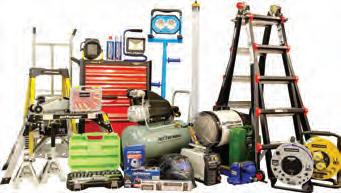
Comprehensive toolkit
From an extensive range of hand and power tools, air compressors and access equipment to lighting, power, heating, and cooling solutions, Jefferson Tools aims to offer a comprehensive selection that caters to every requirement. According to the company, each tool is manufactured to meet the highest standards, providing professionals with the confidence they need to tackle any task.
SPECIAL REPORT
PMM SEPTEMBER 2023 45

BEST PRACTICE
Fitting remanufactured turbos: w hat to look out for
When fitting turbos or other parts to the fuel system you want to make sure you only have to fit them once and won’t have customers coming back for a second go. Remanufacturer and OE parts distributor, Carwood argues it has the solution.
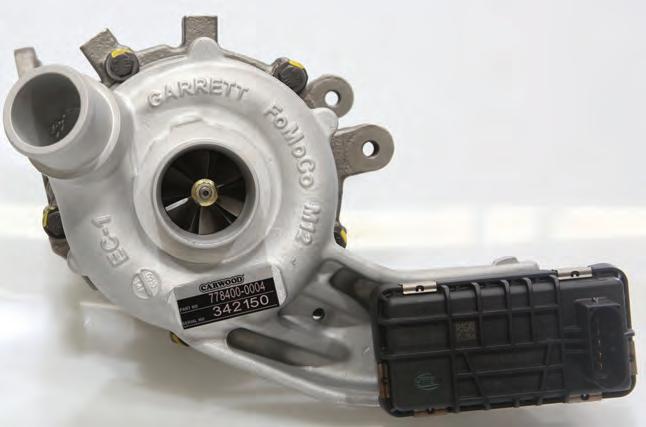
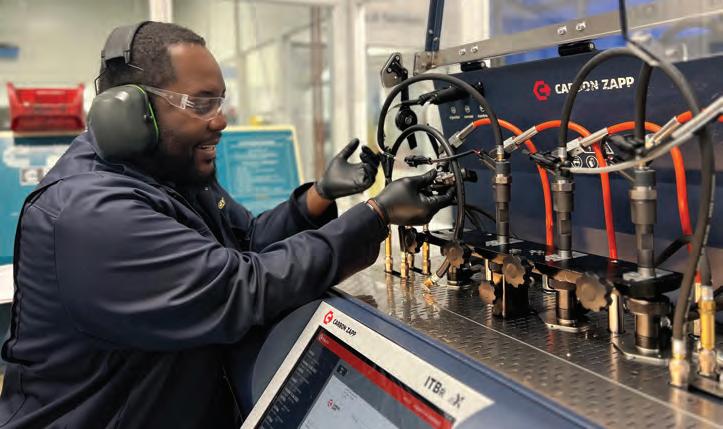
As an OE-approved remanufacturer, Carwood’s remanufactured fuel pumps, injectors and turbochargers go through the same inspection, cleaning, rebuild, calibration and test procedures as the OE, with all wearable parts replaced with like-for-like. The result is an ISO-certified product, that the company claims is as good as new, with a warranty to match. The aim is to produce parts you can fit with absolute confidence, knowing they will deliver OE levels of performance, reliability and longevity.
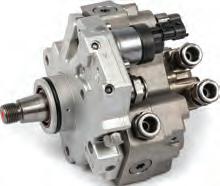
Carwood is also an authorised distributor for some of the industry’s leading OE brands, including Bosch fuel systems, BorgWarner, Mitsubishi and Garrett turbochargers and Carbon Zapp test and diagnostic equipment. With OE new and exchange units, OE spare parts for local repair, plus Carwood’s own OE-approved reman range, you can offer your customers a choice of high-quality, competitively-priced solutions, based on both the vehicle’s age and the owner’s needs.
A cost- and eco-friendly option
Because it reuses the core, Carwood’s remanufactured parts are typically priced at least 25 per cent less than the OE, ensuring a cost-effective alternative to new. What’s more, since they’re not made from scratch, they use around 70 per cent less material and 85 per
cent less energy, reduce waste to landfill and produce fewer emissions. Given the current economic and climate crises, being able to offer affordable, sustainable solutions will become an increasingly important part of any garage’s proposition. And another sure-fire way to set yourself apart from the competition and win new customers.
Carwood reman parts are supplied with the right accessories too. Its turbos, for example, come with a full fitting kit, including gaskets, mounting studs, copper washers and a priming syringe. Its injectors are already calibrated with an OE-level trim
code to improve the precision and timing of the injected fuel, for a right-first-time installation, straight out of the box.
Of course, knowing how to diagnose the issue in the first place, then fix it, is equally as important. Yet, the increasing sophistication of today’s vehicle parc can be a challenge, even for the most experienced of technicians. Carwood is here to help with that as well. Its technical hotline, manned by trained professionals, offers best-practice support on the diagnosis, removal and refit of all its parts.
PMM SEPTEMBER 2023 47
ENGINES & TRANSMISSION
TO KNOW MORE? FOR MORE INFORMATION WWW.RDR.LINK/ABA010
WANT
MOTOR OIL tasks
Proper oil lubrication is one of the most important things relating to engine protection and a protective lubricating film is necessary for minimum wear and to prevent engine damage. While wear protection is extremely important, using a high-quality oil can also help to further reduce internal friction while maximising performance and efficiency. An oil will need to protect well in all operating conditions and during extreme engine loads. It will also need to provide max flow during cold start while at the same time prevent lubrication film break down at high temperatures.

Necessary change
Over time oil loses its ability to provide the required protection, thus regular oil changes are necessary. Oil change intervals vary depending on factors such as engine design, engine wear, infrequent usage, ambient temperature, fuel quality and type, etc. With time and distance driven, motor oils are affected by such factors as fuel dilution, heat cycles, condensation, mechanical shear forces etc.
Added values
■ Lubrication: lubrication of mechanical engine components is an oils most important function. An oils strong lubrication film prevents metal-to-metal contact while reducing friction between internal components.
■ Cooling: a motor oil contributes to cooling by removing heat from areas such as cylinder walls and piston rings. This is

ENGINES & TRANSMISSION
48 SEPTEMBER 2023 PMM
Why is it important to use the right oil? Can money be saved on engine oil and why does it need to be changed? Liqui Moly is here to provide the answers for PMM readers.
necessary for overall protection of sensitive areas and to keep the engine from overheating.
■ Cleaning: eliminating combustion byproducts, metal debris, sludge and deposits from engine internals is another motor oil function. A motor oil needs to help clean engine internals and also transport residue to the oil filter for removal.
■ Sealing: motor oils support piston rings sealing for reduced compression loss, thereby increasing efficiency and preventing excess oil consumption. A thin oil film on rubber seals reduces wear, overheating and prevents premature leaks.
■ Corrosion protection: a protective oil film on all internal surfaces prevent corrosion and/or erosion of metals. This protective film prevents oxygen, moisture and acidic by-products from affecting metals.
■ Pressurise: ensuring accurate oil pressure
for hydraulically operated systems is also one of the tasks of modern motor oils.
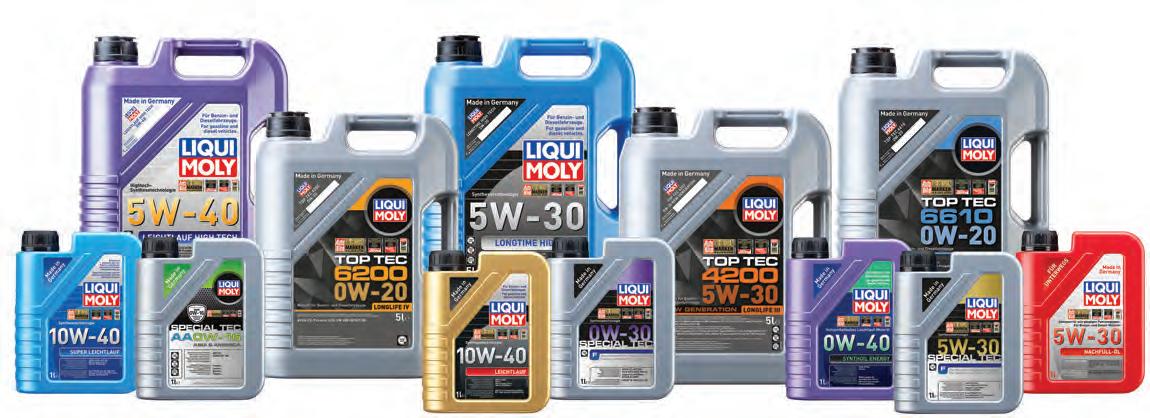
■ Environmental protection: The use of effective exhaust aftertreatment systems such as particle filters is only possible if modern motor oils with the correct oil specification are used.
Saving money?
Using a high-quality motor oil with the correct OE specifications can save on repairs and prevent premature break-down. Using a cheap oil may save a penny now, but is almost guaranteed to cost more later. Many cheaper oils in the market have their usage and place but they are not always meant to be used in modern cars.
When performing an oil change on a modern vehicle, it’s extremely important to use an oil that fulfils all OEM specifications for maximised protection. By doing so you will guarantee best fuel mileage and engine longevity while also being able to follow extended oil change schedules. A cheap oil may not have the necessary performance reserves to go for extended oil change periods and therefore needs to be changed quite often, which increases costs.
Liqui Moly motor oil is said to frequently exceed the manufacturer specifications and extends the engine’s service life. Many of the
company’s motor oils are officially approved by manufacturers.
Additives in the oil
All motor and gear oils use individual additive packages as part of the formulation. Additive packages are matched to the oil specification needed. Some more advanced additive packages can be used to make an oil that meets more than one specification. For an oil to get an official manufacturer approval a high-quality additive package has to be used.
Motor oil vs gear oil?
Fundamentally, gear oils carry out the same task as motor oils. But the main difference with gear oils is that they are designed specifically to protect, lubricate and cool gearing systems that are mainly found in transmissions, differentials and transfer boxes. These are usually exposed to much higher pressure and shearing forces than an engine oil. Another difference is gear oil is not diluted by fuel input. In principle, gear oils therefore require other ingredients, other additive packages, in order to be able to fulfil the tasks required of them.
PMM SEPTEMBER 2023 49
MORE INFORMATION
WANT TO KNOW MORE? FOR
WWW.RDR.LINK/ABA011
“When performing an oil change on a modern vehicle, it’s important to use an oil that fulfils all OEM specifications for maximised protection.”
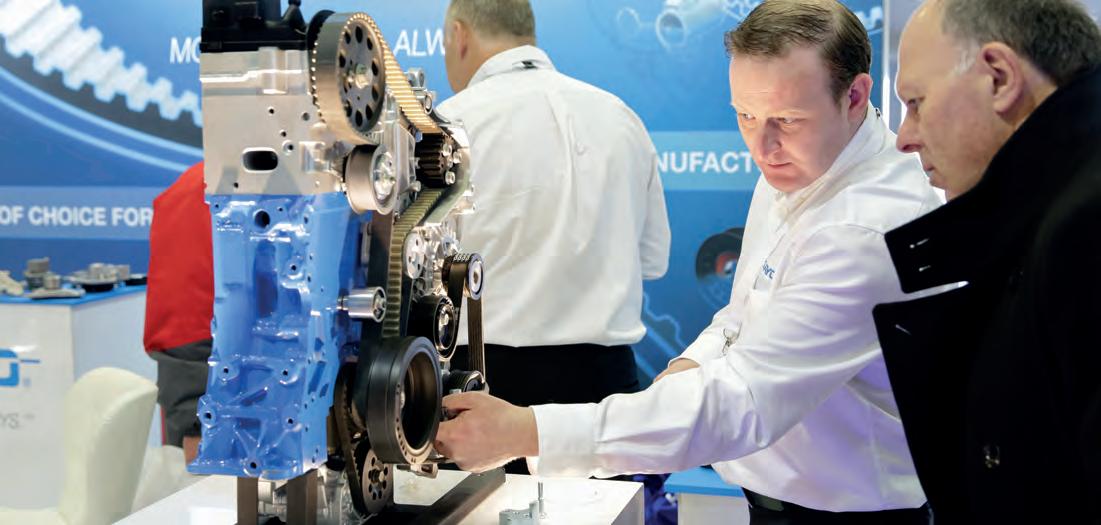
REGISTER FOR FREE AT WWW.MECHANEX.INFO THE HANDS-ON TRADESHOW FOR INDEPENDENT WORKSHOPS TOP AUTOMOTIVE BRANDS ● LATEST PRODUCTS AND INNOVATIONS ● SPECIAL SHOW DISCOUNTS ● FREE CPD TECHNICAL SEMINARS ● FUTUREDRIVE ZONE ● FREE ENTRY ● FREE PARKING ● FREE PROFESSIONAL MOTOR MECHANIC T-SHIRT ● FREE BACON ROLL SANDOWN PARK, SURREY 7 TH & 8 TH NOVEMBER 2023 The regional Tradeshow for aUTo rePair Professionals PROFESSIONAL MOTOR MECHANIC MECHANEX FEATURING LIVE
BEST PRACTICE
Two-stage Timing Belt Tensioning
Although Dayco is an original equipment supplier of both the primary and auxiliary drive systems to vehicle manufacturers around the world, its aftermarket division is also active in the independent service and repair sector, where it promotes best practice and provides technical advice and instruction to help workshops complete belt replacement efficiently and successfully.
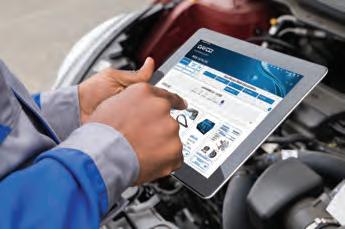

Part of Dayco’s remit is to react effectively when problems appear, quickly diagnose why they are occurring and then highlight the issues to workshops and technicians, so they are able to follow the correct fitting procedure to replacement them successfully, which will increase customer satisfaction and avoid unnecessary warranty claims.
Citroën Berlingo 1.6 HDI and Peugeot Expert 2.0 HDI
A perfect example is the two-stage tensioning process that must be carried out when replacing the timing belt on the 1.6 and 2.0litre HDI engines that are widely used by Fiat, Ford, PSA and Vauxhall, in many of their popular models in both passenger car and light commercial vehicle applications. Although the consequences of not following the procedure may not be immediate, because both units are of an interference design, the effect of a subsequent belt failure is likely to be catastrophic to the engine.
Looking first at the 1.6, in this instance in a Berlingo, the process is as follows: once the replacement belt has been installed and is taut between the sprockets, the new tensioner must be turned anti-clockwise until the pointer is in its first position and the bolt
tightened to 30Nm. After removing the locking/aligning tools, the crankshaft must be turned clockwise six complete rotations and the tensioner reset to its second, operational position and the bolt retightened to 30Nm. The crankshaft then requires two more clockwise rotations to the setting position, where the locking/aligning tools should be refitted and the position of the tensioner checked again to ensure it is aligned correctly. If it is not, the entire procedure needs to be repeated until it is correct.
Following a similar pattern, the 2.0, which in this example is fitted to an Expert III, requires the new tensioner on the replacement belt to be turned anti-clockwise and set to its initial position and tightened to 21Nm. The technician then has just five minutes to remove two of the locking tools, refit the lower belt cover, crankshaft position sensor, crankshaft
pulley, bolt and spacer and tighten to 50Nm, and then remove the final three locking/timing tools, rotate the crankshaft clockwise six complete turns to the setting position, refit the three tools, slacken the crankshaft pulley and turn the tensioner clockwise until the pointer aligns with its operational position and retighten to 21Nm. If however, the pointer passes this position, the tensioning procedure must be repeated until it aligns.
What these examples demonstrate is that even a scheduled service requirement on comparatively common engines requires technicians to follow a specific procedure, not apply a general rule.
It is for this reason that Dayco recommends those with the responsibility of undertaking the work to not only use OE quality replacement components, but also allow themselves five minutes of preparation before they start, to check the technical data that the workshop subscribes to and find the correct, engine specific procedure they need to follow to ensure they can complete the job. successfully, first time.
PMM SEPTEMBER 2023 51
ENGINES & TRANSMISSION
TO KNOW MORE? FOR MORE INFORMATION WWW.RDR.LINK/ABA012
WANT
PARTS REVIVAL
The brands DRI, Elstock, Lucas, and TMI are supplied by one of Europe’s largest remanufacturers, Borg Automotive. Here, we look at the benefits remanufacturing brings to the aftermarket.

Remanufacturing offers many benefits including the functionality, performance, and look of original automotive parts. In addition to this, the energy and CO2 emission used for remanufacturing is reduced compared to manufacturing of a new part, and the environmental impact of scrapping is also significantly reduced. This makes remanufacturing an important part of the circular economy.
Component remanufacturer Borg Automotive offers a wide range of each product within its portfolio, aiming to provide an offering for almost all cars.
Importantly, Borg only uses OEM parts for remanufacturing and all are remanufactured to match their original standard.
The Danish giant offers eight product groups, comprising starters, alternators, A/C compressors, turbochargers, EGR valves, brake calipers, steering racks and steering pumps. These are remanufactured at its own production sites in Poland, Spain and here in the UK. As a remanufacturer, Borg controls the entire process from parts and production to sales and service. The supplier claims that this level of control gives it an advantage when it comes to quality control and testing and indeed, all units are individually tested, whilst the production process has been certified according to ISO standards 9001:2015 and 14001:2015.
What actually happens?
To remanufacture automotive parts, used products, namely cores, are retrieved. The remanufacturer sells its remanufactured units with a deposit, which is returned to the customers if they send back the unit they are replacing.The core the remanufacturer receives in exchange for a remanufactured
unit is sent to the core warehouse, in Borg’s case this is in Poland. In fact it’s the largest core warehouse in Europe with more than one million units ready for remanufacturing.
The remanufacturing process is carefully executed and thus needs special attention throughout the entire process. This is due to the advanced and challenging remanufacturing process, which each part demands.
The remanufacturing process takes place in Borg’s own production sites and consists of six steps:
Disassembly: Defective units undergo a complete disassembly process and parts that cannot be reconditioned are disposed of.
Cleaning: The individual parts are given a thorough cleaning with several cleaning treatments, such as hot water and sand blasting, ultrasonic cleaning, etc.
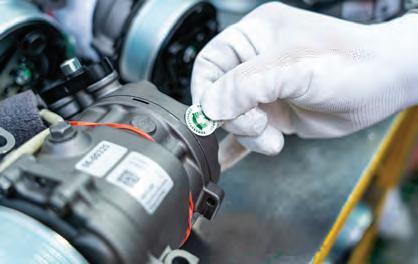
Inspection and sorting: Cleaned components are subject to an intensive inspection to determine if they are in a re-useable condition. This is done both visually and with test equipment measuring if the tolerances are within the acceptable limits.

52 SEPTEMBER 2023 PMM
ENGINES & TRANSMISSION
Reconditioning and replacement: At this stage re-useable parts are reconditioned, e.g. through galvanising and grinding of the parts. Parts that in the previous stages have been disposed are replaced with new parts.
Reassembly: The remanufactured units are reassembled.
Final testing: Each remanufactured unit undergoes a 100 per cent performance test to ensure that the unit matches OE standards.
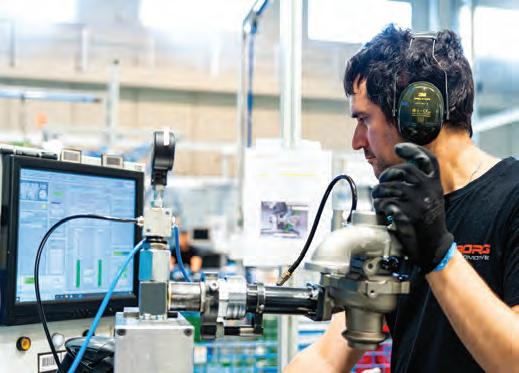
Every unit is tested both at high and low pressure. This is because different errors show and occur at different pressure levels.
Remanufacturing is a significant contributor to a circular economy, where as much material as possible is given new life, and as little as possible goes to waste. Remanufacturing extends the product’s lifespan by bringing a defective product to the same standard as it was when it was first manufactured. A study shows that remanufacturing on average saves 96 per cent of the raw materials used in manufacturing the original automotive part. Consequently, the environmental impact is also minimised.
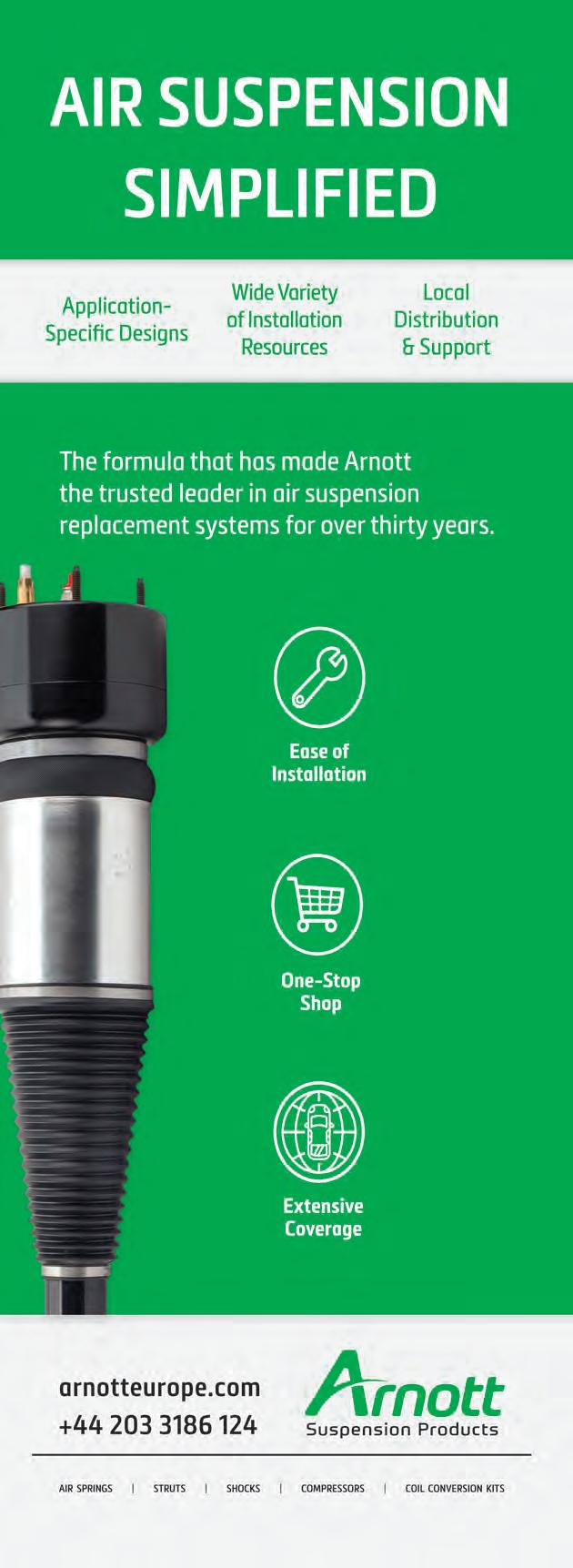
Tips and tricks
When replacing a unit, it is important to match the OE number on the old unit to that of the purchased unit. More often than not, there are several product numbers available, for the same vehicle model and engine. Failing to match the OE number, the customer is at risk of receiving a unit that fails to communicate with the car, and thus will not work properly.
To help the customers select the right model, Borg Automotive has developed a model search system on its web shop, where it is possible to search on the OE number and then get the right unit for that specific number.
WANT TO KNOW MORE? FOR MORE INFORMATION WWW.RDR.LINK/ABA013
All under CONTROL
With the introduction of basic engine management and transistorised ignition, improving the reliability with the reduction of moving parts and more precise measurements was required. The development of solid state electronics improved, which included the common use of crankshaft sensors, quickly followed by the use of camshaft sensors. These sensors measure the speed and position of the cam and crankshaft. Their signal is processed by the engine management ECU to improve the accuracy of the ignition and fuel timing.
The two main technologies used in these sensors are typically of a hall or inductive type. The operations of these sensors are fundamentally similar, although the construction can vary depending on the type of sensor and its intended use by the vehicle manufacturer.
Inductive sensor
During operation the inductive sensor, as a result of the inductive effect in the sensor’s coil, produces an oscillating voltage. When the ferromagnetic trigger wheel (with teeth) passes close enough to the soft iron core of the sensor, the magnetic field surrounding the coil is changed. In the coil, a voltage is
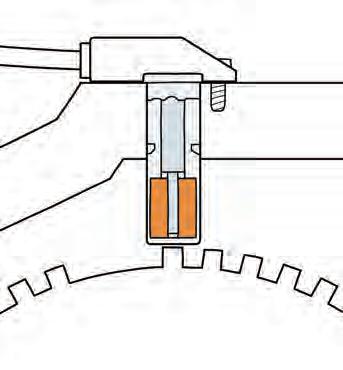
created which is proportional to the strength and rate of change of the magnetic field. One complete oscillation is produced for each tooth that passes beside the sensor (Fig.1).

The AC voltage signal produced by the sensor depends on the speed of the trigger wheel and the number of turns in the coil. An output voltage between one to two volts could be expected at engine cranking speed, however as engine speed increases this will be more. The output voltage signal produced is of a low energy, so could easily be degraded by stronger external signals, such as the ignition system (Fig.2).
Hall effect sensor
The hall sensor has an integrated circuit which is located between the rotor, and a permanent magnet that provides a magnetic field vertical to the hall element (Fig.3).
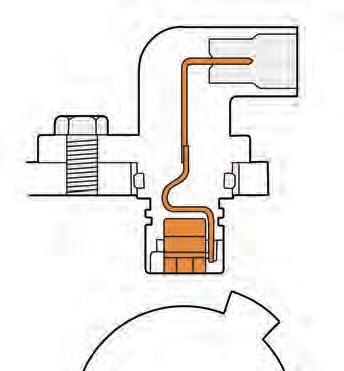
When the trigger wheel passes the sensor’s live element, the current alters the magnetic field vertical to the hall element. This gives rise to a voltage signal that is independent of the relative speed between the sensor and the trigger wheel. The integrated electronics in the hall sensor process the signal and emit it as an amplified square-wave signal (Fig.4).
With the demands of the internal combustion engine to meet performance and emissions levels, the use of these sensors has evolved. They are used to calculate injection time and duration, ignition camshaft adjustment and misfire detection. They are also used to identify the exact position of the
ENGINES & TRANSMISSION
The mechanical synchronisation of the crankshaft and camshaft is of the utmost importance for the operation of an internal combustion engine. febi explains how its sensors can help.
54 SEPTEMBER 2023 PMM
The AC voltage signal produced by the sensor depends on the speed of the trigger wheel and the number of turns in the coil.
crankshaft to the camshaft for the use of stop start systems. The current generation of rotation sensors can measure the rotational direction.
Range overview
febi supply a range of over 290 cam and crankshaft sensors, including inductive sensor and hall effect sensors. All parts are tested and verified in-house and manufactured to meet or exceed OE standards to provide highquality and optimum performance.
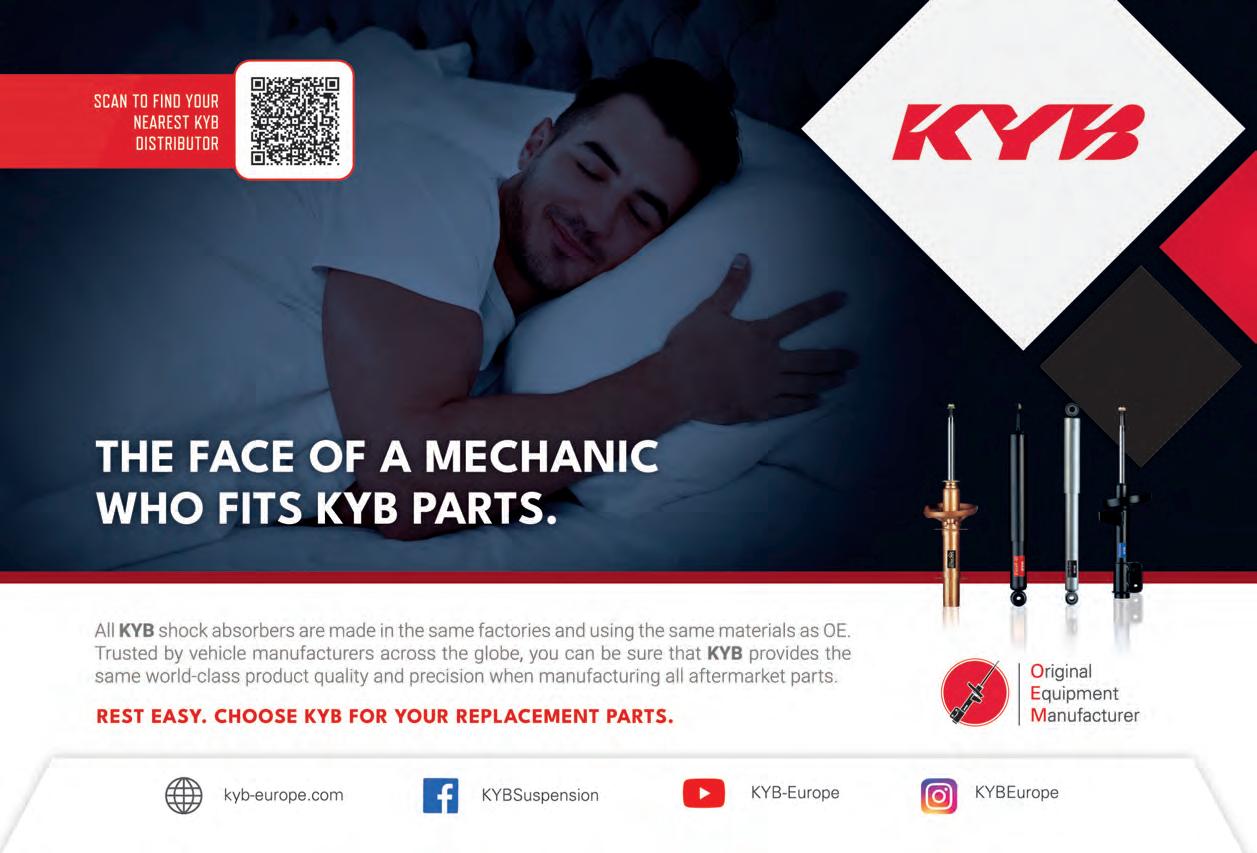
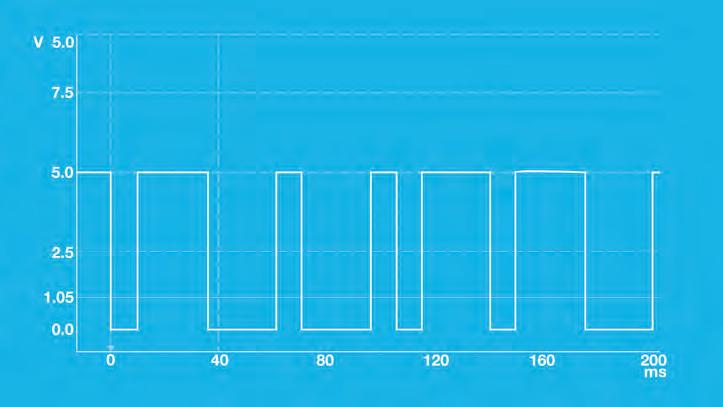
WANT
WWW.RDR.LINK/ABA014
Other benefits are said to include a robust construction to deal with environmental influences, accuracy for fit and repair, tested according to quality standards and meeting or exceeding vehicle manufacturers’ requirements. TO KNOW MORE?FOR MORE INFORMATION
SLUDGE FREE DRIVING
Oil and lubricants specialist, Castrol, advises on its solution on contaminants entering the engine causing build-up during urban, stop-start driving.
Frequent stopping and starting due to heavy traffic can impact the performance of a vehicle’s engine. Multiple short journeys can result in water and other contaminants entering the engine and reacting with the oil, causing sludge and deposits to build up within the components and affecting engine health. Sludge that builds up over time in an engine, and is not removed during a standard oil change, can have big consequences. It can clog vital oil passageways, reducing the power, efficiency, and overall engine life. Moreover, vehicles that are taking shorter journeys or stopping regularly due to driving in heavy traffic can experience an increased potential for sludge build-up in the engine.
Engine oil can degrade at very high temperatures and over time this can manifest as a build-up of sludge, which is not removed during a standard oil change. This process can be exacerbated by frequent short journeys or by late or missed oil changes. An oil flush helps to maintain engine power and efficiency by dissolving and flushing out sludge to maximise the cleanliness of the engine internals, ensuring the new engine oil can perform at optimal levels.
Hybrid wear
Engines in hybrid vehicles face additional pressures compared to vehicles powered solely by pure internal combustion engines, because these engines operate intermittently, typically swapping to electric power when pulling away and when operating at lower speeds. Some hybrid engines will stop, switch to electric and then re-start up to 500,000 times during their lifetime – that’s ten times more than a non-hybrid.
PRODUCT OFFERING
Castrol’s engine shampoo is said to be a remedy that mechanics can offer to their customers whose car engine has experienced a build-up of sludge. The pre-oil change treatment reduces engine sludge by up to 85 per cent, and provides a deep clean of the engine but is solvent-free. The engine cleaner market is currently dominated largely
by solvent-based products, which can degrade engine seals and dislodge sludge in larger, denser deposits. This can lead to blockages in vital oil ways and result in oil leaks. Castrol engine shampoo aims to reduce this risk by dissolving and flushing out sludge during the oil change process, helping to maintain engine power and efficiency.

In typical urban driving, the engine in a hybrid might only be in use for short periods before switching back to electric power, with engine temperatures up to 40˚C cooler than those without any form of electrification. This can lead to increased levels of contamination, as without the extra heat from the engine, water and other contaminants do not evaporate. It’s these hybrid-specific challenges that make it harder for standard oils to protect them.
WANT TO KNOW MORE? FOR
WWW.RDR.LINK/ABA015

MORE INFORMATION
ENGINES & TRANSMISSION
56 SEPTEMBER 2023 PMM
Owners of campers have apparently been waiting for BILSTEIN’s B6 camper shock absorbers. Lively customer demand and positive feedback from the trade press suggest this. As the owner of a camper van based on the Citroën Jumper, the BILSTEIN product developer Matthias Becker knows exactly why: “From day one, I found the standard handling difficult. This is quite unsatisfactory, especially when you know how to do it better.” The basic problem with almost all campers: They are based on simple van suspensions and “inherit” their suspension setup – anything but ideal for camping applications because of the different load profile. While a normal van is sometimes full, sometimes empty, campers are almost always loaded to 75 percent due to the fixed installations. Including luggage, bicycles, etc., the load can quickly reach almost 100 percent. This is exactly where the new B6 Camper highperformance shock absorbers come in. Their special set-up results in added safety in crosswind, improved grip in bends and makes the driving experience more intense. In addition, traction improves, handling becomes more precise, ride comfort increases and the stronger damping reduces driving noise due to optimised rolling behaviour.
“We know from customer enquiries and the steadily growing registration figures in the camper segment that there is a great demand for camper shock absorbers”, Becker adds. Since well over half of all campers in Europe are based on the Fiat Ducato, BILSTEIN initially concentrated on this platform (as of the 2006 models) and the technically closely related Citroën Jumper and Peugeot Boxer van models. Both panel van conversions and
HISTORY AND PERSPECTIVES OF THE BILSTEIN B6 SHOCK ABSORBERS ARRIVING SIMPLY RELAXED AT YOUR CAMPER HOLIDAY DESTINATION
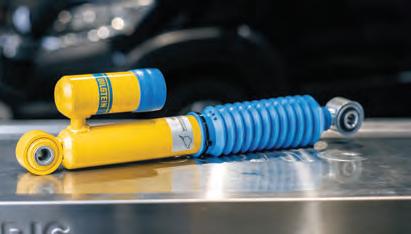
semi-integrated vans were taken into account during development, while other models such as the Mercedes Sprinter and Ford Transit are also the focus of BILSTEIN’s road tests.
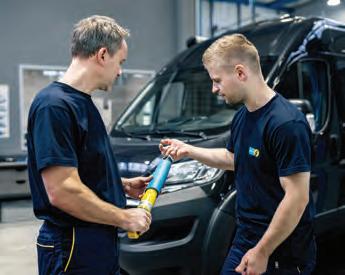

“We focused on a good price-performance ratio from the outset to ensure that the installation of our suspension solution is also worthwhile for smaller budgets or older vehicles. Therefore, we opted for a pure damper solution – our core competence”, said Matthias Becker. This means that the B6 Camper upgrade is not only cheaper than a complete suspension, but also installation costs remain low. Registration in the vehicle documents is not necessary for the B6 Camper and the even more powerful B6 Camper Advanced.
“We wanted to realise an option with different characteristic curves for particularly demanding customers. This is the only way to really master the balancing act between comfort and driving safety”, Becker knows. The purely mechanical DampMatic® was exactly the right technology on the BILSTEIN shelf. “The result convinced me immediately in the road test”, says Becker enthusiastically: “The ingenious system enables soft characteristics at low damper piston speeds and tight characteristics at high speeds.
Compromises in the setup are thus a thing of the past: I can cruise comfortably with the B6 Camper Advanced and in the next moment avoid a suddenly appearing obstacle while keeping directional stability. The damper also responds perfectly to crosswinds on the motorway.” BILSTEIN B6 Camper and B6 Advanced high-performance dampers also bring a significant improvement in handling for craftsmen’s vehicles, which are always heavily loaded because of their fixtures.
The technology behind them: The BILSTEIN B6 Camper Advanced high-performance shock absorber works with amplitude-selective damping. The shock absorber automatically selects one of two characteristic curves, depending on the vibrations transmitted over the road. A bypass opens or closes depending on the strength – the oil resistance in the damper changes and thus adjusts the damping.
“Our test drivers spend thousands of hours at the Nürburgring and in our own test centre at the Papenburg test track, checking how the suspension components behave in a wide variety of driving situations. Even the most diverse vehicle configurations are taken into account, such as the light and heavy suspension of the Ducato family”, explains Matthias Becker. Due to the different design of the springs and the available installation space, mixed constellations will also be tested, where the Advanced is only used on the front axle and the normal B6 Camper is used at the rear, says the BILSTEIN expert.
©BILSTEIN 2023 PMM MARCH 2022 1 ADVERTORIAL B WWW.FACEBOOK.COM/BILSTEIN.UK D WWW.INSTAGRAM.COM/BILSTEIN_OFFICIAL F WWW.YOUTUBE.COM/BILSTEINDE I CAMPER.BILSTEIN.COM
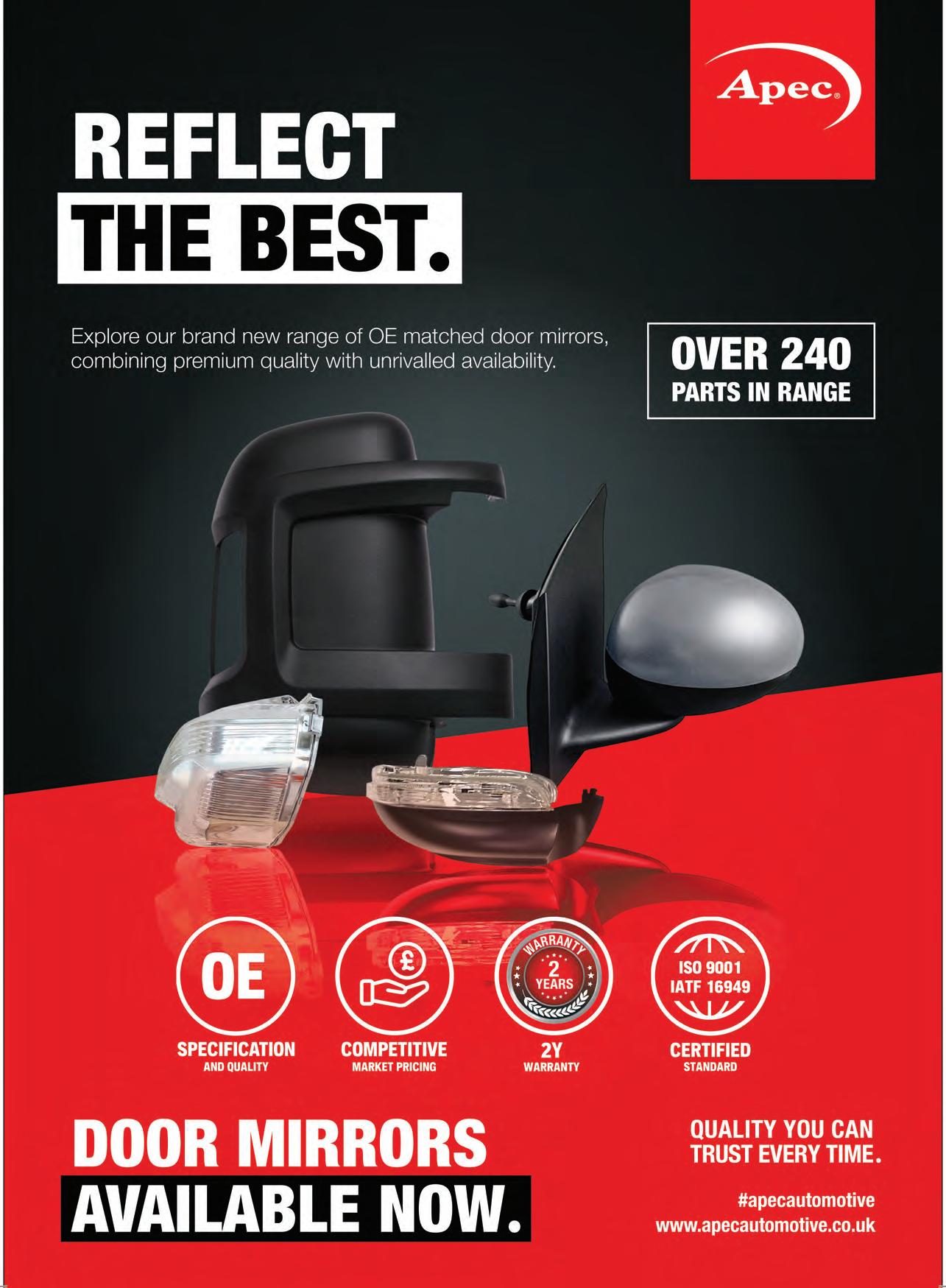
BEST PRACTICE
Emissions advice
Wynns offers its advice on aiding your customers pass the emissions aspect of the MOT test, and the perfect product for it.
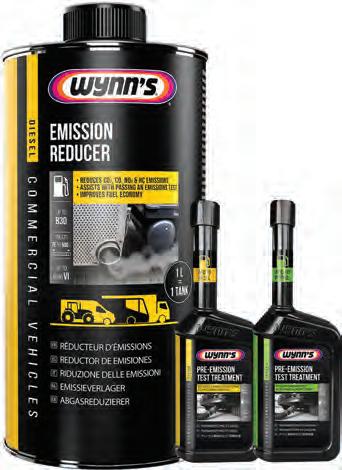
Protecting the environment is a big concern for the government as its aim is to reduce pollution emissions and improve air quality in cities. That is why it has included and reinforced emissions tests during MOT inspections. Emission test purpose is to ensure that the vehicle’s engines operate correctly and to keep pollution to a minimum. If vehicles are not serviced regularly, they may not pass the MOT test.
Diesel cars
During an emission test, the vehicle’s tailpipe gets measured to ensure the vehicle does not exceed current testing limits. The diesel emission test measures opacity – the density of particles exiting the exhaust. This is measured in a light chamber and, the greater
distortion of light indicates a greater particulate content. This is then calculated to a reading by the emission analyser.
A diesel test uses the plate value for the individual vehicle, and this can be found on the vehicle chassis plate. The plate value is the manufacturer’s data for the level at which the vehicle must be below to pass the emission test.
Petrol cars
An emission test is a measurement of a vehicle’s tailpipe to ensure the vehicle does not exceed current testing limits. A petrol Emission test measures the gasses exiting the exhaust and the required reading must be within specified limits for the vehicle. High CO (carbon monoxide) or high HC (hydrocarbons) and lambda not within the specified range are reasons for failure.
Be prepared
Perfect fuel combustion and good exhaust gas after-treatment system operation are required for a successful MOT test and can therefore be carried out during services. Clean the entire fuel system pre, during, and post-combustion to effectively reduce vehicle emissions with a product like Wynn's pre-emission test treatment: developed to give a fast reduction in exhaust emissions to help pass the emission test, a fast-acting product for rapidly reducing exhaust emissions and soot to help meet new emission limits and reduce exhaust smoke.
WANT TO KNOW MORE? FOR MORE INFORMATION
WWW.RDR.LINK/ABA016
WHAT AFFECTS COMBUSTION?
Many factors can cause a vehicle to fail an emission test and system cleanliness quality and operation are vital for a good result. These include:
■ The condition and quality of the fuel filter and air filter are vital for correct system operation.
■ Contamination in the intake system, on the intake valves, and the swirl flaps disrupts the flow of air into the combustion chamber affecting combustion efficiency and increasing the emissions.
■ EGR valve operation and cleanliness are vital for controlling combustion temperatures and maintaining emissions.
■ Maintaining turbo operation assists the engine in the combustion process increasing the efficiency of the engine.
■ Clean combustion and maintaining exhaust gas temperatures are critical for the correct operation of the Catalyst, DPF (Diesel Particulate Filter), and GPF (Gasoline Particulate Filter), and system cleanliness and efficient operation are vital to reduce the emissions from the exhaust.
■ Oil system cleanliness and the correct quality of the oil are vital for correct crankcase ventilation, engine efficiency, and emissions.
PMM SEPTEMBER 2023 59 MOT
An MOT makeover
Garage equipment experts Straightset gives its tips on how to reinvent your MOT bay and what you need to consider.
Are you considering installing a new MOT bay into an existing facility or looking to install a bay into a building that has never been a workshop? Do you own or operate a workshop with a Class IV or VII MOT bay? How do you replace equipment, upgrade or renew equipment? Are you considering an expansion in capacity?
The decision to invest in an MOT bay or upgrade an old MOT bay is just the start, actually seeing plans through to reality; with the right equipment,in the right place,within budget and time frames, is a bit more complicated. That’s where the expertise of a specialist garage equipment company can really help.
MOT bays provide many advantages to a garage, it provides repeat visits every year and opportunities for additional work. Particularly with the switch to hybrid and electric vehicles, this leaves garage owners finding themselves in a position where less work on engines is required and needing to replace this revenue with something else, such as MOT or wheel alignment services. The impact of battery electric vehicles
(BEV) on the MOT requirements has not changed, therefore there is a real opportunity for garages to invest in the MOT bay.

Making the right decisions
The starting point for any MOT Bay, is looking at the space which is available; can a MOT Bay fit into the space? If you’re upgrading could the space be re-designed to
maximise the opportunity better? A specialist garage equipment company, such as Straightset, aims to offer honest, knowledgeable advice. From on-site surveys, or supplied architect drawings, it has the expertise to often create solutions other suppliers miss.
Utilising its 35 years of experience and CAD drawing department the team can identify if an MOT bay is possible, saving
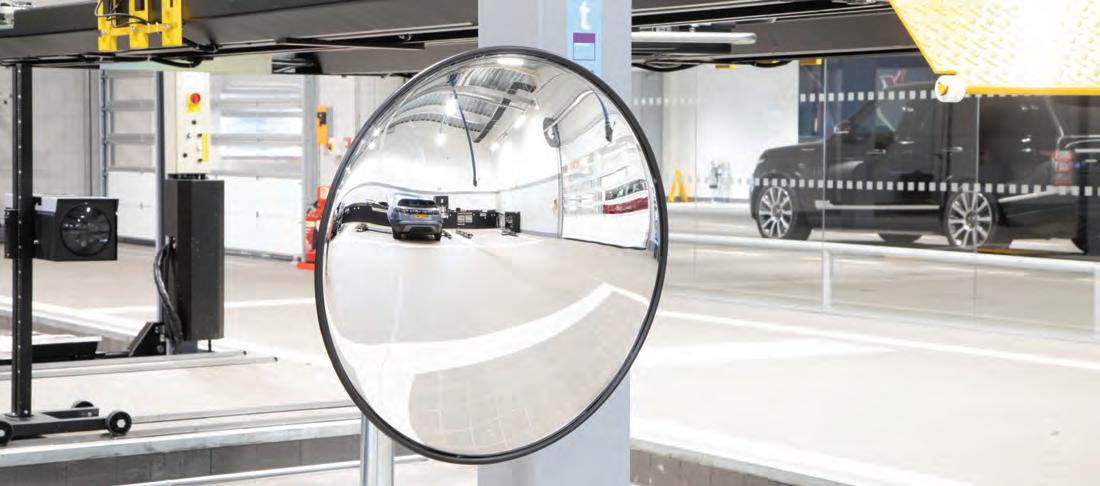
MOT
60 SEPTEMBER 2023 PMM
customers potential wasted time on applications through the DVSA which don’t meet requirements. With a respected in-house design team, the company fully conversant with all relevant legislation, connectivity requirements, as well as the many health and safety issues which need to be considered, to provide a CAD drawing to accompany applications which more likely than not comply first time.
Unlike other garage equipment suppliers, Straightset claims to be interested in providing the full solution. Taking time to understand the purpose of the building, the range of vehicles to be serviced in the bay, helps identify the right equipment to meet the requirements. With a broad spectrum of products and manufacturers, it is able to advise on the right equipment to fit the space available. This could include incorporating suitable, existing equipment. Different manufacturers of equipment have different sizes and configurations, having a broader range of options, opens the door to more possibilities.
Navigating the options
Straightset can help navigate the choices such as 4-post ATL lifts, scissor lifts, combined MOT and wheel alignment lifts, connected brake testers, jacking beams, emissions testers, headlight testers. The company also supply and fit all relevant signage for both existing and new facilities, as well as the various accessories that may be needed, from a variety of well trusted manufacturers, with aftercare services offered.
TOP TIP
MOT bays and wheel alignment bays can be integrated together to form a high capacity, space saving solution to allow room for an additional service bay.
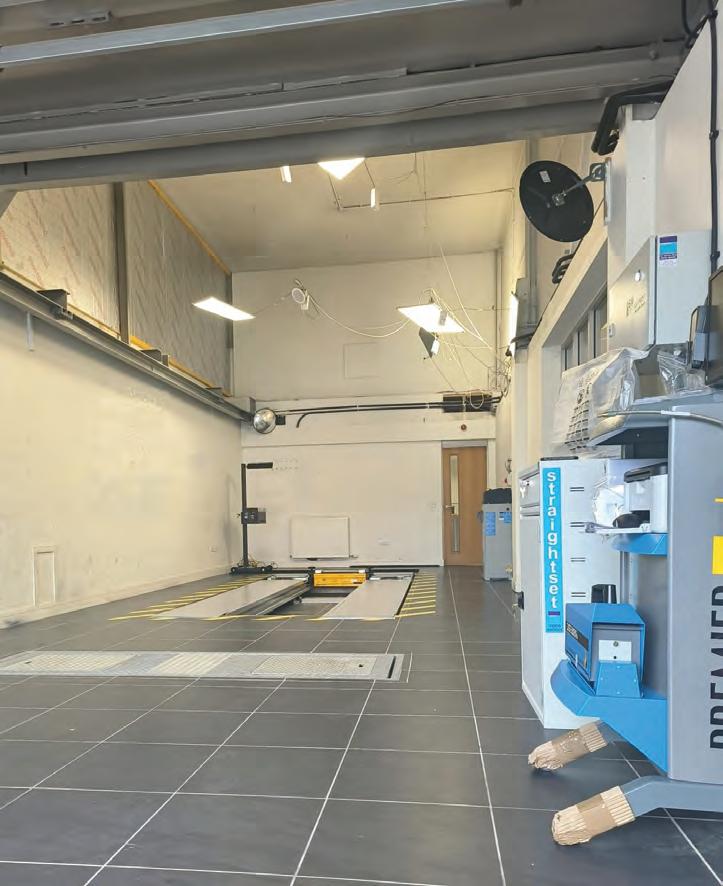
MOT Bay configurations are designed to specific guidelines. The trick is the
knowledge of how the guidelines can be interpreted in terms of lay out and equipment specification. An independent MOT equipment supplier has the skill and choice of equipment to hand to provide a variety of solutions – there is rarely just one solution.
It’s also worthwhile noting the advantages that come from using a single provider of all the services the garage refurbishment or installation will need. By using the same company, the owner will have more input in the relevant timeline and will take comfort from the fact that the resultant upheaval can be kept to a manageable minimum.
In addition to designers and project installation teams, Straightset have a team of more than 50 engineers covering the whole
country, and a dedicated service team offering the full range of preventative maintenance and calibration programmes. All certifications and paperwork are held on their systems, allowing owners to concentrate on providing the best MOT service to their customers, whilst Straightset keeps the equipment and paperwork in order.
Whatever your MOT Bay requirements, an independent specialist company like Straightset can bring your MOT bay project to reality.
WANT
PMM SEPTEMBER 2023 61
Different manufacturers of equipment have different sizes, having a broader range of options, opens the door to more possibilities.
TO KNOW
MORE INFORMATION
MORE? FOR
WWW.RDR.LINK/ABA017
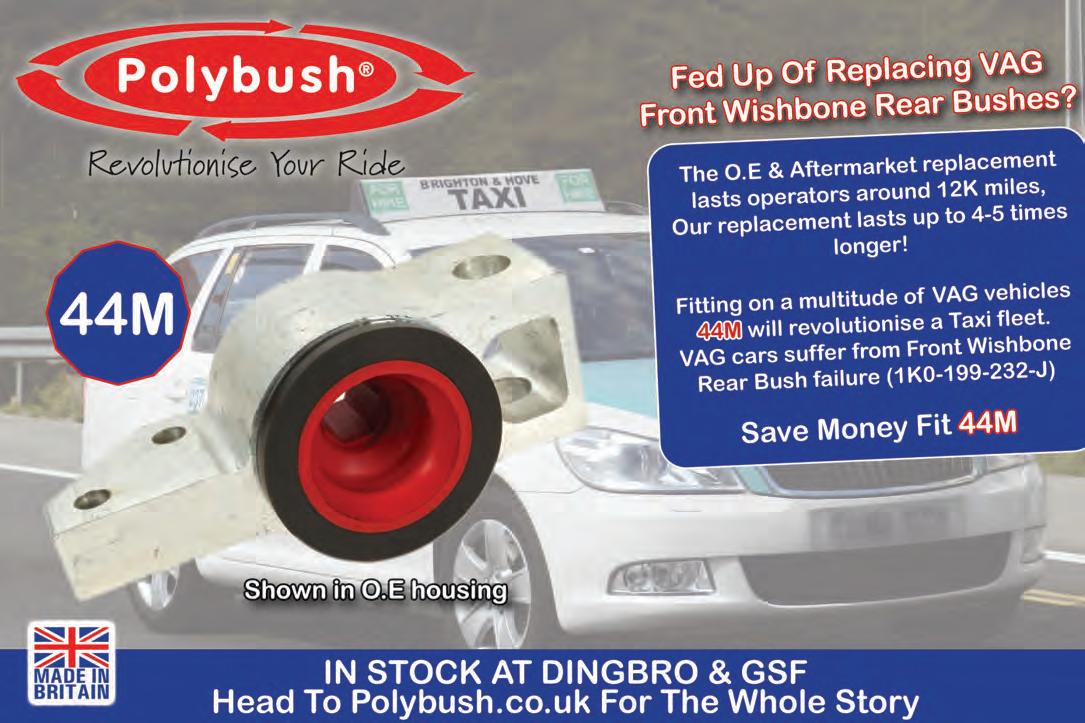
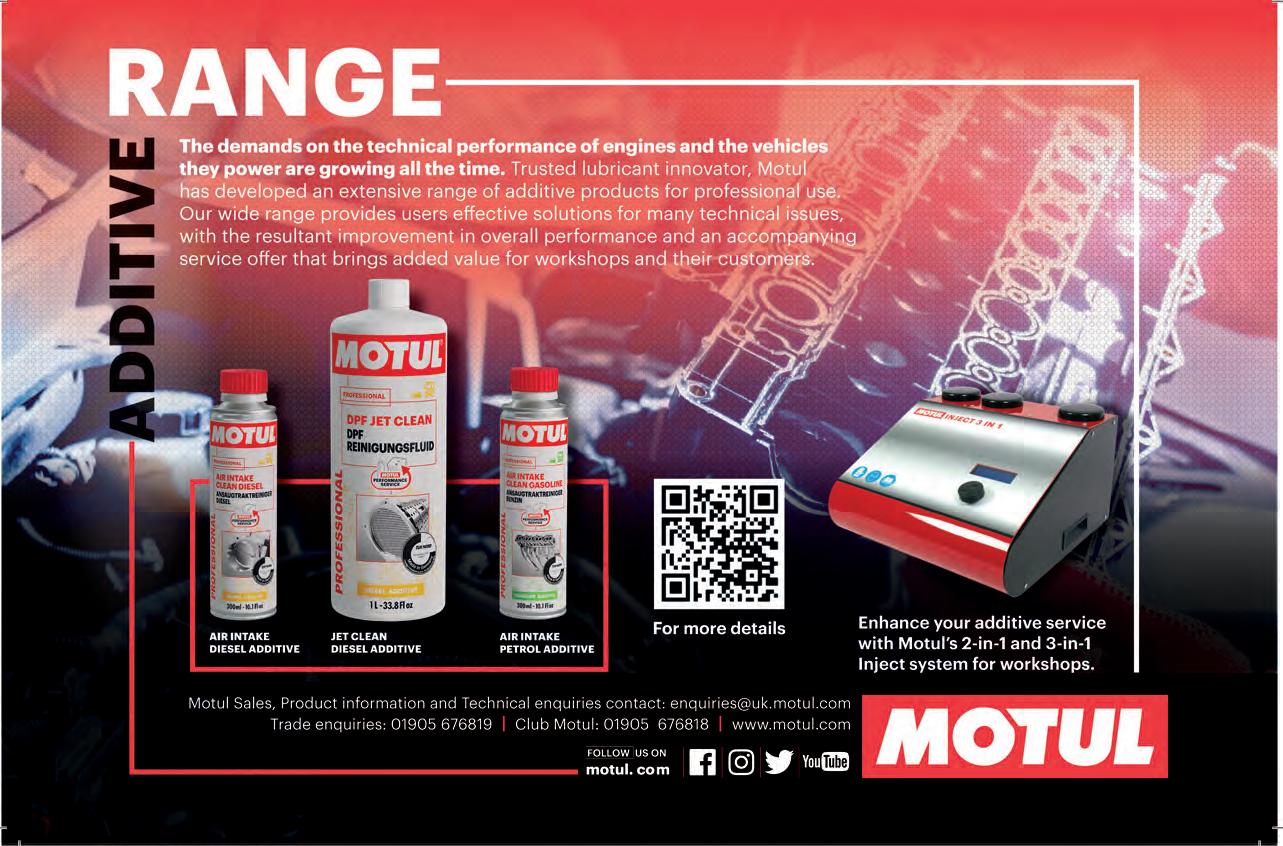
Reach new LIGHTS
The annual MOT test is the ideal time for drivers to think about the visible components they can get fixed or updated easily in preparation for their test, such as tyres, wiper blades and bulbs. This is also the perfect opportunity for technicians to upsell these components to their customers, as this is an easy component to explain and show to drivers, in comparison to an alternator, sensor or water pump for instance.
The company also suggests that technicians should advise their customers on keeping on top with regular maintenance with their vehicles to give them the best chance of passing an MOT. This can include bulbs, tyres, brakes and regular servicing, including changing the filters and oil.


As every technician knows, bulbs are a safety critical component, but many drivers may not fully appreciate the dangers they may face if their bulbs are not updated regularly and they allow them to burn out. This will leave them without an efficient way to light the road in front of them, and also doesn’t allow other drivers on the road to see them.
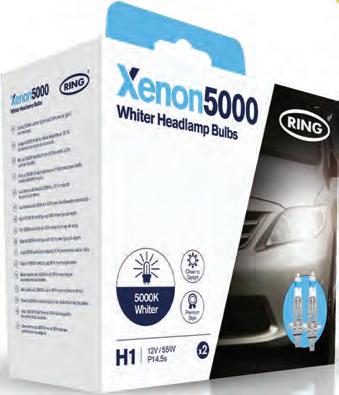
According to DVSA data analysed by the RAC, lamps, reflectors and indicators continue to be the most frequent reasons for vehicles fail their MOTs at just over a quarter (25.5 per cent). Especially with the safety element of bulbs, it’s clear from this statistic that drivers are not regularly checking, changing and updating the bulbs in their vehicles, giving technicians the chance to upsell.
It's therefore important for technicians to sell products to their customers that they can trust and therefore, should look for a brand that is renowned for its premium quality products in the industry.
Ring’s range
Ring has more than 40 years’ experience in automotive bulb development, it’s range of over 900 bulb types covers approximately 99 per cent of the vehicle car parc, meaning there is a bulb for almost every application on a car, motorbike or truck. Depending on the type of bulb a customer would prefer, its brighter range, which as the name suggests, puts more light on the road for the driver. The whiter bulbs give a high spec look, and matches the white light emitted by LED daytime running bulbs, which are road legal and require no wiring change. The enhanced performance range covers long life car bulbs, rapid response bulbs and enhanced quality bulbs.
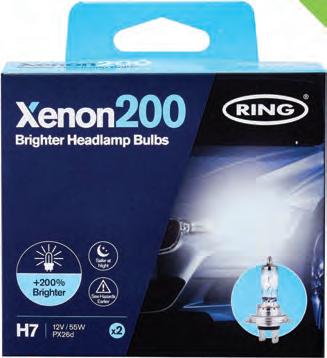
PMM SEPTEMBER 2023 63
MOT
Lighting and accessory supplier Ring is advising technicians to consider the upselling opportunities in regard to lighting that come along with the MOT season.
TO KNOW MORE? FOR MORE INFORMATION
WANT
WWW.RDR.LINK/ABA018
COMMON FAILURES
Shock absorbers
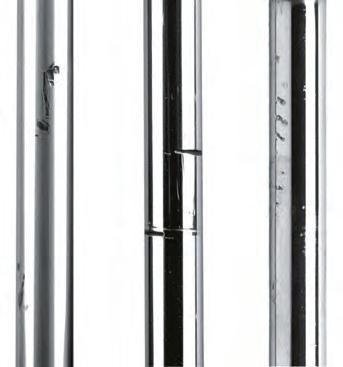
Suspension accounts for the highest failure items in the MOT, 21 per cent of all failure items in fact. Do yourself and your customers a favour by looking out for the signs of shock absorber failure and taking preventative action. Here, Monroe’s expert support team, the Garage Gurus take a look at some common issues with shock absorbers.
Loss of damping capability, breakage of the rod
A common customer complaint stems from the incorrect tightening torque of the strut’s top nut. This nut holds together the strut, the top mounting kit and the spring. The top nut should be installed correctly and tightened with a very specific torque, which in most cases ranges from 41 nm to 68 nm – far below the torque generated by a pneumatic torque wrench. When the strut's top nut is overtightened, the whole strut assembly can break free from its location. If this happens on the road, then it can cause a serious accident. That’s why it’s important that, during the fitting process, all bolts and nuts should be tightened using a torque wrench to the manufacturer’s recommended specifications. Do not use an uncontrolled tightening torque for any threaded connection, including the top nut of the strut assembly.
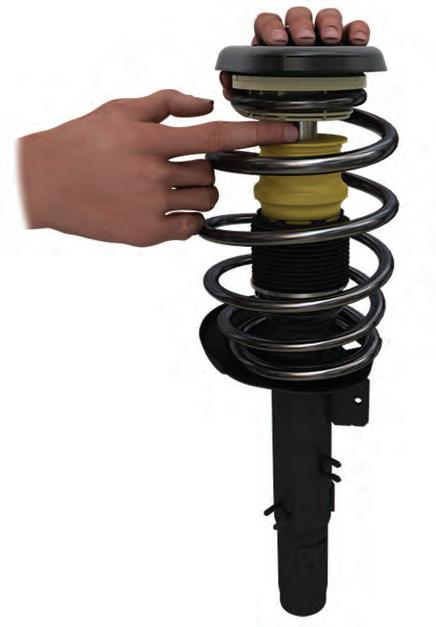
During troubleshooting, be sure to inspect the top nut’s surfaces, as impact guns often leave tell-tale signs. Overtightening often causes the stem to break at an acute angle, while the vibrations induced by impact guns can also loosen the nut on the other side of the piston rod.
Damaged rod threads
Another common problem is damage to the stem threads during installation. This happens during fitting if the top nut is placed incorrectly over the rod thread and then tightened with an air gun. This will damage the thread. In addition, if the mounting kit
washers are installed in the incorrect order, one may become loose, hitting the lower part of the rod stem. As well as creating noise, this will often lead to damage over part of the thread or the rod itself.
Oil and gas leakage
A common failure occurs when an installer uses pliers to hold the strut’s piston rod while tightening the upper nut. This causes characteristic damage to the chromium surface of the piston rod with marks appearing on both sides of the rod corresponding to where the pliers were used. Once the shock absorber is compressed, the damaged area of the piston rod passes through the strut’s seal, tearing it, and leading to oil and gas leakage. This problem can be easily avoided with the use of suitable tools to hold the rod in place while tightening the top nut to the proper torque.
Too stiff suspension
The position of the protection kit compression bumper is very important. A common mistake during installation is to pull the compression bumper down to the bottom of the strut to gain access to the rod when attempting to tighten the top nut. However, this causes the bumper to prevent proper movement of the suspension and creates an extremely hard ride. Correct installation involves simply moving the compression bumper (the yellow part in Fig.2) to the top of the rod, leaving around one finger’s gap to the bottom surface of the mounting kit.
Blocked shock absorber, paint damage, oil leakage
If a shock absorber appears to have lost paint on one side of the housing, this is most likely due to misalignment of the shock absorber during installation. It often happens when the shock absorber mountings are tightened while the car is raised on a 2-point lift with the wheels hanging freely with fully extended shocks. The rubber element of the
MOT 64 SEPTEMBER 2023 PMM
silent block acts like a spring and is designed to elastically deform during rotation of 45 degrees in each direction. If the mountings are tightened with the suspension fully extended, when the car is lowered to the ground the rubber silent blocks become fully turned by more than 45 degrees.
Once the driver climbs aboard, the extra load further exacerbates the problem, and the shock absorber becomes completely blocked. It may even experience excessive side force, forcing it into a parabolic shape, and this will typically cause the rear of the car to be raised in relation to the front. If spotted quickly, it can be corrected by undoing the shock mountings with the car on the ground and retightening to the recommended torque settings.
In the pictures below we can see the consequences of this problem: the dirt shield edge starts to touch the housing at one side and scratches the paint. The side force applied to the rod deforms the oil seal causing it to leak. Overheating often leaves traces further behind, such as a discoloration on one side of the rod.
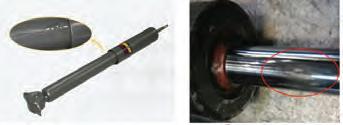
The ideal way to finally tighten shock absorber’s mounts is to do it under load with the car on the ground and with one person inside. If accessing the mountings in this position is difficult, it is possible to set the distance between two eyelets of the shock in accordance with the installation instructions. With the part on the table, use a marker to draw a line on the housing aligned with the edge of the dirt shield. Install the shock in the car and tighten the mounting by hand. Finally, use a hydraulic jack to lift the axle to align the edge of the dirt shield with the mark made previously and tighten the mountings to the recommended torque.
Shocks with aysmmetric bushing design
Some shocks have an asymmetric bushing design and must be mounted in a certain position in relation to their lower fixing.
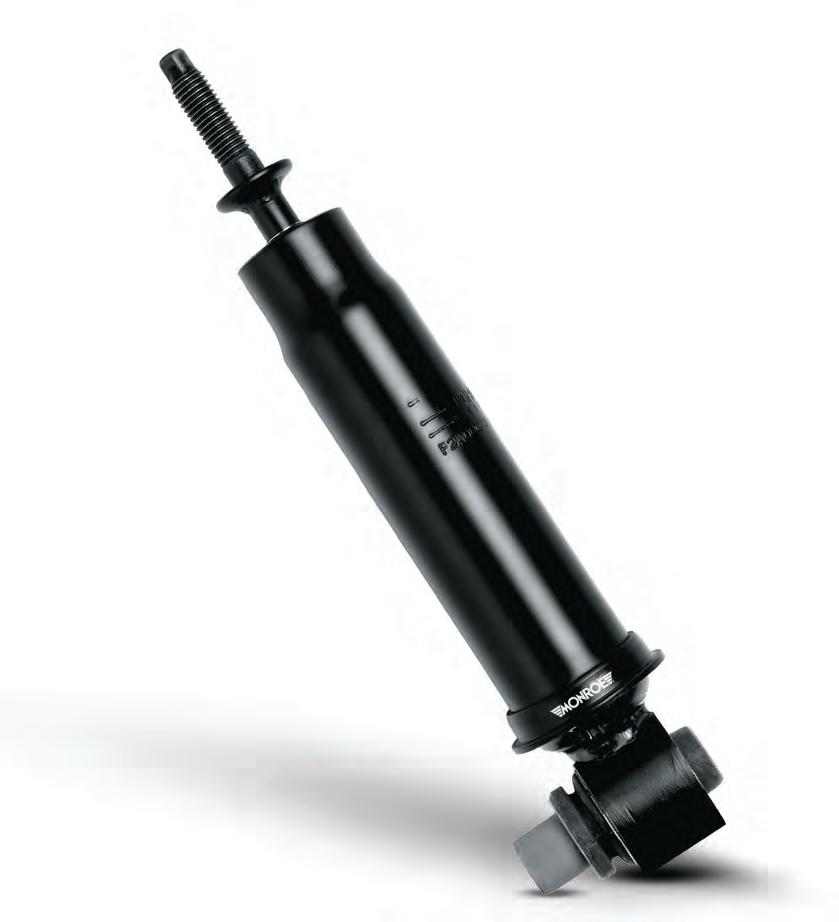
These units are designed to use this asymmetric bushing (see picture) to keep the shock absorber operating in its correct position. If the shock absorber is installed with an incorrect orientation of the asymmetric bushing, then the same problem as that described above can occur. In this case, the shock absorber experiences a side force that causes jamming and oil leakage. This problem may also occur if the wheels are not properly aligned after the shock absorbers have been replaced.
WWW.RDR.LINK/ABA019
PMM SEPTEMBER 2023 65
TO KNOW MORE? FOR MORE INFORMATION
WANT
The ideal way to finally tighten shock absorber’s mounts is to do it under load with the car on the ground and with one person inside.
WIPE RIGHT
Although it’s difficult to get too excited about wiper blades, when it comes to road safety and the annual MOT test, they are an important matter to motorists and a profit opportunity for workshops
Despite not being the most common reason for a test failure, generally up to 10 per cent are related to driver visibility and the condition of the wipers represents a significant part of those. So, by simply checking with the customer beforehand to ask whether they’d like the blades to be changed automatically if they should be the cause of, or will contribute to a test fail, workshops can not only boost customer confidence, but proactively increase revenue as well.
Product offerings
Denso is an OE wiper blade producer that supplies many vehicle manufacturers across the globe. Part of this commitment is to ensure independents also have access to the range of OE quality replacements they need, which is why the firm constantly brings additional references, such as the 33 new rear wiper blades it introduced at the beginning of May, into its ever-expanding product portfolio. These new references cater for more than 4,600 applications for vehicles as diverse as Audi, Mercedes, BMW Porsche and Jaguar,
to Dacia, SsangYong, Dodge and Chevrolet, and in the process provide the OE quality replacement solution for in excess of 100 million vehicles.
Aftermarket range
Although PowerEdge is not part of the conventional range, it has naturally been developed according to the company’s exacting quality standards to meet the requirements of the aftermarket’s mid-price, high quality segment, and benefits from the full Denso service offering, encompassing ordering, delivery, logistics and customer service. Designed to support distributors and workshops to help them fill the gaps in their
existing ranges and allow them to provide a competitive solution for those customers looking for a value alternative, the PowerEdge range also has the potential to unlock sales opportunities.
Addressing the growing European demand for cost effective wipers, as well as catering for its emerging economies, the wiper blades are manufactured to satisfy aftermarket standards and specifications, are competitively priced and available in both contemporary flat blade and conventional designs.
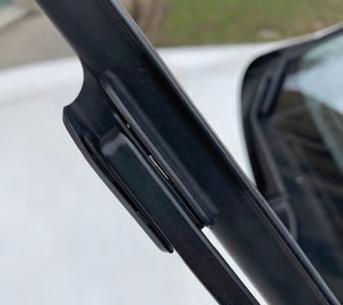

The PowerEdge flat blade range is fin shaped to reduce wind lift when traveling at speed and incorporates a patented point-bended rail spring to ensure consistent wiper pressure over 70 points across the windscreen. Consisting of 12-part numbers, covering blade lengths from 350-700mm and catering for up to 90 per cent of the European car parc. Its modern, slim design makes use of Japanese Fukoku rubber, considered to be one of the world’s best. In addition, it incorporates a unique single-adaptor connection, which conforms with the Mitsuba wiper blade system utilised by many Japanese vehicle manufacturers, to maximise application coverage, as well as simplify the fitting process.
Traditionally, catering for Mitsuba wiper arm applications presents a challenge for replacement wiper blade manufacturers due to the design of the U-hook wiper arm that they connect to, because if a traditional aftermarket blade, without a specially designed adapter, is installed, there is a risk that it will make contact with the wiper arm, which will lead to poor wiping performance and safety related issues. However, by installing a PowerEdge flat blade, the problem can be completely avoided on many popular vehicles such as the Honda Accord, CR-V and Civic and Nissan Note Murano and Leaf.

WANT TO KNOW MORE? FOR MORE INFORMATION WWW.RDR.LINK/ABA020 MOT
Denso discusses the opportunity wiper blades present to MOT test stations.
66 SEPTEMBER 2023 PMM

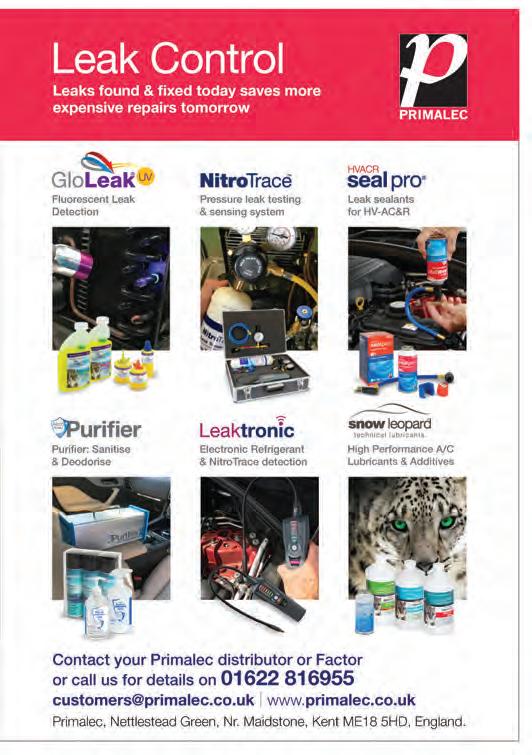
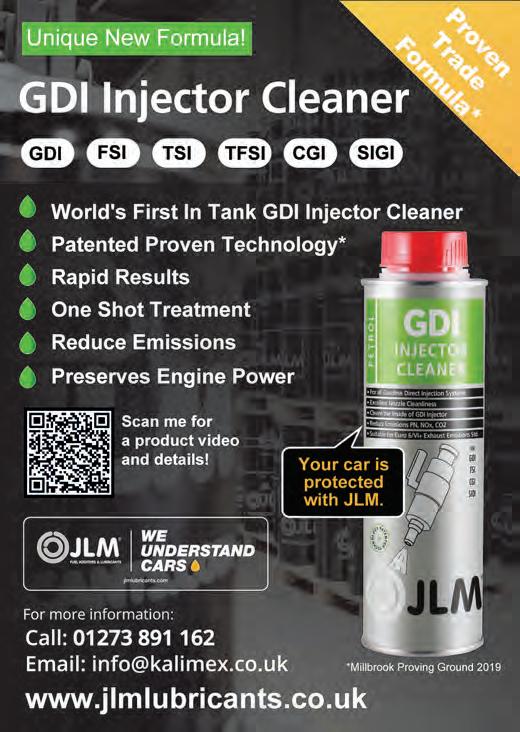
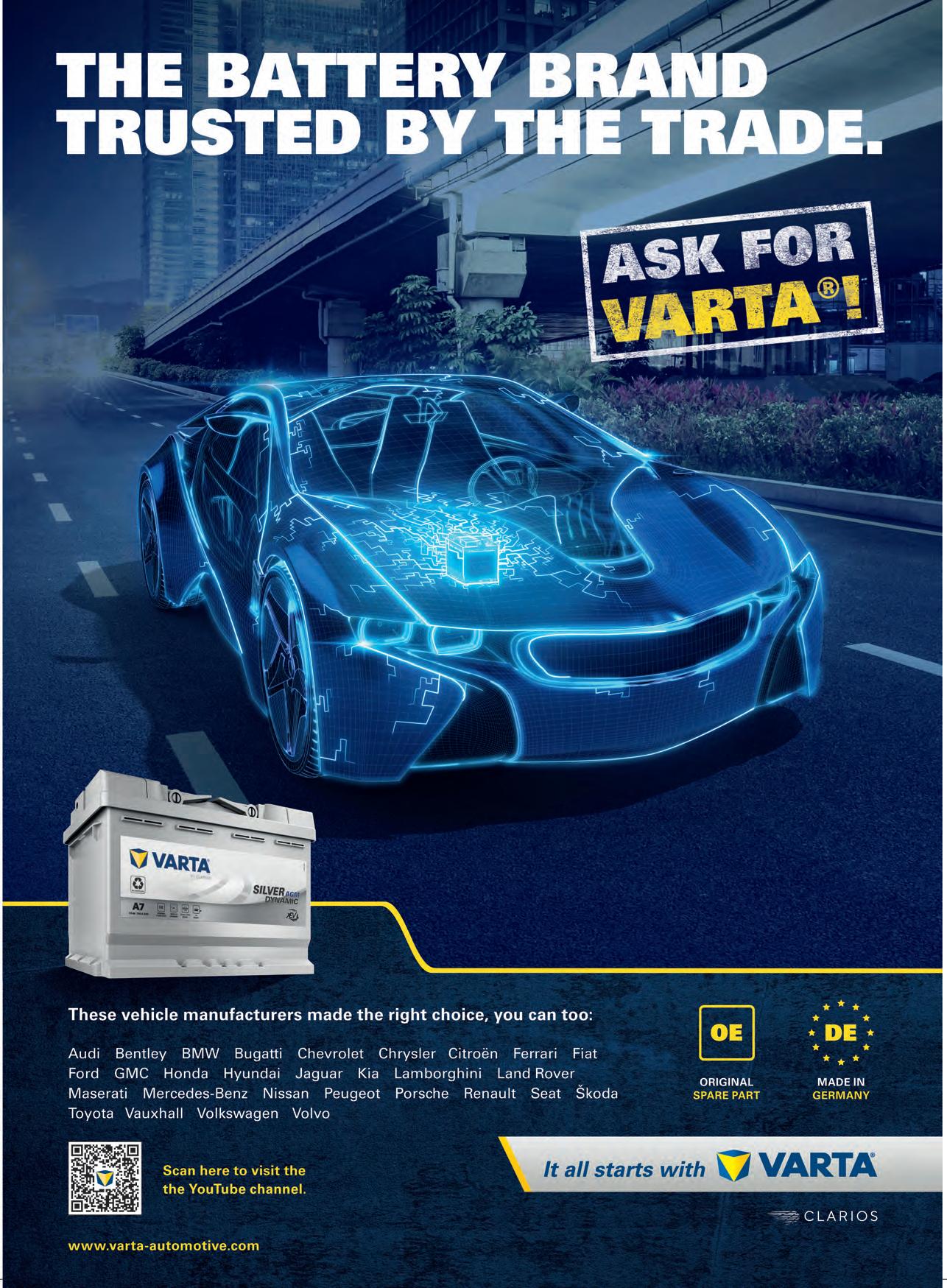
PLUG ‘N’ PLAY
Niterra, the company behind the NGK brand, discusses the benefits of precious metal spark plugs and offers some advice for diagnosing ignition faults.
NGK iridium spark plugs feature an iridium-alloy on the middle electrode. One of the world’s hardest metals, iridium starts melting at a temperature of 2,450°C and is therefore very resistant to spark erosion. Consequently, the service life is doubled on average in comparison to standard nickel spark plugs. While platinum spark plugs have a platinum plate on the middle electrode ensuring a more constant output of the spark plug over the entire service life, even under difficult conditions.
Precious metal spark plugs may be more expensive, but when specified by vehicle manufacturers and used during service and repair they will prevent possible problems due to:
■ Poor ignition performances
■ Poor tolerance to fouling
■ Higher ignition coil loads
■ Increasing unwanted emissions
Diagnosis tips
Most issues in relation to spark plugs are invariably down to a plug being affected by either an engine running or set up problem or something that has gone awry upon installation. The common ‘misfire’ complaint in connection with spark plugs is first tackled by plug removal and examination. Plug fouling can cause a misfire. This can, for example, be in the form of excessive carbon

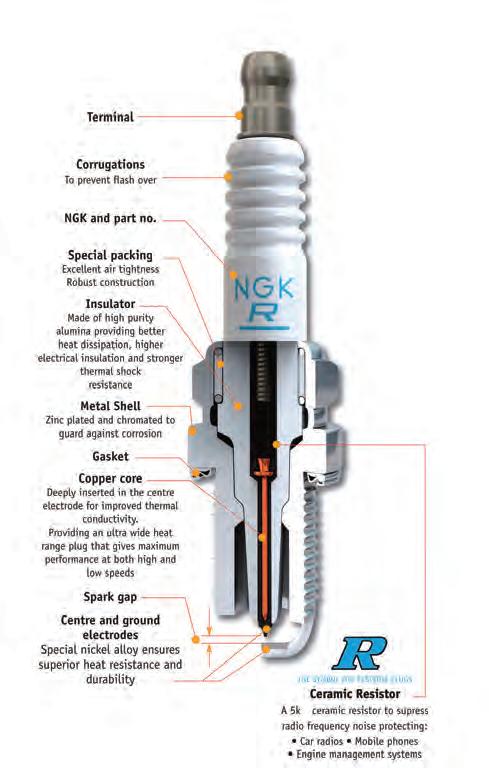
build-up caused by an engine running in a rich condition or coated with oil due to an engine condition issue. Fouling will not be the fault of the plug itself provided the correct plug for the engine is installed. Closely inspect the plug insulator for cracks, which will cause a misfire due to the voltage no longer being contained. A crack to the top portion of the insulator is caused by either over tightening or the plug being tightened with the wrench canted out of line. This puts pressure on the top of the plug. A crack in the insulator on the firing end is usually caused by ‘thermal shock’, the result of neat or poorly atomised fuel hitting the hot insulator surface causing it to cool rapidly.
Black lines
Black vertical electrical lines on the white insulator surface (sometimes mistaken for cracks) are a sign of ‘flashover’. They can occur between the top terminal and the metal shell body. These are the result of a worn or deteriorated plug rubber sealing boot on the lead or ignition coil. Replacement of the plug alone may not cure unless the connection on to the plug is secure and the seal over the insulator is tight.
A broken plug metal shell is the result of over tightening. This occurs at the top of the thread or just above. There is no requirement to use any anti-seize grease on NGK spark plugs. Use either the vehicle manufacturers or NGK’s recommended torque. If the threads are not dry or an anti-seize grease has been applied, then do not torque, but use the tightening angle advice displayed on NGK spark plug packaging. Torque and tightening angle advice varies depending on the plug thread size, sealing method (taper or gasket seal) and varies between gasket material and construction types.
WANT TO KNOW MORE? FOR MORE INFORMATION
WWW.RDR.LINK/ABA021

PMM SEPTEMBER 2023 69
BATTERIES & IGNITION
“Closely inspect the plug insulator for cracks, which will cause a misfire due to the voltage no longer being contained.”
The future of the 12V BATTERY
Ecobat outlines what has gone into the development of the modern 12 V battery and looks at what future it has in passenger vehicles.
Since the AGM (absorbent glass mat) battery was adopted as the original equipment fitment for micro-hybrid (start/stop enabled) applications, pan-European battery distributor Ecobat Battery has been at the forefront in expressing the need for independent workshops to be fully up to speed when it comes to both the batteries and the associated technology present in these vehicles.
However, although the vehicle manufacturers had made AGM, and subsequently, the enhanced flooded battery their primary power storage solution, primarily because motorists chose to override the start/stop function in their vehicles, these batteries were not failing at the age that was originally anticipated. This anomaly was simply because they were only making a fraction of the number of starts they were designed to, so were lasting far longer than anticipated, but due to the combined effects of changing vehicle design making overriding the start/stop function more difficult, reduced vehicle usage brought about by lockdowns during the pandemic and the passing of time, the landscape has changed significantly.
Research undertaken by Ecobat Battery, which is a major distributor for, among other brands, Exide and Varta, both key OE suppliers of AGM and EFB batteries, reveals

that although in 2019 just 6 per cent and 1 per cent of battery replacements were AGM and EFB respectively, by 2022 the figures were 15 per cent and 5 per cent. Moreover, this trend will continue and is forecast to achieve double-digit growth every year to reach 28 per cent and 12 per cent in 2027, just four years from now.
This development is reflected in the product portfolio of the aforementioned battery manufacturers, with both Exide and Varta significantly increasing the AGM and EFB range they offer, not just to address the need for replacement batteries for start/stop vehicle applications, but new energy vehicles (electric, hybrid electric, plug-in hybrid electric and fuel cell electric vehicles) as well.
The reason for this range expansion is that, irrespective of the primary drive system of the vehicle – combustion engine, engine combined with a 48-volt or 350-volt battery, or a 400-volt battery in a fully electric vehicle – a ‘traditional’ 12-volt AGM/EFB battery is also fitted. Once again, this is a long-term trend as VMs recognise the need to ensure their vehicles have a suitable and reliable reserve power supply, should the battery used in the drivetrain be exhausted
So, the reality for the independent aftermarket is that although the primary function of these 12 V batteries will evolve, from starting the engine to servicing increased electrical load and critical safety functions, the demand for OE-quality replacement batteries will remain for the foreseeable future.
Battery best practice

Although it’s not possible to cover every best practice principle in a single article, here are three simple first steps that will certainly pay dividends to any workshop.
Initiate a battery testing regime.
Ecobat has found that 27 per cent of the vehicles that enter the independent workshop need either their batteries recharged or reconditioned, and a further 11 per cent need a replacement, which means that almost 40
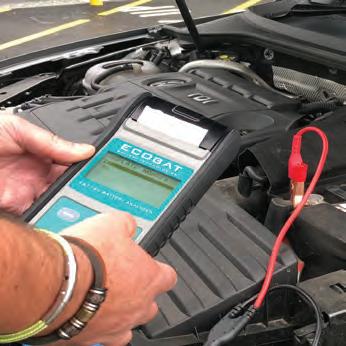
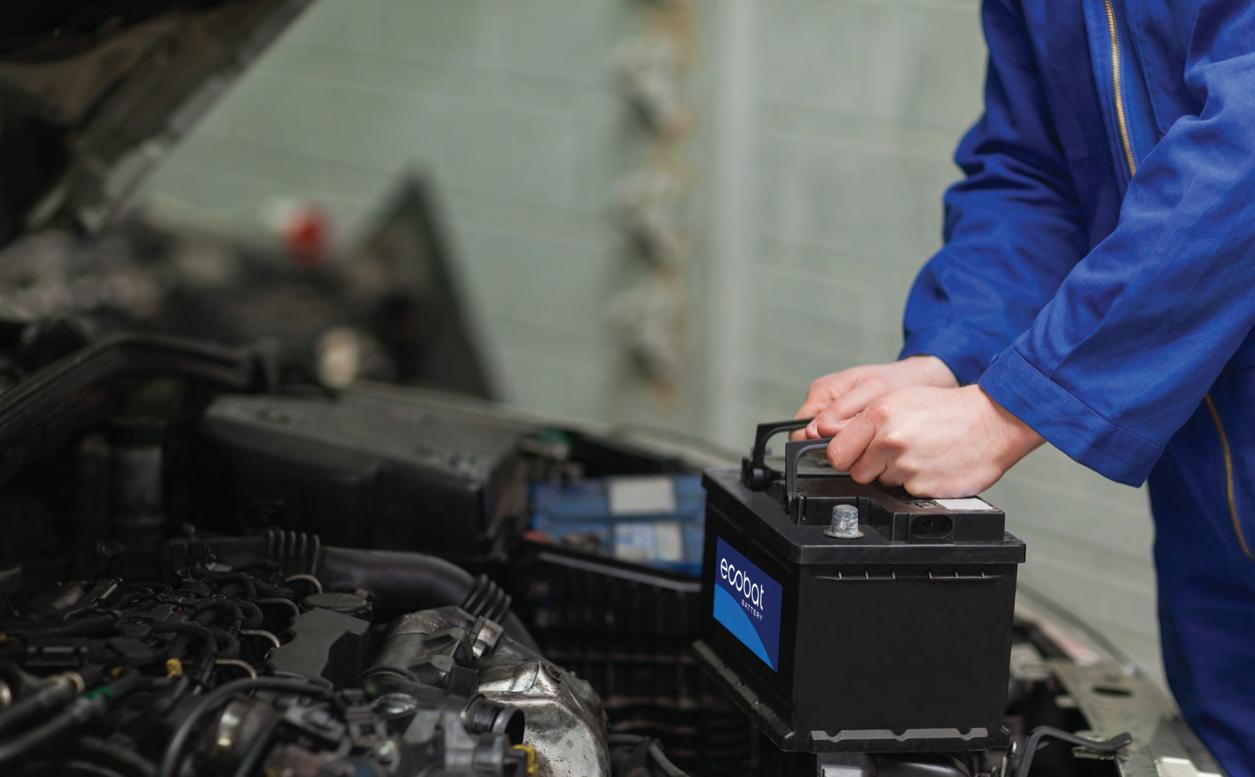
BATTERIES & IGNITION
70 SEPTEMBER 2023 PMM
per cent of the vehicles they service daily have a battery issue.
However, whether the vehicle is booked in for an MOT, annual service, or some sort of repair, workshops rarely test the voltage of the battery, let alone its condition. The knockon effect is that 40 per cent of roadside breakdowns are due to battery failure and the beneficiaries of these failures are not independent workshops but breakdown services such as the AA and RAC.
Reset the vehicle’s ECU
Unless the vehicle has been modified and requires an upgraded battery, technicians should always ensure they install a replacement of the same standard as the vehicle’s OE fitment, so if it’s an AGM or EFB battery at first fit, the replacement should be the same. However, if a higher capacity battery is required, it is possible to replace an EFB with an AGM version, but remember, an AGM cannot be replaced by an EFB and, irrespective of the type, both need to be reprogrammed into the vehicle’s energy management system.
This is important because an aged battery at the end of its life, behaves differently when it comes to its available capacity, energy output and charge acceptance, than a new, unused one. The BMS (battery management system), together with the EBS (electronic battery sensor) monitor the battery over its lifetime, detecting the number of engine starts and the energy flow (Ah throughput), monitoring the state of charge, controlling the charging and adapting the energy management of the battery, dependent on its state of health.
If this reprogramming is not carried out correctly it can cause issues with, or even failure of, the start/stop function, which can result in increased fuel consumption and also affect the vehicle’s comfort functions, for example.
Ensure the correct voltage is maintained during replacement and support the battery when running diagnostics.
These procedures are linked, as both prevent causing unnecessary problems and to be carried out effectively, both require a stable source of power to be constantly supplied to the vehicle’s electrical system. Although the risk of losing stored memory data may seem obvious when changing the battery, it’s not quite so apparent when it comes to undertaking diagnostic processes, for example.
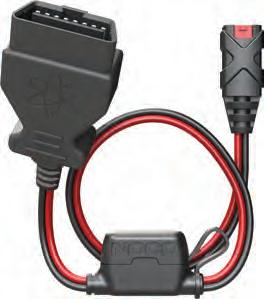
However, maintaining the correct voltage during extensive periods of troubleshooting is very important, as it helps technicians to correctly identify the underlying fault. This is because during diagnostic procedures, which nowadays are commonplace, the engine is switched off, but power is still drawn from the battery.
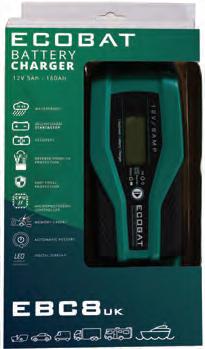
When carrying out prolonged diagnosis, which due to the complex electronic systems present in the modern vehicle, is not unusual, the vehicle’s control units and other electrical equipment can discharge the battery to such an extent that the on-board system voltage falls below the permissible voltage limit of the control units and a corresponding entry is made in the fault memory, and data can be lost. Using equipment dedicated to battery support is now a necessity in any workshop. A battery performs best when it’s in peak condition, so by reducing the possibility of battery failure in the workshop, or even worse after the customer gets home, workshops can save more than time and money, they can preserve their reputation.
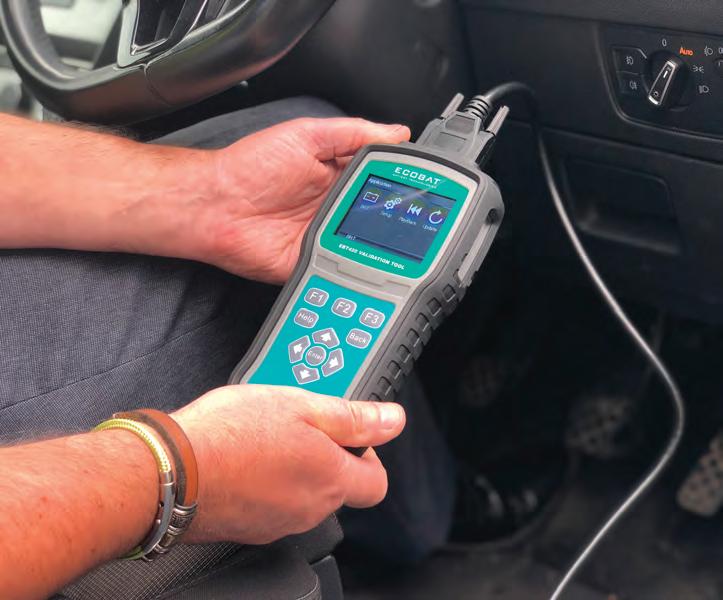
PMM SEPTEMBER 2023 71
An aged battery at the end of its life, behaves differently when it comes to its available capacity, energy output and charge acceptance, than a new, unused one.
WANT TO KNOW MORE? FOR MORE INFORMATION WWW.RDR.LINK/ABA022

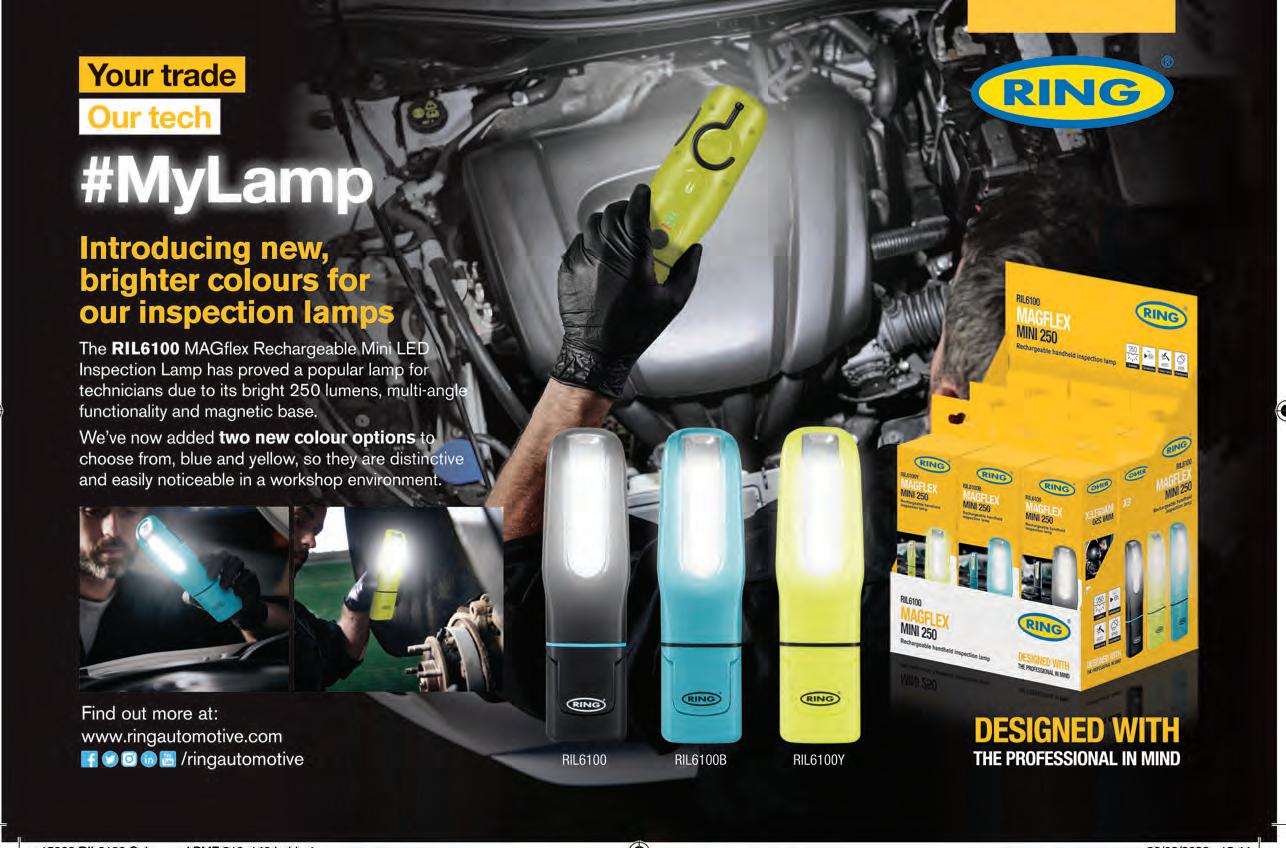
CHARGING the brain cells
With the role of the 12 V battery changing with advanced technology vehicles and EVs, Varta is introducing a new suite of modules to its e-learning solution.
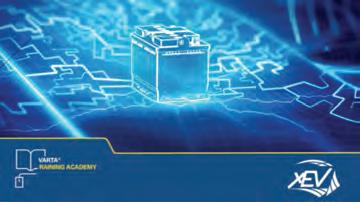
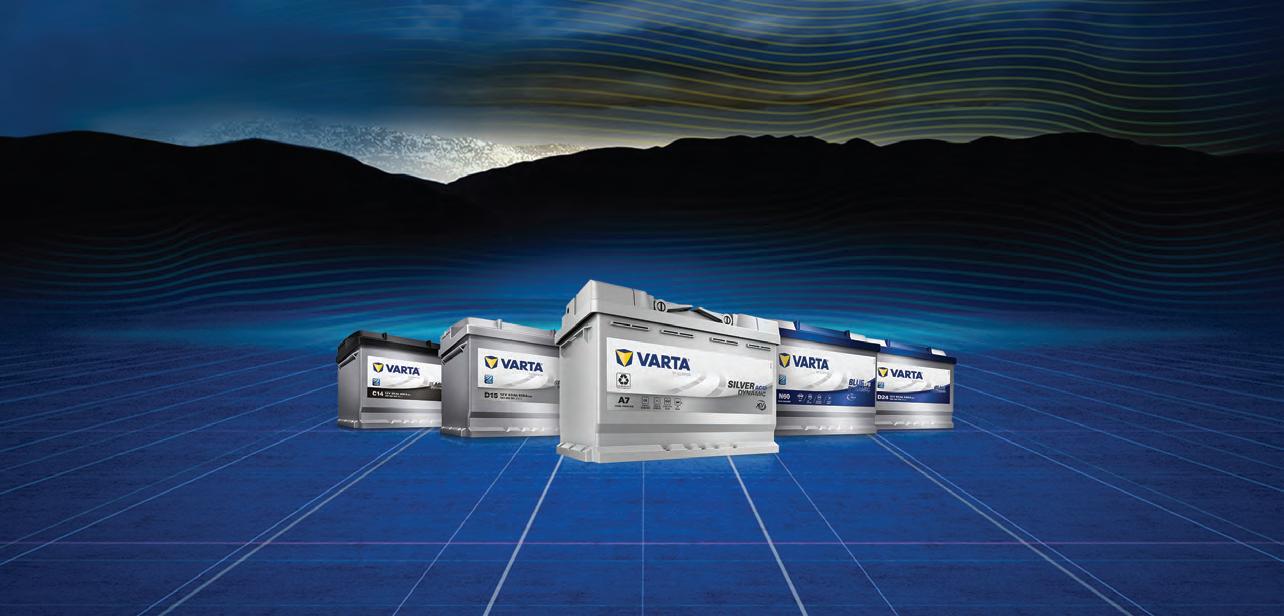
The Varta team has announced that a new suite of battery e-learning is now live on the Varta Partner Portal which will complement the company’s more traditional face-to-facetraining. The various e-learning courses will complement the battery brand’s digital portfolio, which includes video, technical articles and the Battery Finder system.
The company’s goal is to provide the “best user experience” during its training – both online and offline. “Our e-learning offerings are aimed at everyone who deals with
batteries in their daily business”, says Ulrich Germann, training and technical support manager at the Varta Training Academy.
“We want technicians to be able to understand the new technologies and today’s complex vehicles. We want to share our knowledge in a user-centric approach so that our customers can be successful in their daily business.”

Technology marches on
The first technological advancements around the battery came with the introduction of start-stop systems. Since then, fuel-saving functions have gone far beyond simply switching off the engine at traffic lights; many standard features are not even noticeable to the driver. For workshops to be able to repair these complex systems in the future, Varta has committed to continually updating the training modules. In addition to general topics such as “Warehousing and Storage” or the “Varta brand and USPs”, there is also more in-depth technical material such as “Vibration Resistance” or “Deep Cycling Capabilities”.
The next technological leap is already underway, as the role of the traditional 12 V battery is more important than ever for hybrid and even pure electric vehicles. To cater for these developments, a new series on the topic of drivetrain electrification and the role of the 12 V battery in EVs is ready for
learners in the portal. The new modules focus on differing types of vehicle technology available in the market, and the role of the 12 V battery for each of these.

The courses are currently available on the portal. Registered users get access to a complete offering of digital trainings on:
basic battery knowledge
advanced passenger cars including modules on hybrids and EVs
heavy commercial vehicles
Simply log in and click the ‘menu’ in the top left of the screen, then you have free and unlimited access.
WANT TO KNOW MORE? FOR MORE INFORMATION
WWW.RDR.LINK/ABA023
PMM SEPTEMBER 2023 73
BATTERIES & IGNITION
With the PMM brand and content expanding onto YouTube and our podcast and social media continuing to thrive, we’re more online now than ever. So, if you’re not already embracing the internet and keeping up with us online you are truly missing out. If you’re not already convinced, this month, PMM’s news and products editor Freya Coleman looks back on some ‘hot topics’ from the past couple months.

PMM’sHotTopics
classic cars could be making an electric comeback, featuring a converted mini – and Instagram loved it! Comments included “Go Kieran!” and “Fantastic Kieran, as ever I’m gripped by your compelling industry insight.”

WWW.RDR.LINK/ABA025
Belt replacement issues
Kicking off the online highlights for this month is Dayco, taking our readers through some of the wider issues of the timing belt replacement on Ford’s 1.0 litre EcoBoost “Fox” engines. This article also gained some traction over on our Facebook page, commenters discussing their shared experiences with these engines. Read more on this on page 44.

WWW.RDR.LINK/ABA024
Ahead of the times
A top priority for us as a trade publication is to make sure our readers are on top of changes occurring across all parts of the sector and the garage and according to our Facebook reviews this is something we execute well. For example, in this next hot topic febi explores what technological changes are occurring within the thermal management system.
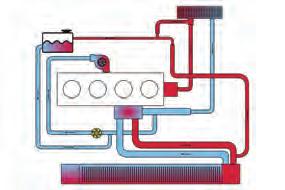
WWW.RDR.LINK/ABA026
Diagnostics top tips
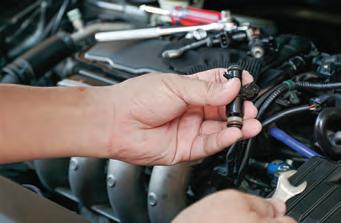

is the importance of mastering scan tools as they allow users to fix some incredible difficult faults with ease.

WWW.RDR.LINK/ABA027
Popular promotion
When visiting Fellten for the June episode of the Professional Motor Mechanic podcast, we filmed a short promotional video demonstrating how
In this popular online article, we asked product tester and diagnostics expert Tony Powell to share some of the knowledge and techniques he’s picked up during his diagnostics career which spans four decades. One tip he shares
Charitable tweets
When PMM received a press release from the automotive charity Ben announcing two upcoming fundraising events that garages get involved in, we were more than happy to share the news online. On Twitter we saw a lot of support for the story, encouraging the community to come together to raise funds for those struggling.
WWW.RDR.LINK/ABA028

74 SEPTEMBER 2023 PMM
ONLINE HIGHLIGHTS
The view from the PMM e-Newsletter


Each week we send out an email rounding up the latest news, products, stories and installation guides from across the industry. It’s the perfect way to keep on top of an ever-changing industry directly from your phone or computer. If you don’t have time to come to us, we’ll come to you! Let’s take a look at some of the most popular stories from recent months.
1




Lithium Ion and Lithium Iron differences


Coming in at number one is an explanation from Traction Charger about the differences between Lithium-ion and Lithium Iron batteries – two confusingly similar battery technologies. Hopefully this article has helped some frustrated techs out there!

2 3 4 5



Resolving an Audi A4's AdBlue warning fault
The Opus IVS team are on the job sorting out a troublesome Audi.
The Motor Ombudsman expands Service and Repair Code coverage

Find out more about the Motor Ombudsman extending its coverage to include mobile mechanics on pg. 32 or on the Industry Insights episode of the PMM Podcast.
ACtronics solves a Fiat fault
A strange quirk has been spotted in the Fiat Ducato odometer. Luckily, ACtronics has the solution.
Servicing ball joints the right way
Delphi Technologies gives its advice on servicing and replacing ball joints
LIFE ON THE RACETRACK WITH LUCAS OIL-SPONSORED DRIVER TONY LYNCH

MAKE A PITSTOP CONNECTIONS
Moving Up in Class: How mechanics influence racing results and team decisions
We’ve just made the decision to race in the British Super Retro Rallycross Championship in 2024. It’s a logical step. It’s the next big challenge, but the decision to move up is not mine alone. I say we, because whenever and wherever and we race, it’s the mechanics who face the biggest challenges.
As well as preparing the car for the race, they get it back on the track when there’s a problem and they know the difference between a good use of workshop time and a waste of workshop time. Our team view is that about 95 per cent of winning comes from pre-race preparation. Consequently, we don’t believe in spanner checks.
After every race, we strip the suspension system: the track control arms; the steering racks; the steering arms; all bearings are greased and the geometry is reset. It’s the difference between winning and losing. It means that on race days, new damage is immediately recognised. That gives me, as the driver, the confidence to race into each corner with total commitment.
Before every race, we re-check everything we checked after the previous race. Our support vehicle carries spares to cover the common failure issues and more besides. We know what’s on board and where everything is. As the driver, I need to stay out of trouble and be able to describe clearly what issues I’m having around
WITH
the track. In the event of a problem, it’s essential that all our time is spent responding to the crisis, not searching for parts that we haven’t got. If there’s an engine fire, a steering fault or a brakes problem, we have a procedure and that includes borrowing parts from other teams!

If I get something wrong during the race, such as I take a hit or flip the car, things become more complicated. We have a plan for that, and it’s called improvising — that’s where team and race experience really count.
There’s no doubt that our preventive maintenance policy has been the key to our team’s consistency over the seasons. Attention to detail has paid off. Since we have been racing under the Lucas Oil brand, we have won five of the seven racing classes within our reach – some of them more than once. To date, our track record includes:

■ Two Minicross Driver’s Association National Championships
■ British BMW Mini Rallycross Championship
■ British Motor Sports Association Super National Championship
■ Two British Trial & Rally Drivers Super Modified Championships
■ British Retro Rallycross Championship
Super Retro will be a major challenge. As a driver, when you race, you want to test yourself against the best but at the same time, you temper your degree of racing risk with your responsibility to the team of mechanics. After all, they keep you in the race and in the Championship and make winning possible.
QUIZ
Try and figure out what connects each of the answers!
1. Which royal is currently first in line to the throne?
2. Who founded Ford Motor Company in Michigan in 1903?

3. Which yellow cartoon character has the catchphrase “Okily Dokily!”
4. Who was voted European Footballer of the year following England’s world cup win?
5. "If you’re going through hell, keep going” was said by which British Prime Minister?
6. Which Canadian singer features on the Titanic soundtrack singing “My heart will go on”?
7. Who played Carrie Bradshaw in Sex and the City?
8. “Bad Romance” and “Poker Face” are hits by which singer?
9. Which Spanish tennis player won Wimbledon in 2008?
10. What links all these answers together?




 Answers: 1.Prince WIlliam 2.Henry Ford 3.Ned Flaunders 4.Bobby Charlton 5.Whinston Churchill 6.Celine
Dion 7.Sarah Jessica Parker 8.Lady Gaga 9.Rafael Nadal 10.They’re all left-handed
Answers: 1.Prince WIlliam 2.Henry Ford 3.Ned Flaunders 4.Bobby Charlton 5.Whinston Churchill 6.Celine
Dion 7.Sarah Jessica Parker 8.Lady Gaga 9.Rafael Nadal 10.They’re all left-handed
PRODUCT SPOTLIGHT
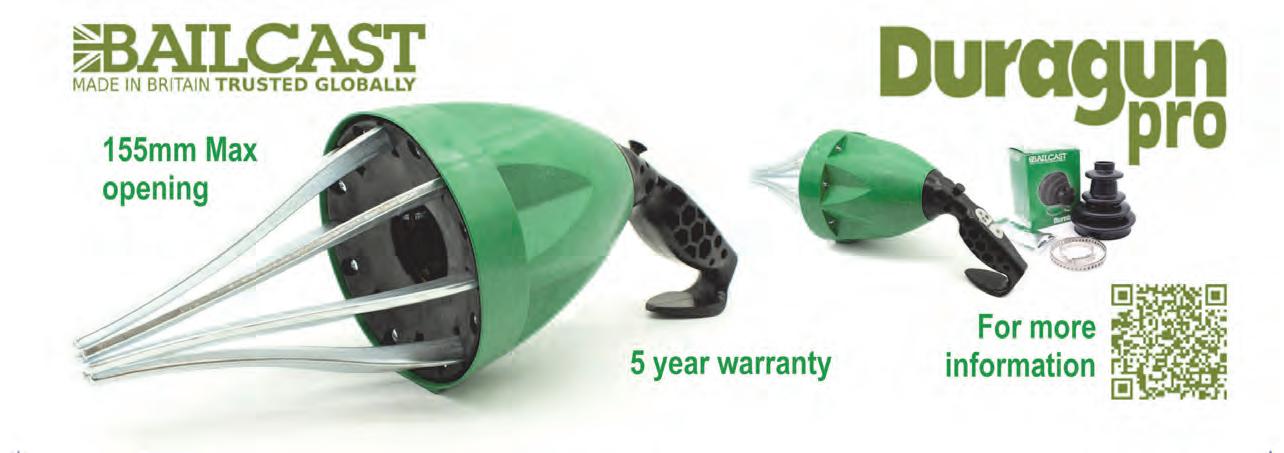
Autel’s DS900EU
PMM showcases the latest diagnostic tool from Autel.
Entry level
The DS900EU is the new entry level Autel third generation diagnostic tool, which is the ‘little brother’ of the MaxiSYS MS906sPro and is loaded with advanced software and the very latest vehicle protocols; DoIP and CAN-FD.
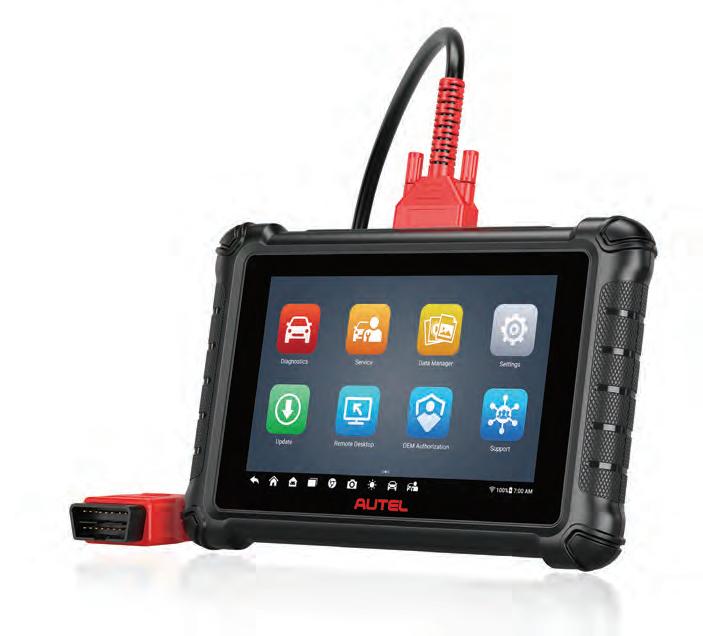
Coverage
E DS900EU has extensive vehicle coverage for more than 70 US, Asian and European vehicle makes. It has wide OE-Level system coverage for all electronic systems, with complete capabilities for codes, live data, active test, ECU information, adaptation, matching, etc. According to tool supplier, the DS900EU is the ‘best in class solution’ for the garage and workshop.
64GB of memory
Further, the DS900EU tablet has powerful hardware with the Rockchip RK3566 Quad core Processor 4x 1.8GHz(A55), colour 8in. touch screen, built-in lithium battery, 64GB of memory, 4GB RAM and Smart AutoVIN technology. The DS900EU utilises the latest Android 11 operating system and with a 7,000mAh Lithium- polymer battery, is capable for operating for the duration of a technicians working day between charges.
Security gateway
It is also possible to purchase and apply the latest manufacturer secure gateway permissions to the DS900EU, allowing it to work with the very latest software secure vehicles for the FCA, Renault and Nissan.
NEW TOOLS
WANT TO KNOW MORE?FOR MORE INFORMATION WWW.RDR.LINK/ABA029
What’s new IN THE WORKSHOP? with Freya
Best practice tips
Welding in the workshop
The right welder can be an incredibly worthwhile investment for a garage, allowing for quick bodywork repairs and even repairing damaged wheel rims. The same can be said for a good quality plasma cutter. Here are some best practice guidelines from Draper Tools. You’ll need the right accessories to use your welder safely, these include:
■ Welding helmet, an essential for any welder, make sure your helmet is EN175 and CE approved.
■ Welding apron and gloves, leather is a good choice for protection and flexibility.
■ Welding curtain, workshops should invest in a flame retardant welding curtain to protect from welding spatter and UV and IR radiation. Check your curtain conforms to BS EN 1598.
■ Anti-Spatter Spray – this is designed to prolong tip and shroud life and prevent adhesion of weld spatter to your work area.
■ Other essentials to look out for, dependent on your model of welder, include nozzle cleaners, scratch brushes, gas regulators, welding clamps and more.
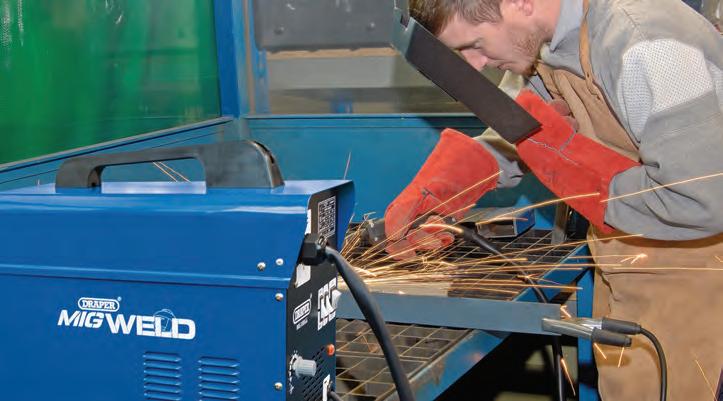
Welding Best Practice
Safety first: Always protect yourself with the correct PPE and welding accessories. Proper preparation is key, make sure you’ve prepared the metal you’ll be working with and check your positioning and your angles are accurate too. Ensure your work area is free of fire hazards too, be careful not to weld near electrical systems or with the vehicle’s battery connected. Always disconnect the battery first. Avoiding errors: One of the most common welding mistakes often comes down to simply using the wrong power supply. If your welder requires 32A power socket, do not attempt to use 13A plug. Store your welding electrodes and wire carefully and in a securely sealed environment, moisture and poor temperatures will affect their lifespan. Make sure you’re fitting the correct tip for
Tools for success
Sealey’s newest tool promotion, running until September 30th, features over 180 new products including the LED15WFL 3-in-1 rechargeable floodlight. This has a 1000lumen output and a design that allows if to be folded into the stand, enabling dual-side room lighting. The promotion also highlights the company’s one-battery-fitsall ranges such as the fast-charging 10.8V series for light-duty tasks, the compact 12V
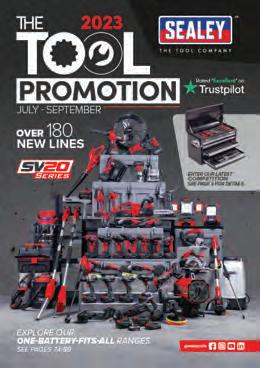 Coleman
Coleman
wire size you’re using. This is common mistake which can mean the wire won’t feed. Extension leads being used on welders is not advisable unless you use 2.5-3mm core wire and not over 6 meters long. Always ensure the earth clamp is fitted to a good earthing point clean and not, for example, attached to a painted or rusted surface.
Maintenance: Correct cleaning and maintenance of your machine will help prolong its life and keep it operating smoothly, always refer to the manufacturer’s guidelines for this. Replace any worn or damaged parts of your welder when they are spotted during routine inspection to maintain your welders’ performance and safety.
WANT TO KNOW MORE?
WWW.RDR.LINK/ABA030
series for tight spaces and the 20V series with high outputs and operating time.
With over 40 tool bodies to choose from, along with single or twin chargers and a range of lithium-ion batteries, the SV20 series offers a versatile way to build your own cordless tool kit over time.
WANT TO KNOW MORE?
WWW.RDR.LINK/ABA031
78 SEPTEMBER 2023 PMM
MESSAGE ME YOUR PRODUCT RELEASES OR YOUR FAVOURITE PRODUCTS AT FCOLEMAN@HAMERVILLE.CO.UK
Keeping it cool
Denso has created the PowerEdge brand to aim to fulfil demand from customers looking for high quality and good value replacement parts and has now expanded the range to include thermal management products with the introduction of A/C compressors. Utilising the company’s A/C system development experience,
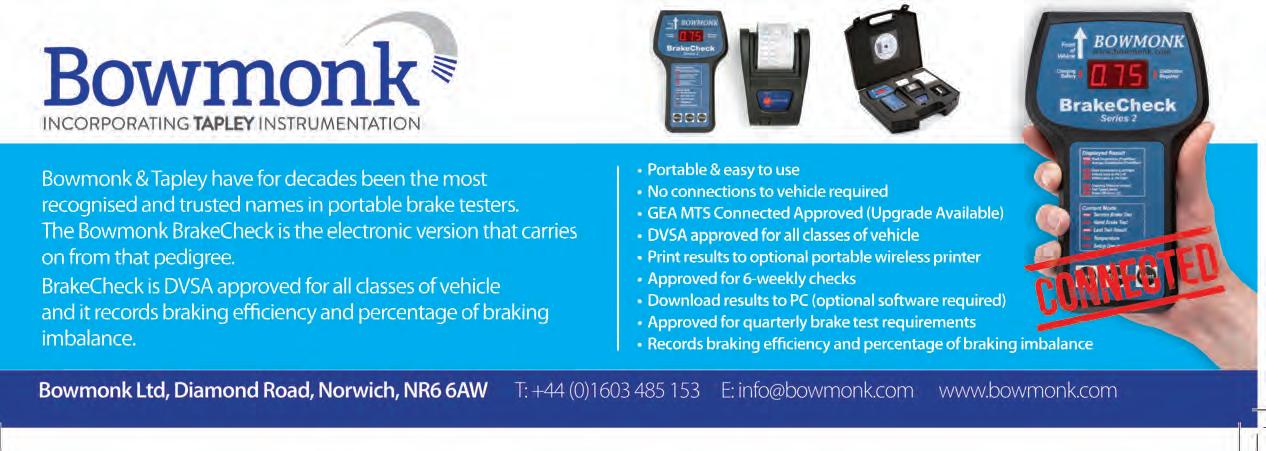
Dress to impress
Snickers Workwear trousers have sustainable, street-smart, body-mapping features, making them ideal for technicians. The range features the AllroundWork trousers, the FlexiWork trousers aiming to deliver freedom of movement and the LiteWork trousers, keeping wearers cool, dry and ventilated.

PowerEdge compressors are said to offer a combination of durability, performance, and value, produced using quality components and materials and tested to stringent performance standards.
WANT TO KNOW MORE?
WWW.RDR.LINK/ABA032
LETTERS Writetotheexperts
We recently received an email from a reader who has been reading an article on the website on how to replace a timing chain on a Vauxhall Corsa and she was asking if she should remove the water pump to do this.
We reached out to FAI Auto and Dominic Moxon, technical director, had a simple answer: “The only reason for removing a water pump during installation is if it blocks access to the timing setup. In this instance, we don’t believe that the water pump causes any issues and can stay mounted on the vehicle.”
If you have any queries you want to PMM team to answer, reach out to pmm@hamerville.co.uk.
The trousers also deliver certified protection with the patented KneeGuard system and Cordura reinforcement, aiming for greater flexibility, comfort and durability.
WANT TO KNOW MORE?
WWW.RDR.LINK/ABA033
What’s new
IN THE WORKSHOP?
with Freya Coleman
NEW TO RANGE
■ TMD Friction has introduced three new brake disc references to its Textar brand range. The introductions include two brake disc parts, 92218905 and 92219005, for Porsche 911, 911 Convertible and 911 Targa models (1997-2019).
■ MAHLE’s new additions include five air filters include part number LX5364 to cover Hyundai Kona and KIA Xceed vehicles, LX4961 to fit Audi Quattro Hybrid and part number LX5595 suitable for Renault Captur II, Clio V, Megane IV and Arkana. It’s two oil filter additions include part number OC1570, is suitable for Suzuki Swift and Ignis applications, and the brand’s spin on oil filter (reference OC1268/8) covers Vauxhall Astra K and Insignia B vehicles.
■ The FIRST LINE AND BORG & BECK lines have expanded to include 41 new parts such as 21 new references in the steering and suspension product group, including a front-axle suspension arm
FCA7999/BCA7999 (left-hand) and FCA8000/BCA8000 (right-hand), for Peugeot 208 e and Opel/Vauxhall Corsa e 2019.
■ MEYLE’S range has expanded include the two component brake discs for BMW and Mercedes models that claim to offer accurate fit, low offset, reduced weight and the associated fuel savings and decrease in CO2 with OEM parts.
A helping hand
Protection
GIVEAWAY:
To celebrate the release of its Nitrex RP range, Unigloves is giving away 5 sets of the gloves to 5 lucky PMM readers. To enter WWW.RDR.LINK /ABA034
The Nitrex RP sustainable glove range from Unigloves claims to offer protective performance including mechanical, cut and impact protection, whilst reducing the use of virgin oil-based polyesters, water, CO2 and plastic packaging. Ideally suited to automotive workers where cut and abrasion risks are prevalent, every product in the new range is tested and certified to EN388.
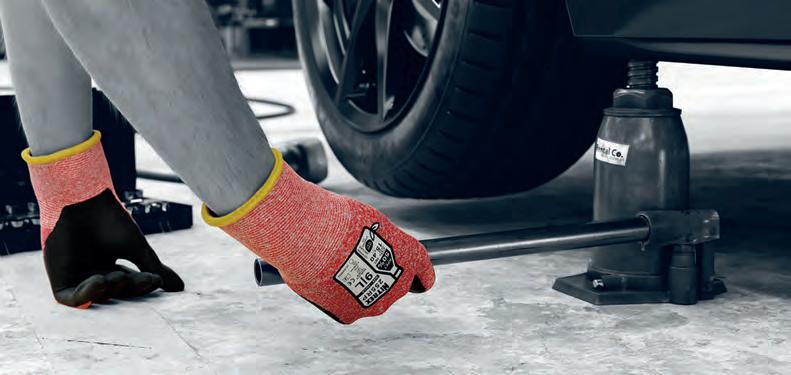
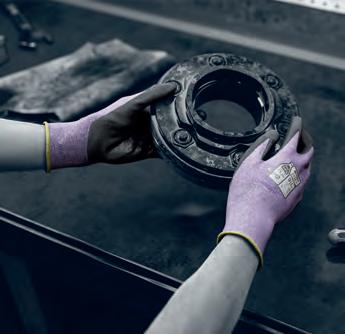
Non-toxic
Every glove within the new Nitrex RP range is also certified to the OEKOTEX standard 100 said to confirm that every component of the product, from the fabric to the thread and accessories, has been rigorously tested against a list of up to 350 toxic chemicals. This means these gloves are not only kinder to the planet but contain no harmful substances that could impact workers’ health.
Sustainable
In addition to offering high levels of comfort and flexibility, the use of durable palm coatings including environmentally friendly water-based PU and nitrile, allows enhanced dexterity and flexibility to reduce hand fatigue. Four gloves out of the five within the range are also touch screen compatible. Each of the gloves in the range also feature the recycled claim standard, associated with products containing recycled materials.
WANT TO KNOW MORE?WWW.RDR.LINK/ABA035
80 SEPTEMBER 2023 PMM
MESSAGE ME YOUR PRODUCT RELEASES OR YOUR FAVOURITE PRODUCTS AT FCOLEMAN@HAMERVILLE.CO.UK
Levelling up
Ring has upgraded its MAGFLex Twist, now featuring USB-C charging which now not only conforms to new EY laws but is rapidly becoming the standard charging option. It now has two light outputs – high (450 lumens) and low (250 lumens) – and an updated charge status indicator so users know how much battery life is left. Furthermore, if it does need charging, it will no longer take four and half hours but just two and a half to charge fully. The new model is also slightly smaller for ease of use, but has kept the magnetic base and rear to attach to surfaces and a hook.

WANT TO KNOW MORE?
WWW.RDR.LINK/ABA036
bundle Get organised!
These organiser tool boxes from Laser Tools are here to help you get your tools in check, designed to be robust and ideal for carrying hand tools, cordless power tools, drill bits, sockets and consumables. There are two sizes available:
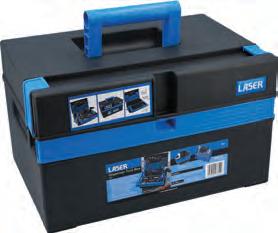
■ 130mm-wide example (part number 8651) features a fold-down tool organisers that holds drill bits and screwdrivers and a slide-out removable tray for keeping smaller tools.
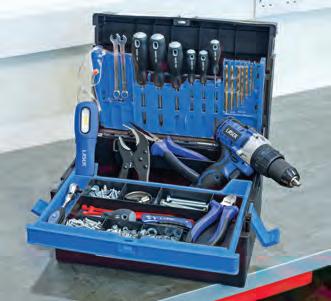
■ The larger 500mm box (part number 8652) features a slide-out organiser suitable for drill bits, hex keys, etc, plus the removable tray for keeping your smaller tools, screws, nuts and bolts.
WANT TO KNOW MORE?
WWW.RDR.LINK/ABA037
In 2019, Ecobat Battery discovered that nationally 43 per cent of workshops turned away start/stop battery replacement work due to either being unsure of the process or aware that potential problems could result if they were not fitted correctly, which meant they were losing out on the revenue it offers, estimated at £185 per installation at that time. Ecobat Battery addressed the problem head-on and introduced the ONE BOX, a solution that consolidated all the equipment needed to test and install start/stop batteries into a single package.
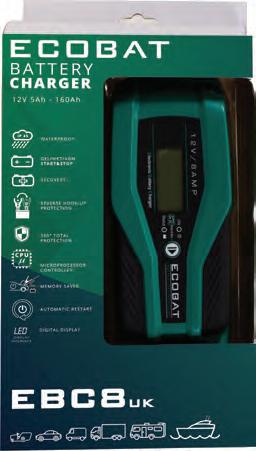
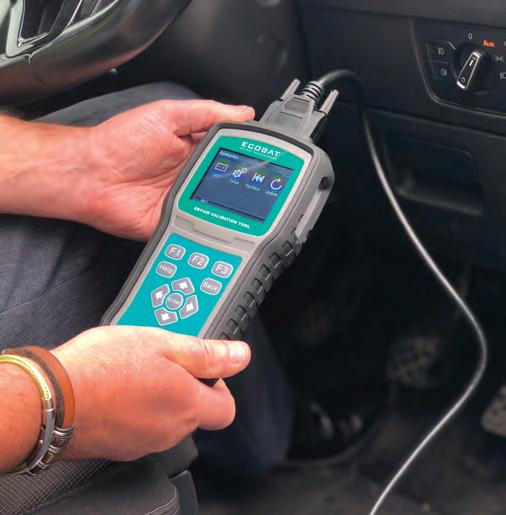
The components brought together in the ONE BOX bundle, include an EBT780 battery analyser to accurately assess the condition of the existing battery, an EBC8UK battery charger and OBD lead to support the vehicle’s ECU/data storage during the replacement process and an EBT420 battery validation tool to ensure the new AGM/EFB battery is correctly assimilated into the vehicle’s battery management system. However, the package can also be supported with signage and point-of-sale material, to allow workshops to fully promote their start/stop replacement capability to motorists.
WANT TO KNOW MORE?
WWW.RDR.LINK/ABA038
PMM SEPTEMBER 2023 81
Battery
Here is a useful summary of all the adverts that appear in this issue of Professional Motor Mechanic. Each is listed with its page number and a direct URL that will get you straight to the relevant online information

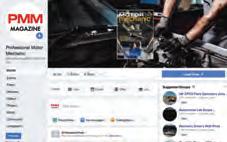
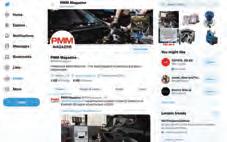
Alliance Automotive/Apec ..............(page 58) www.rdr.link/ABA100
Arnott Europe ..................................(page 53) www.rdr.link/ABA101
Atlas Copco ....................................(page 43) www.rdr.link/ABA102
Bailcast ............................................(page 77) www.rdr.link/ABA103
Banner Batteries ..............................(page 75) www.rdr.link/ABA104
Bonaprene Prods Ltd/Polybush ......(page 62) www.rdr.link/ABA105
Borg Warner ....................................(page 14) www.rdr.link/ABA106
Bowmonk ........................................(page 79) www.rdr.link/ABA107
Clarios ............................................(page 68) www.rdr.link/ABA108
Contitech Power Trans Group ........(page 33) www.rdr.link/ABA109
Ecobat Battery Tech ........................(page 72) www.rdr.link/ABA110
Esprit ................................................(page 9) www.rdr.link/ABA111
Ferdinand Bilstein Ltd ......................(page 6) www.rdr.link/ABA112
Ferdinand Bilstein Ltd ....................(page 13) www.rdr.link/ABA113
Jack Sealey Ltd ..............................(page 35) www.rdr.link/ABA114
JHM Butt & Co ........................(loose insert) www.rdr.link/ABA115
Kalimex Ltd ....................................(page 67) www.rdr.link/ABA116
Karnetic/Autel ................................(page 25) www.rdr.link/ABA117
Klarius Products Ltd ......................(page 36) www.rdr.link/ABA118
KYB ................................................(page 55) www.rdr.link/ABA119
MAHA UK ......................................(page 67) www.rdr.link/ABA120
Mann & Hummel (UK) Ltd ............(page 29) www.rdr.link/ABA121
Maverick Diagnostics ......................(page 36) www.rdr.link/ABA122
Mechanex ........................................(page 50) www.rdr.link/ABA123
Motul SA ........................................(page 62) www.rdr.link/ABA124
Niterra (UK) Ltd/NGK ....................(page 20) www.rdr.link/ABA125
Pico Technology ......................(page 83/IBC) www.rdr.link/ABA126
PMM Online ....................................(page 46) www.rdr.link/ABA127
Primalec ..........................................(page 67) www.rdr.link/ABA128
Ring Automotive..............................(page 72) www.rdr.link/ABA129
Robert Bosch Ltd ............................(page 19) www.rdr.link/ABA130
Schaeffler Auto ..........................(page 2/IFC) www.rdr.link/ABA131
Schaeffler Auto ..................................(page 3) www.rdr.link/ABA132
Tool Connection ................................(page 4) www.rdr.link/ABA133
Topdon UK ......................................(page 43) www.rdr.link/ABA134
VLS (UK Ltd ..................................(page 31) www.rdr.link/ABA135
Wynn Oil UK ........................(page 84/OBC) www.rdr.link/ABA136
KEEP UP TO DATE WITH PMM ADVERTISEMENT INDEX A FOLLOW US ON TWITTER @PMMMAGAZINE B LIKE US ON FACEBOOK @PROFESSIONALMOTORMECHANIC VISIT OUR WEBSITE WWW.PMMONLINE.CO.UK
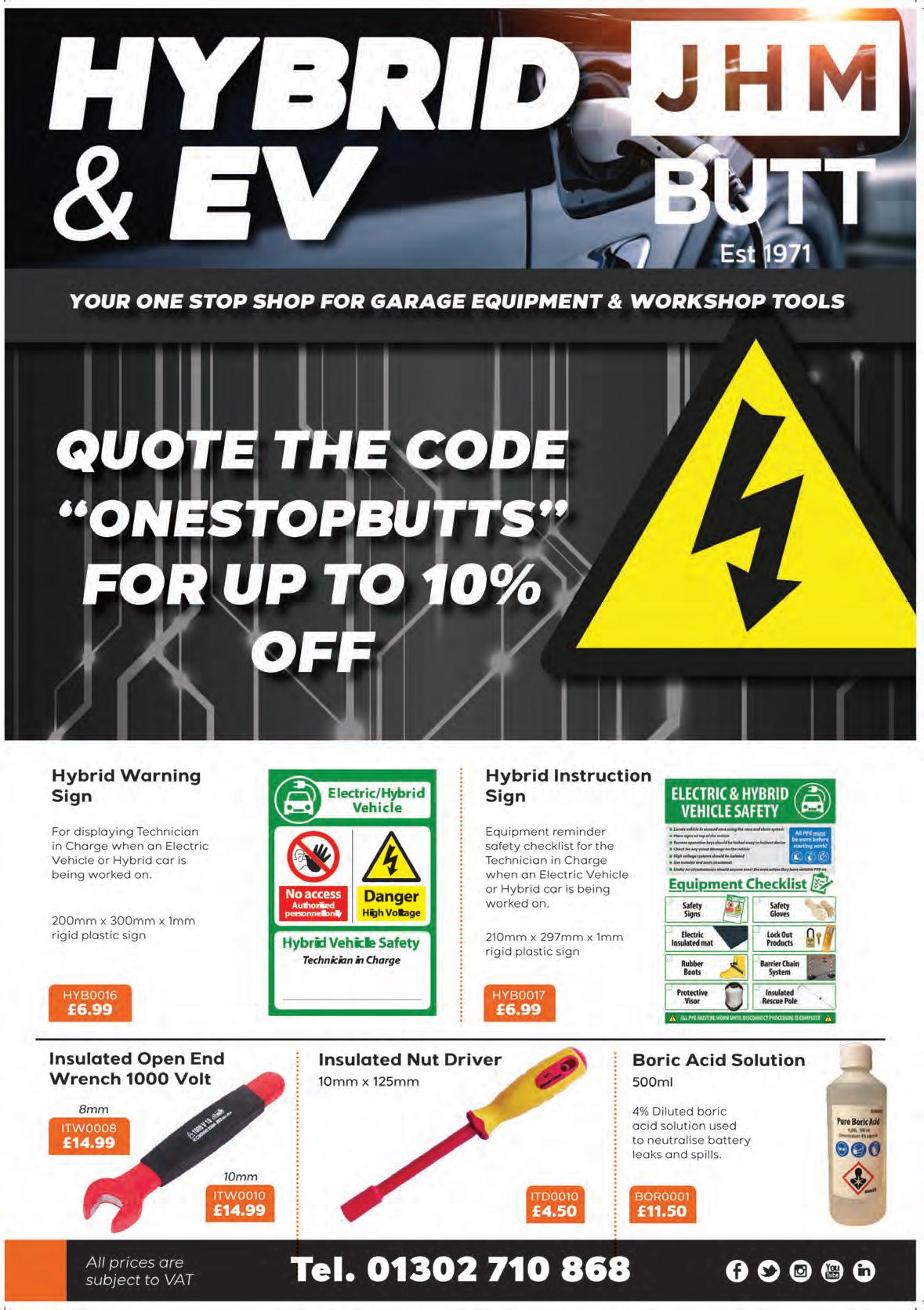
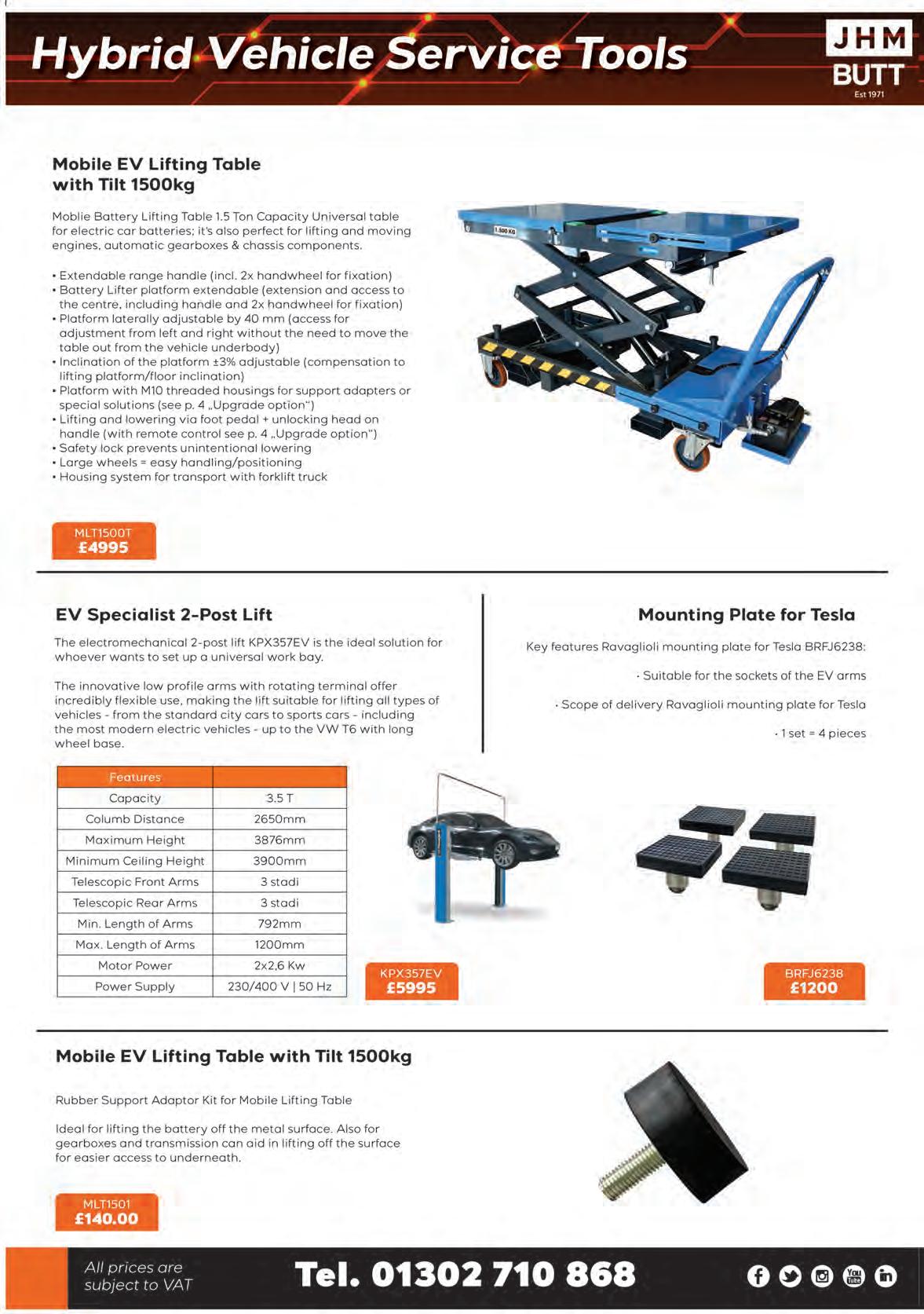
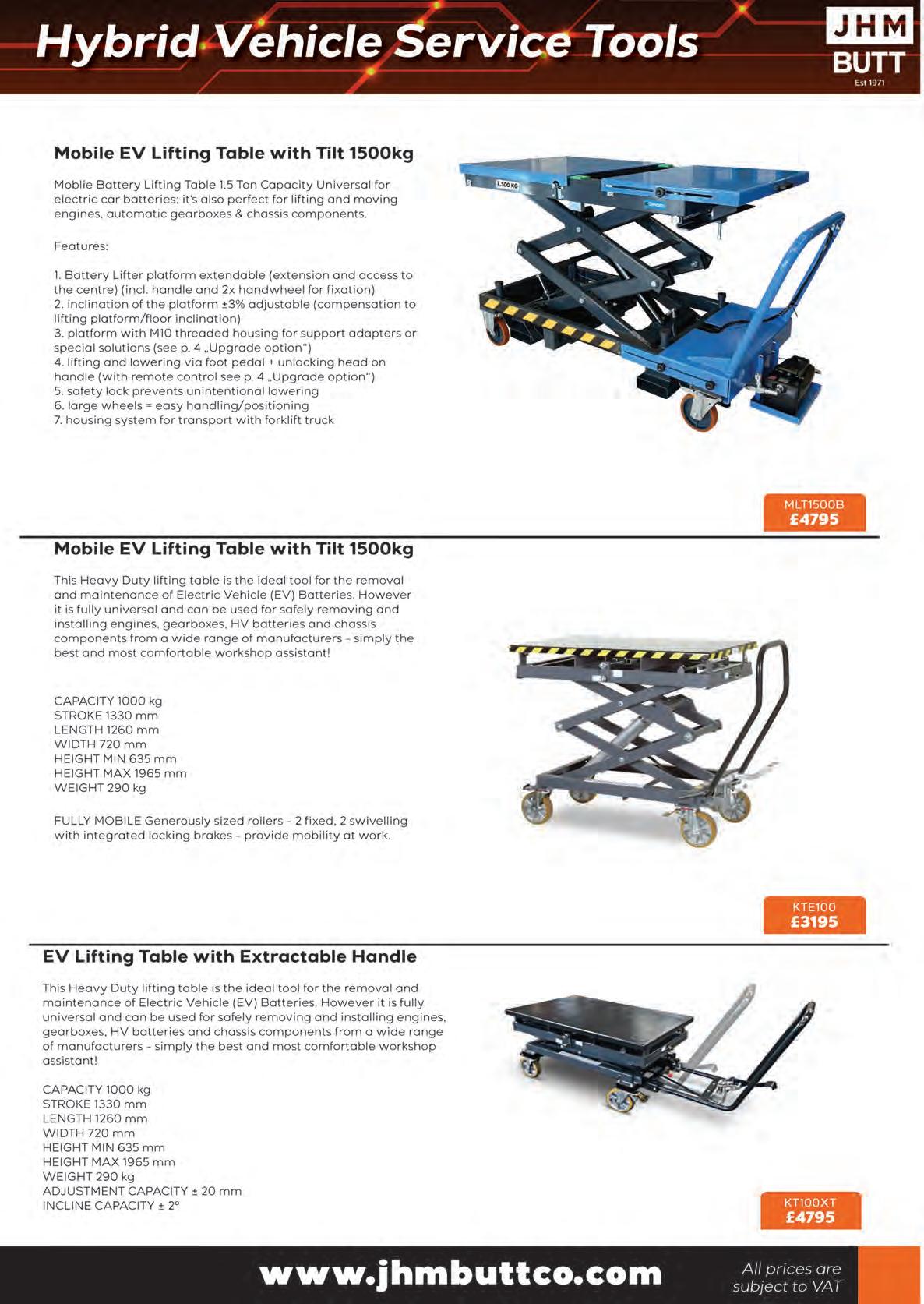

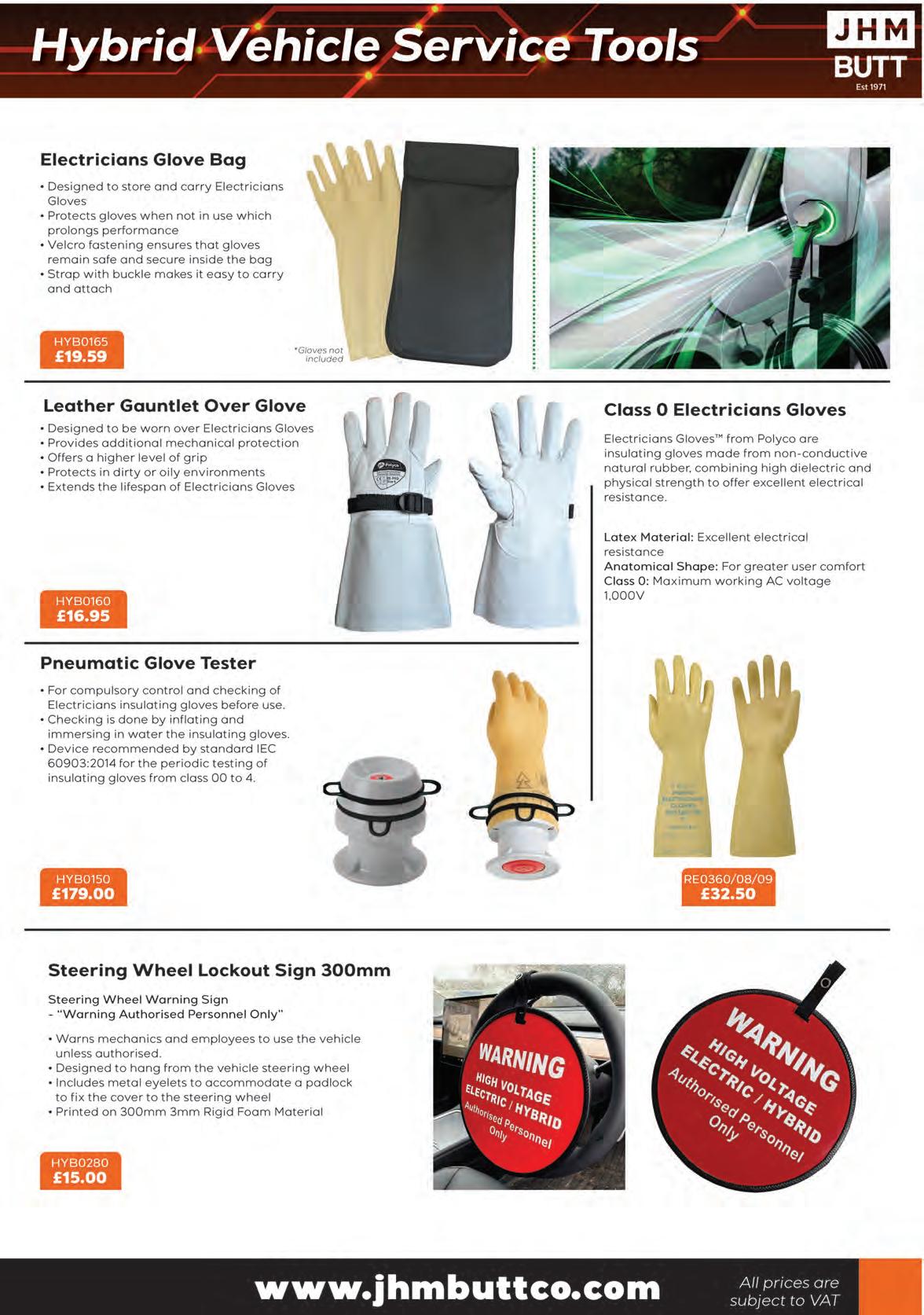
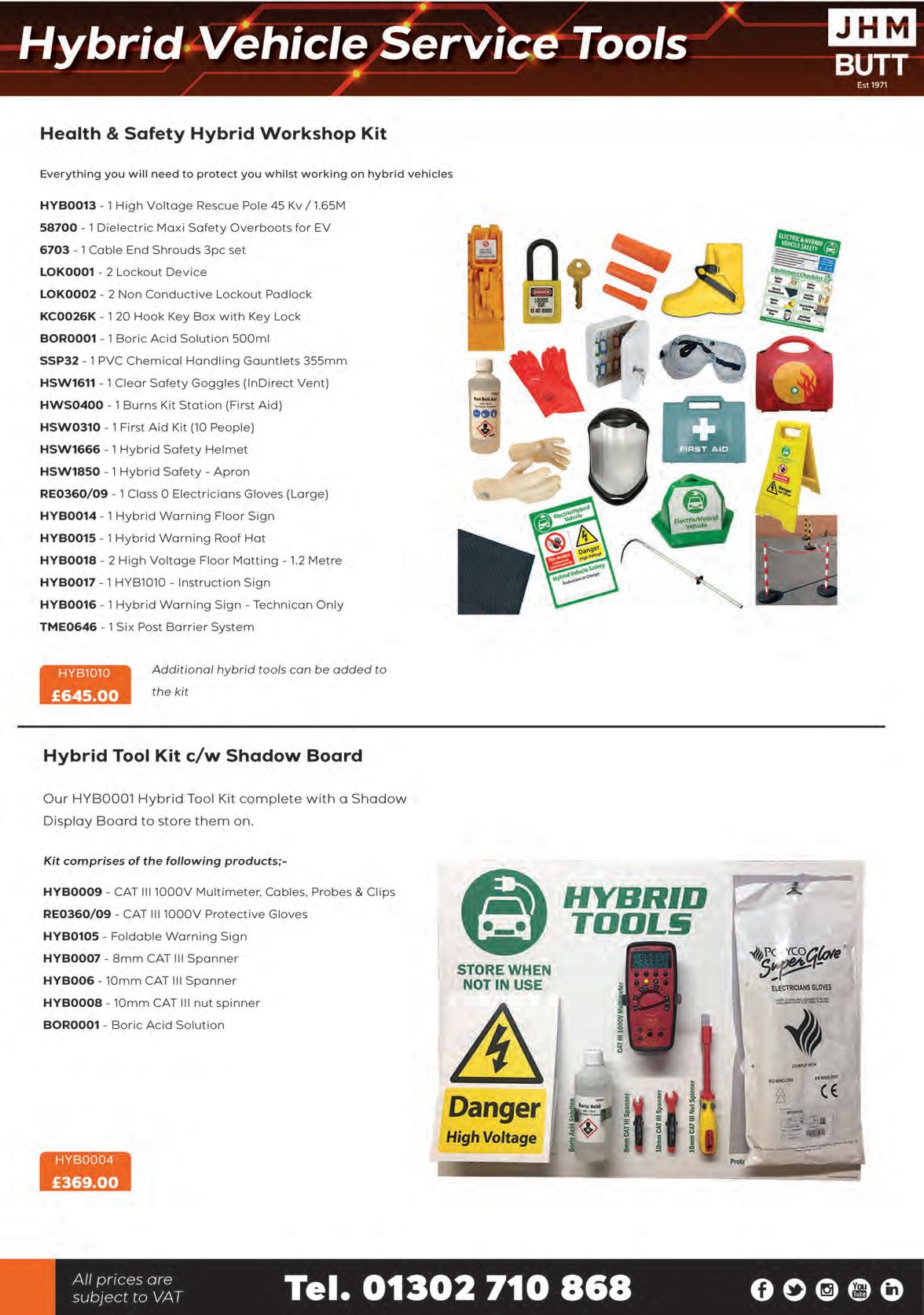
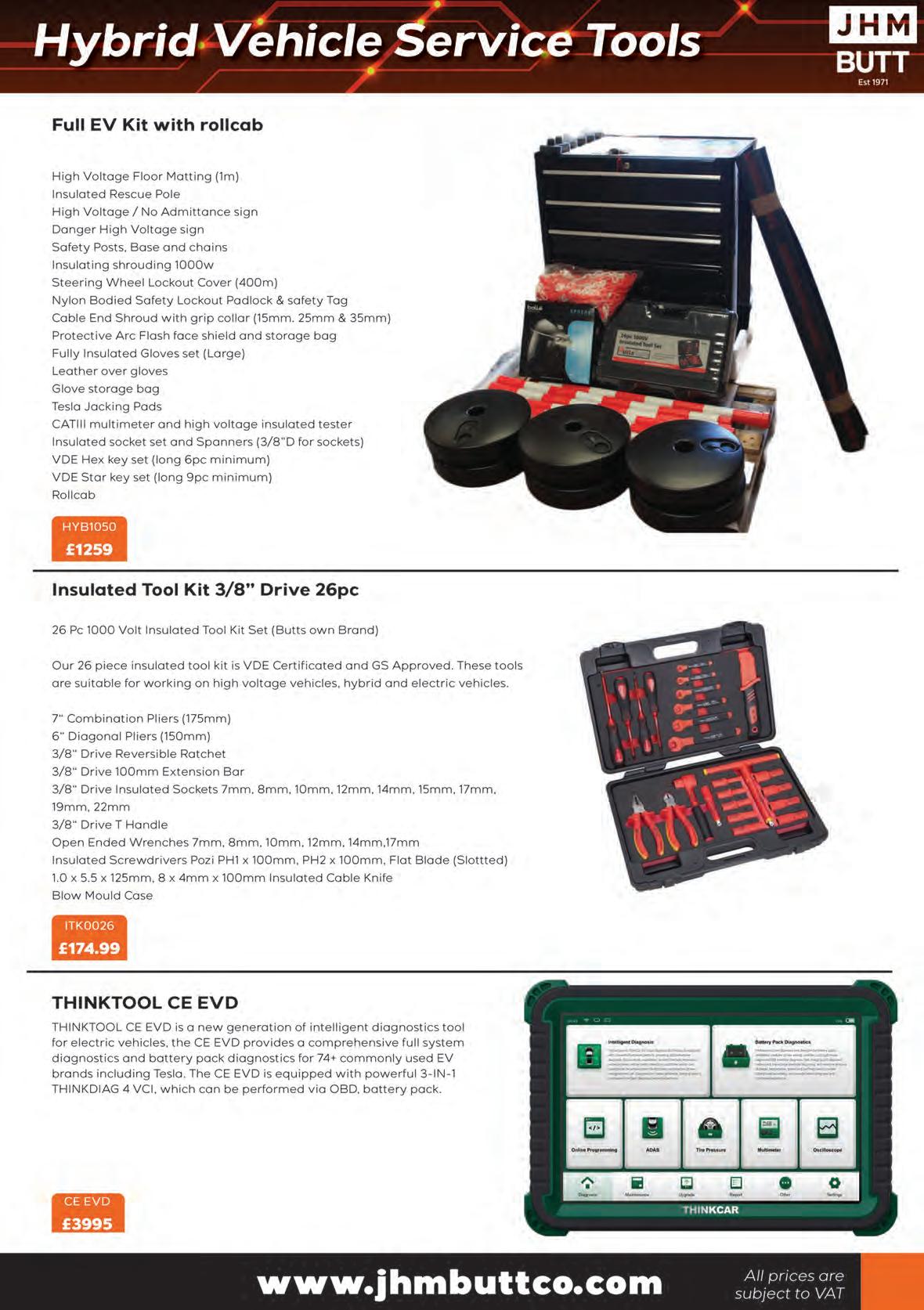
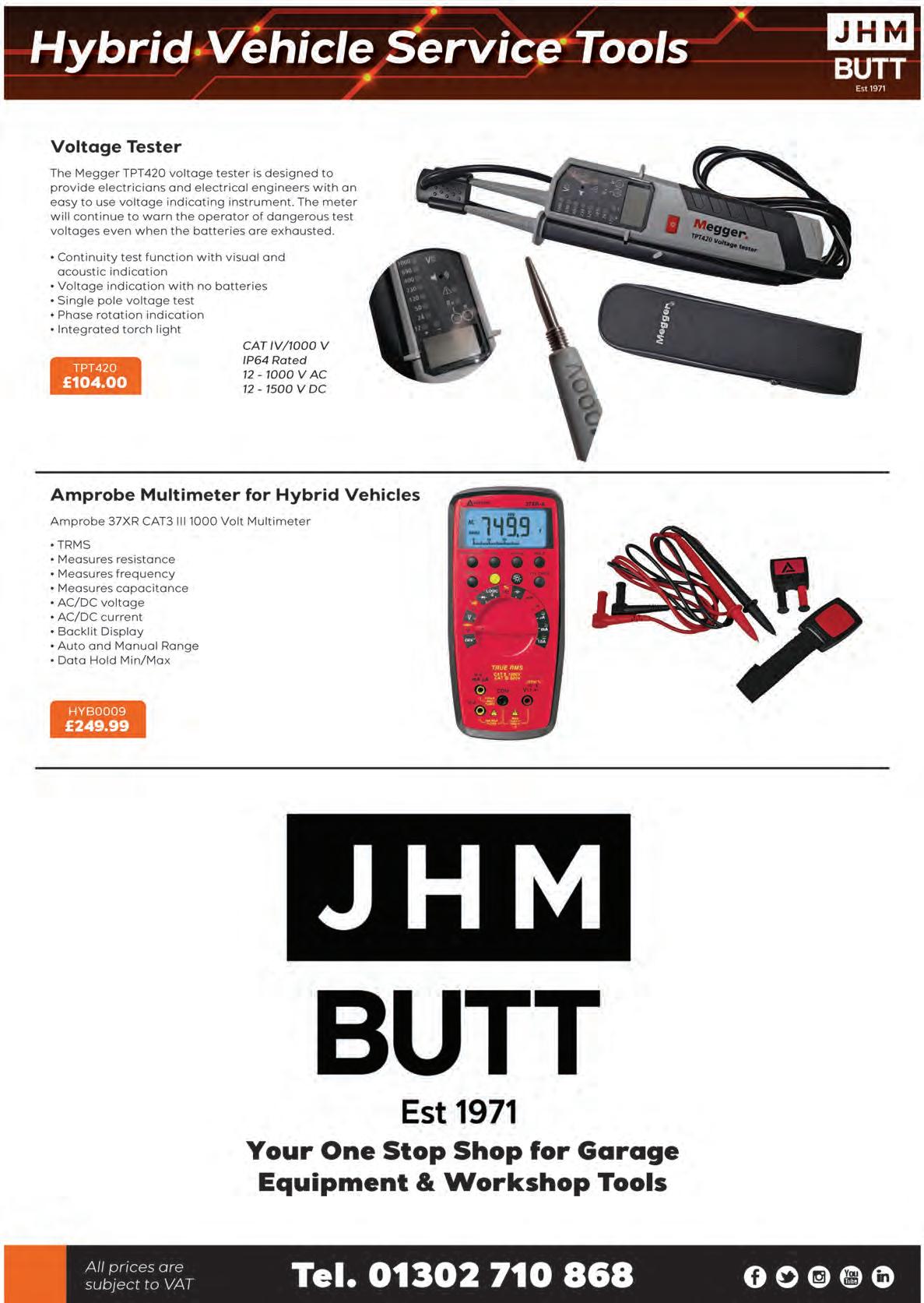
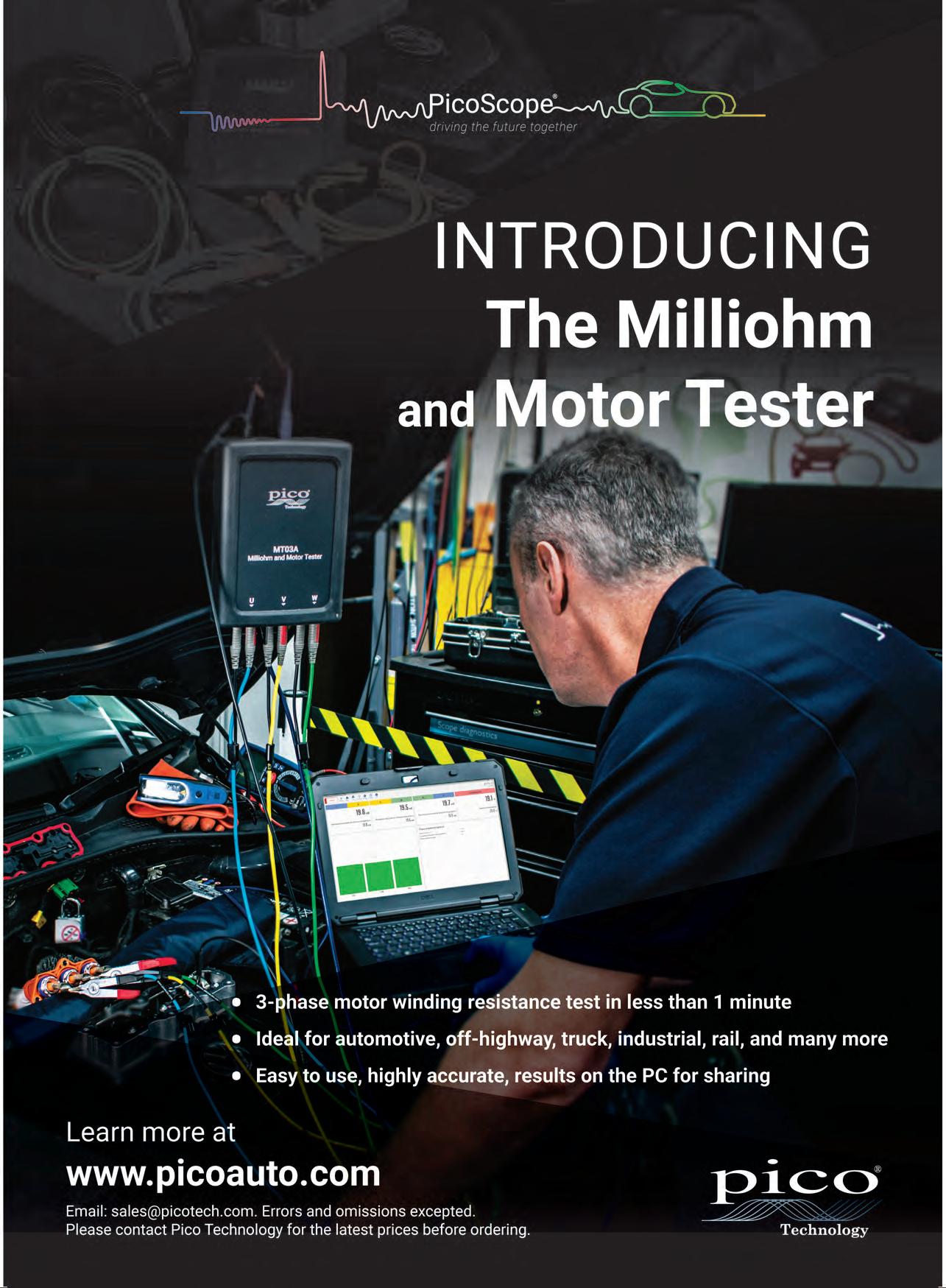
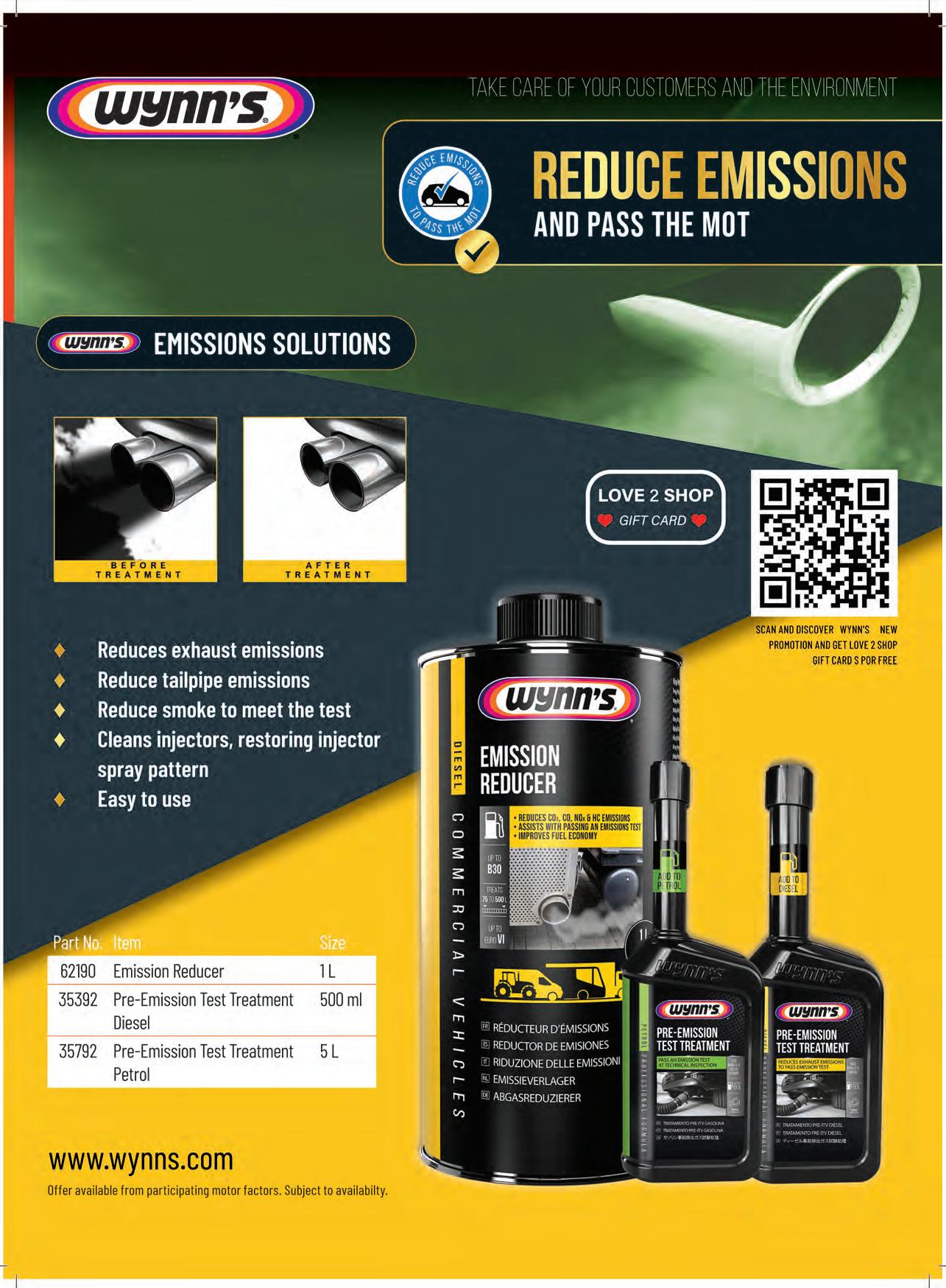
























 Editor KIERAN NEE
Editor KIERAN NEE
 News and Products Editor
News and Products Editor

































































































 CREDIT
CREDIT








































































































































 Answers: 1.Prince WIlliam 2.Henry Ford 3.Ned Flaunders 4.Bobby Charlton 5.Whinston Churchill 6.Celine
Dion 7.Sarah Jessica Parker 8.Lady Gaga 9.Rafael Nadal 10.They’re all left-handed
Answers: 1.Prince WIlliam 2.Henry Ford 3.Ned Flaunders 4.Bobby Charlton 5.Whinston Churchill 6.Celine
Dion 7.Sarah Jessica Parker 8.Lady Gaga 9.Rafael Nadal 10.They’re all left-handed



 Coleman
Coleman





















